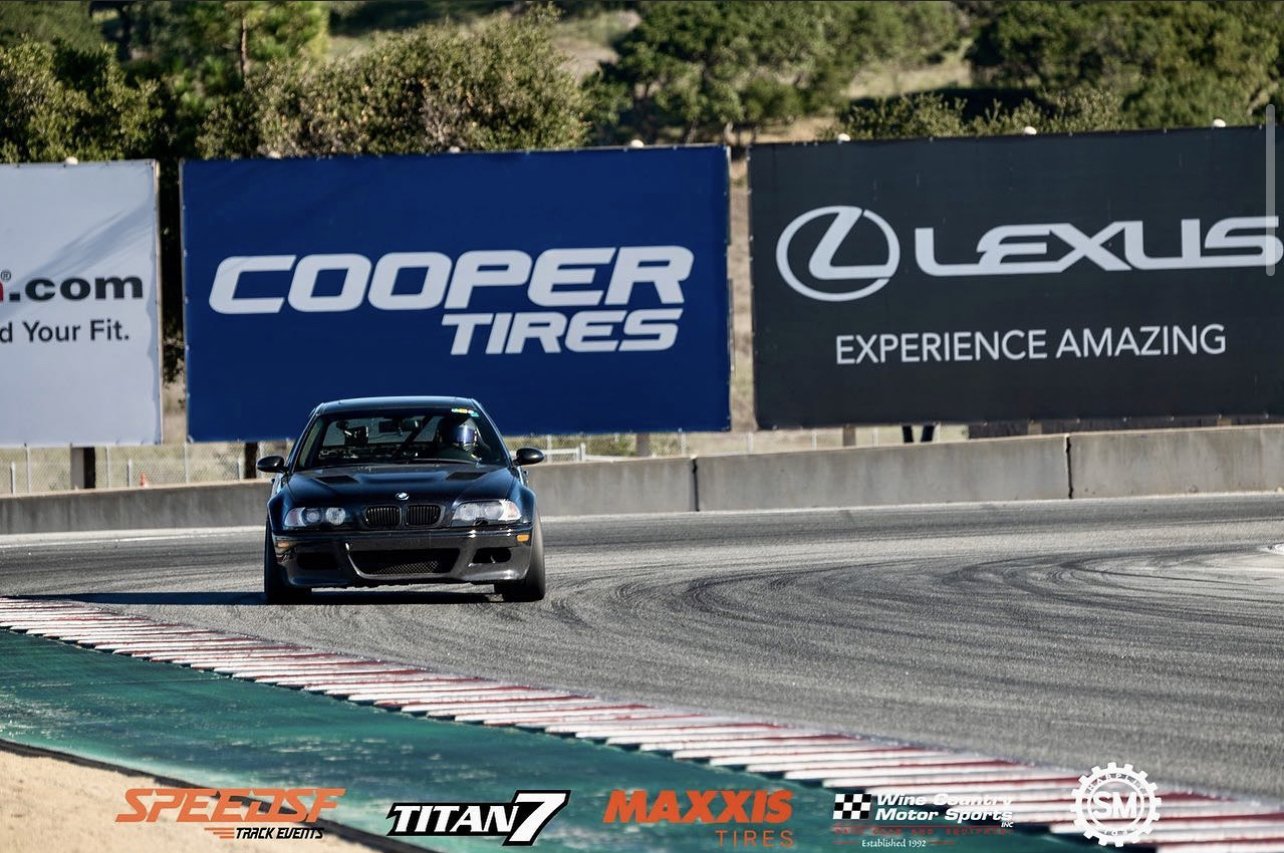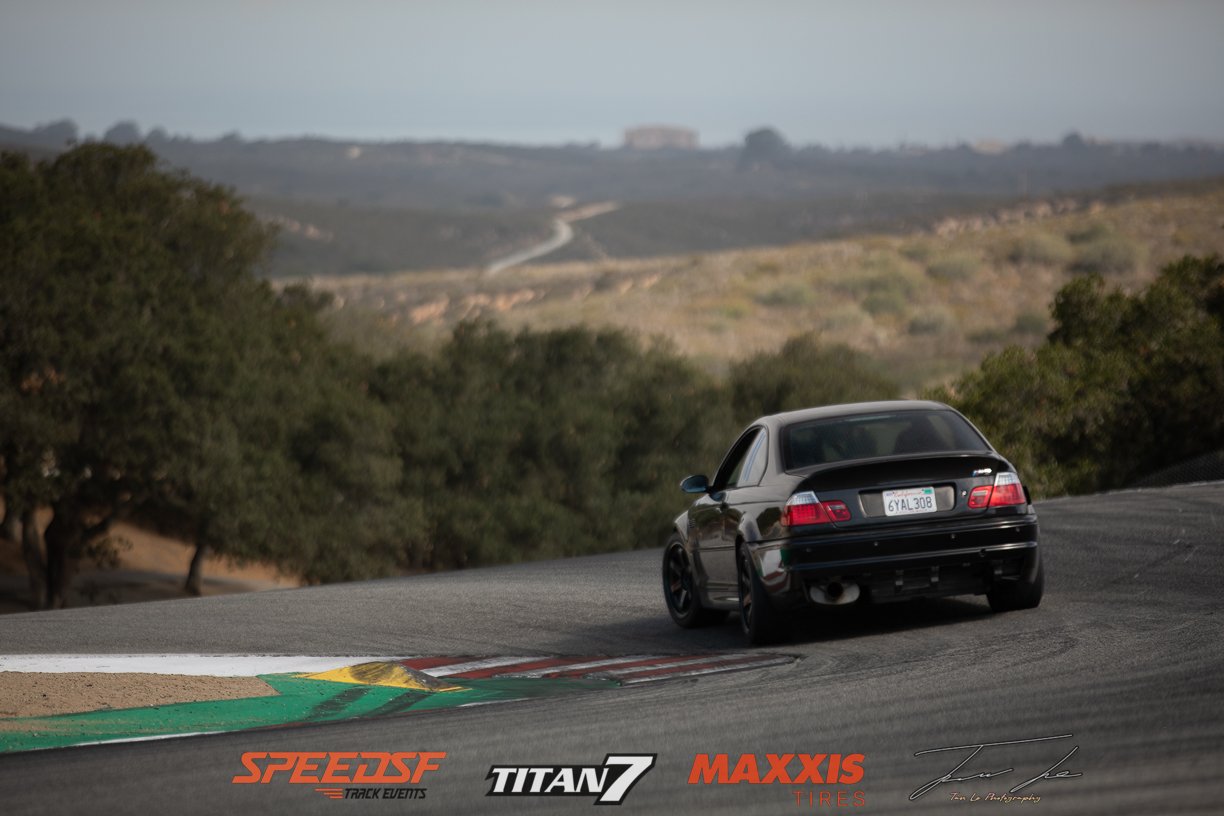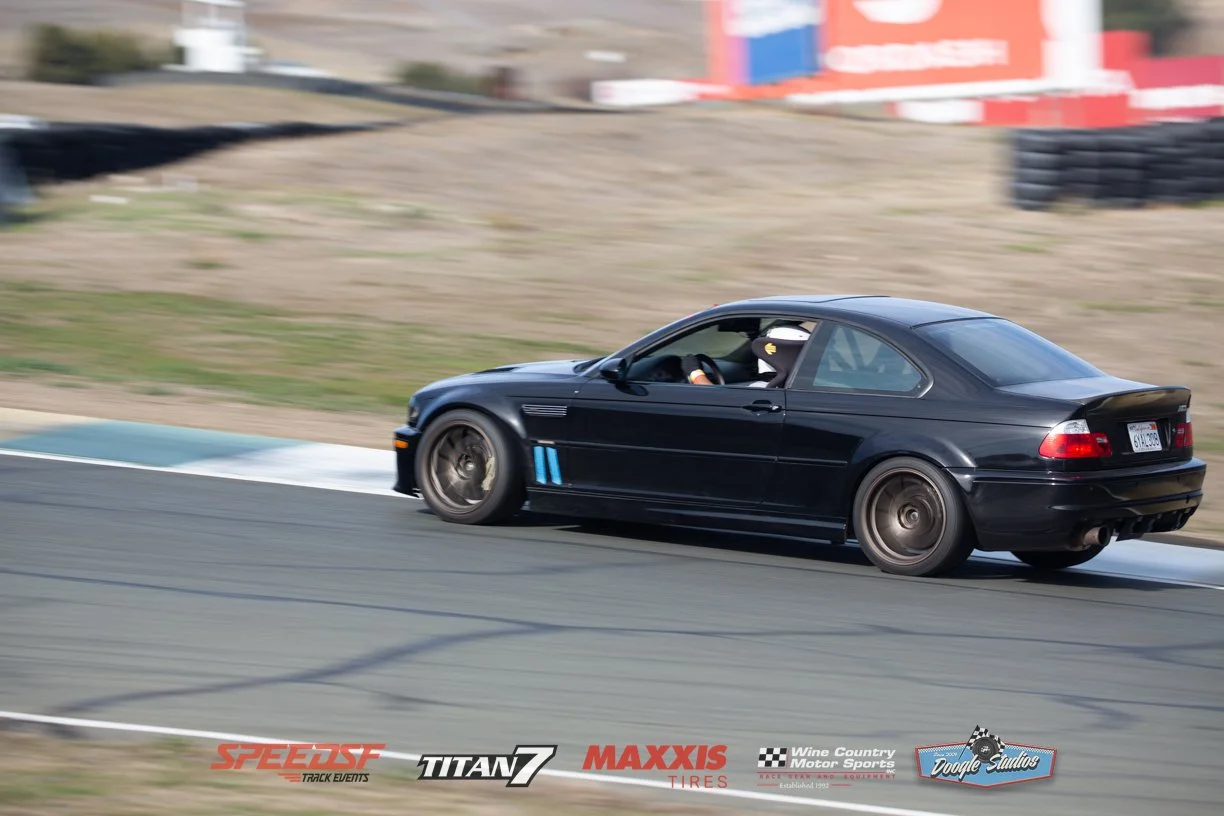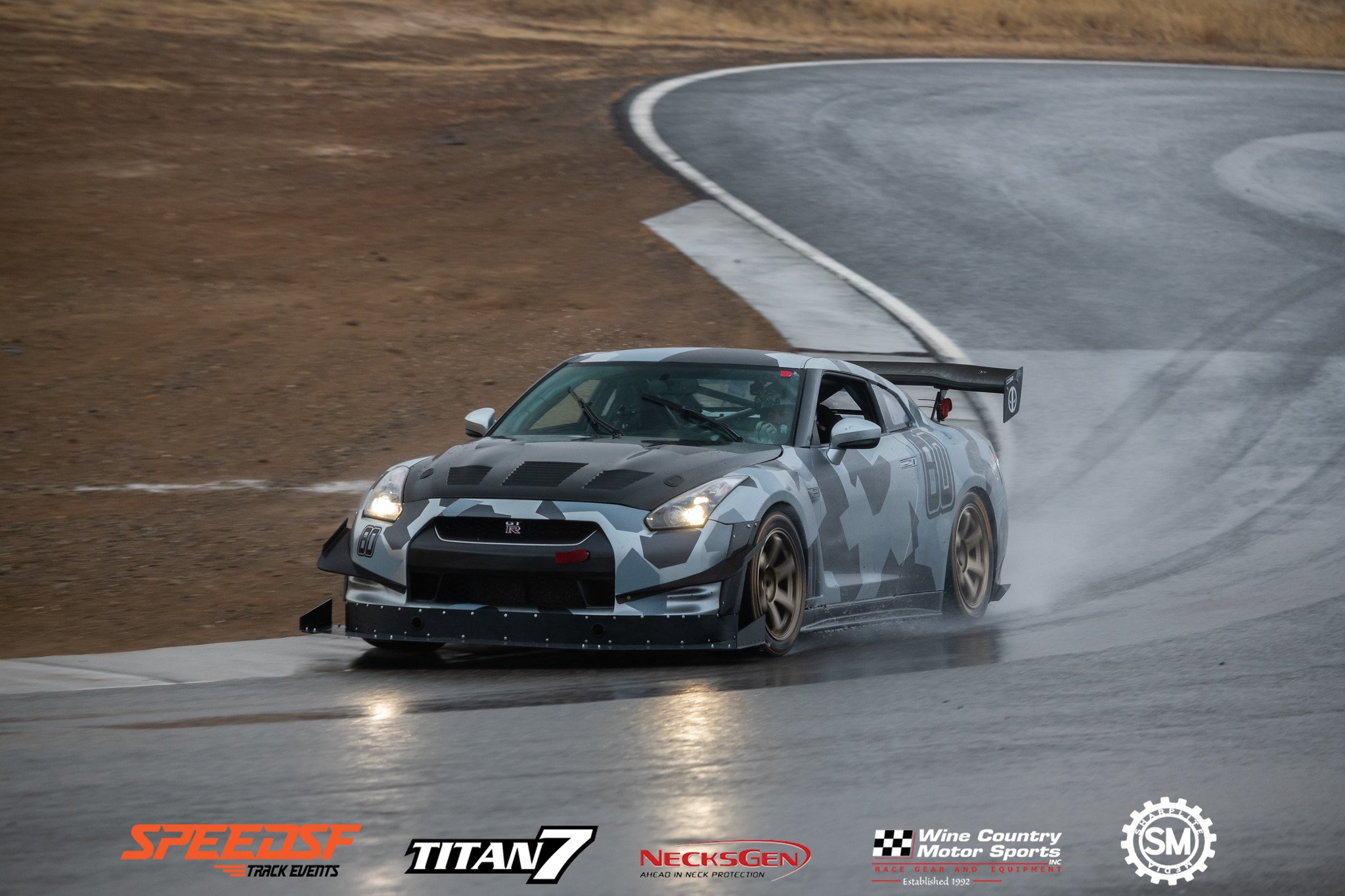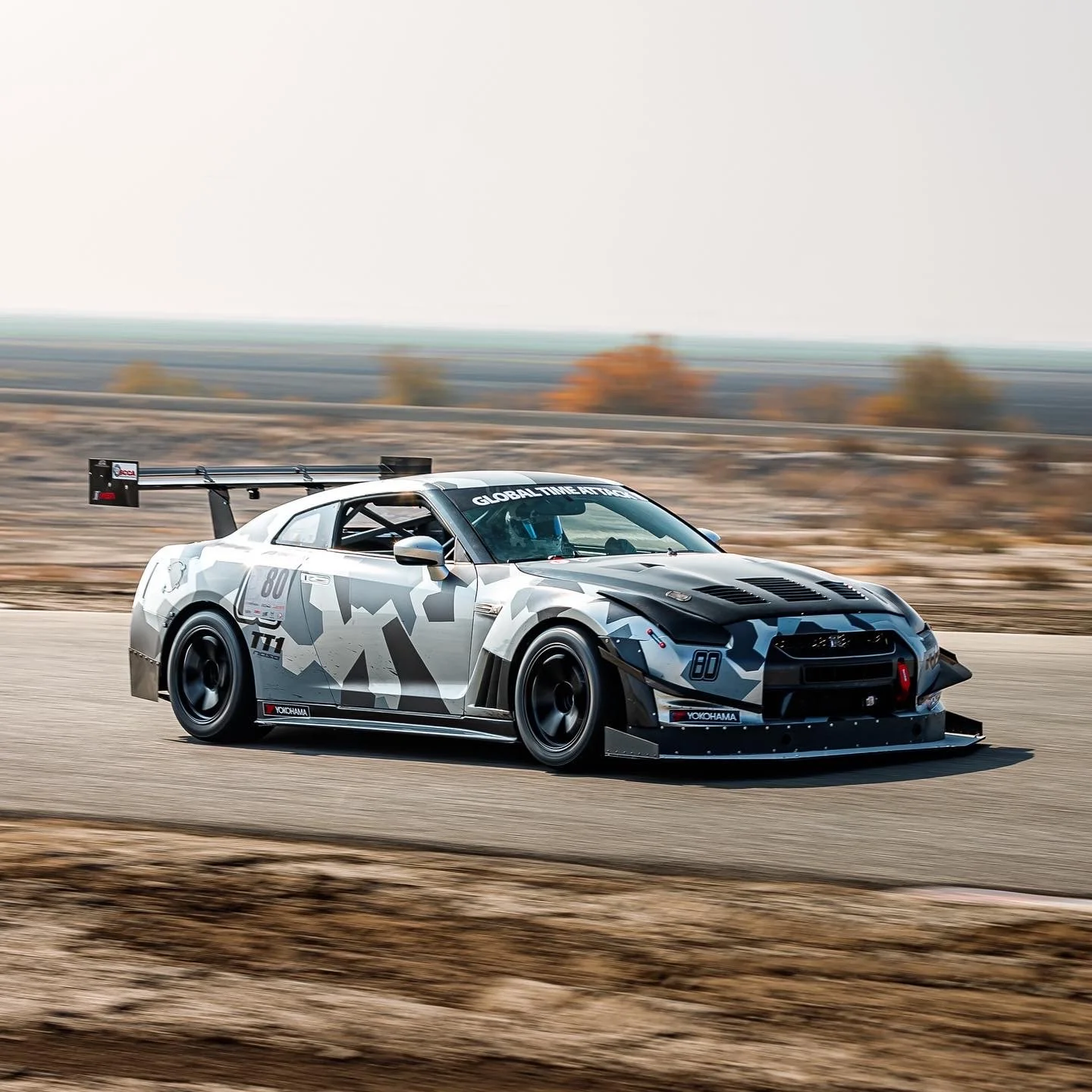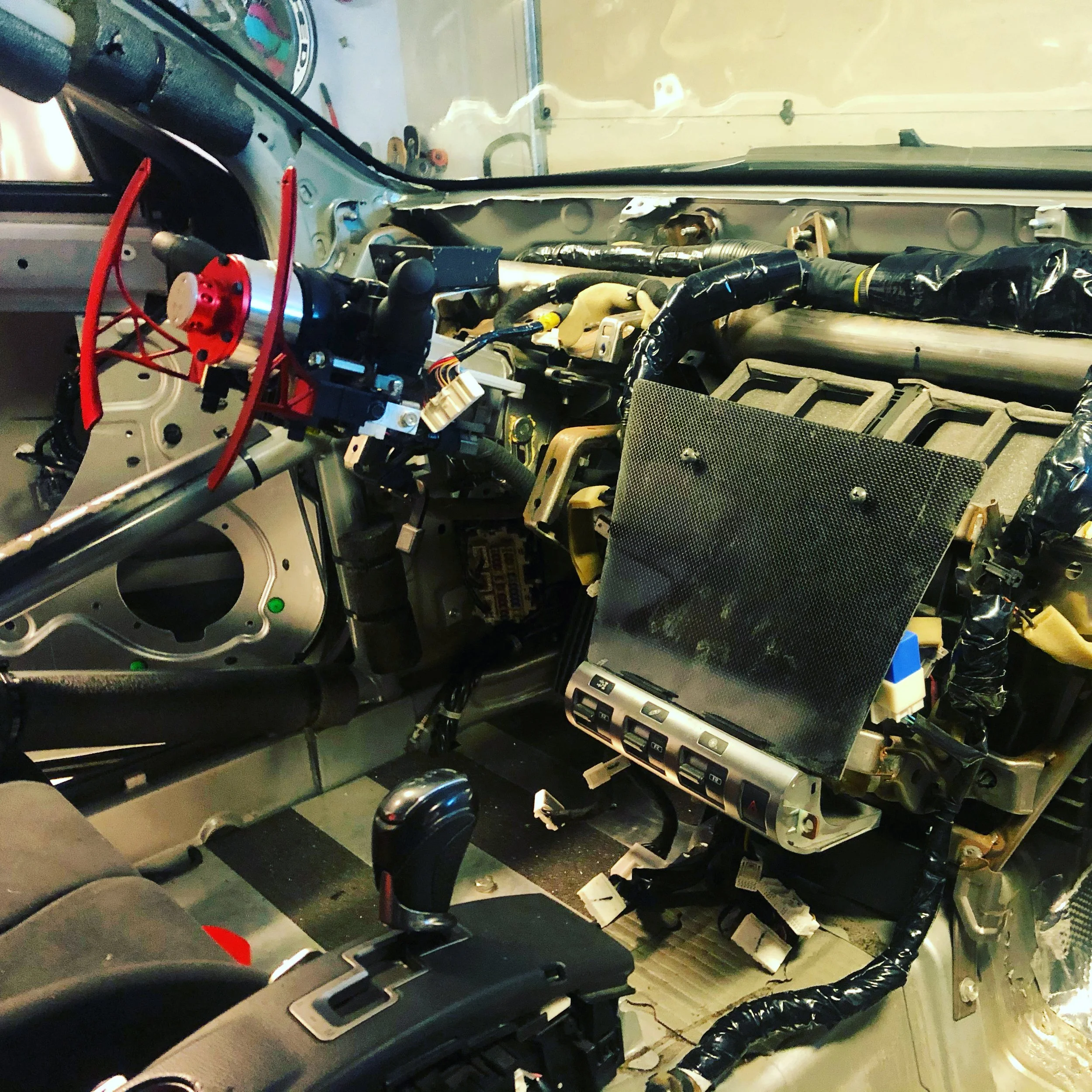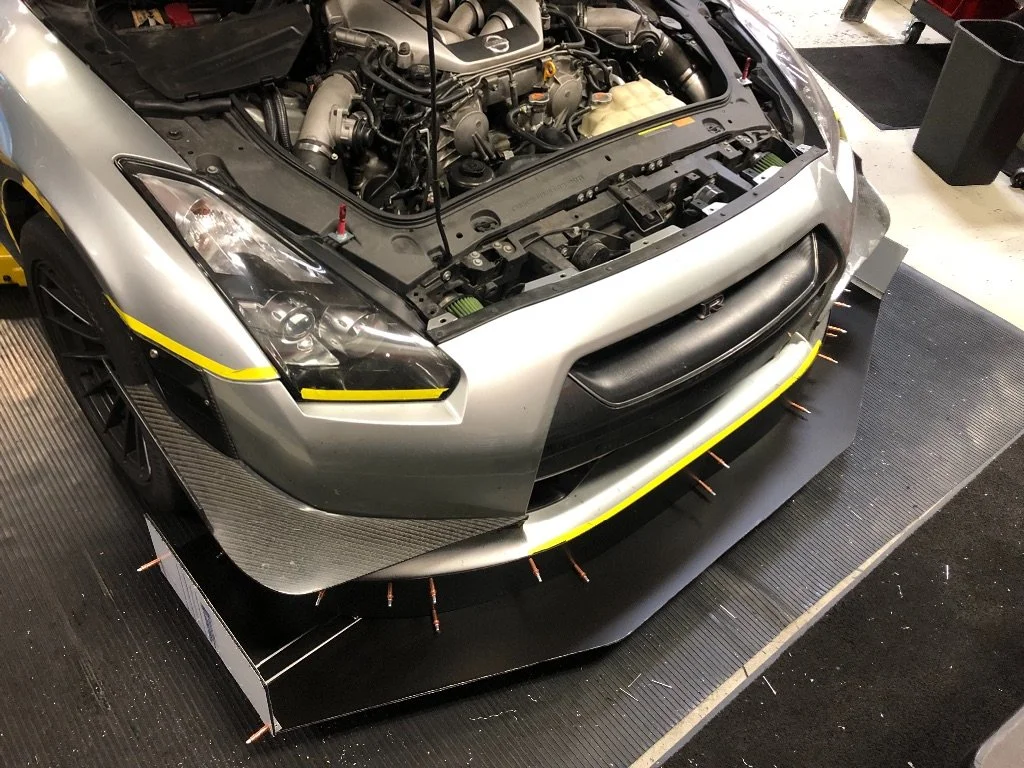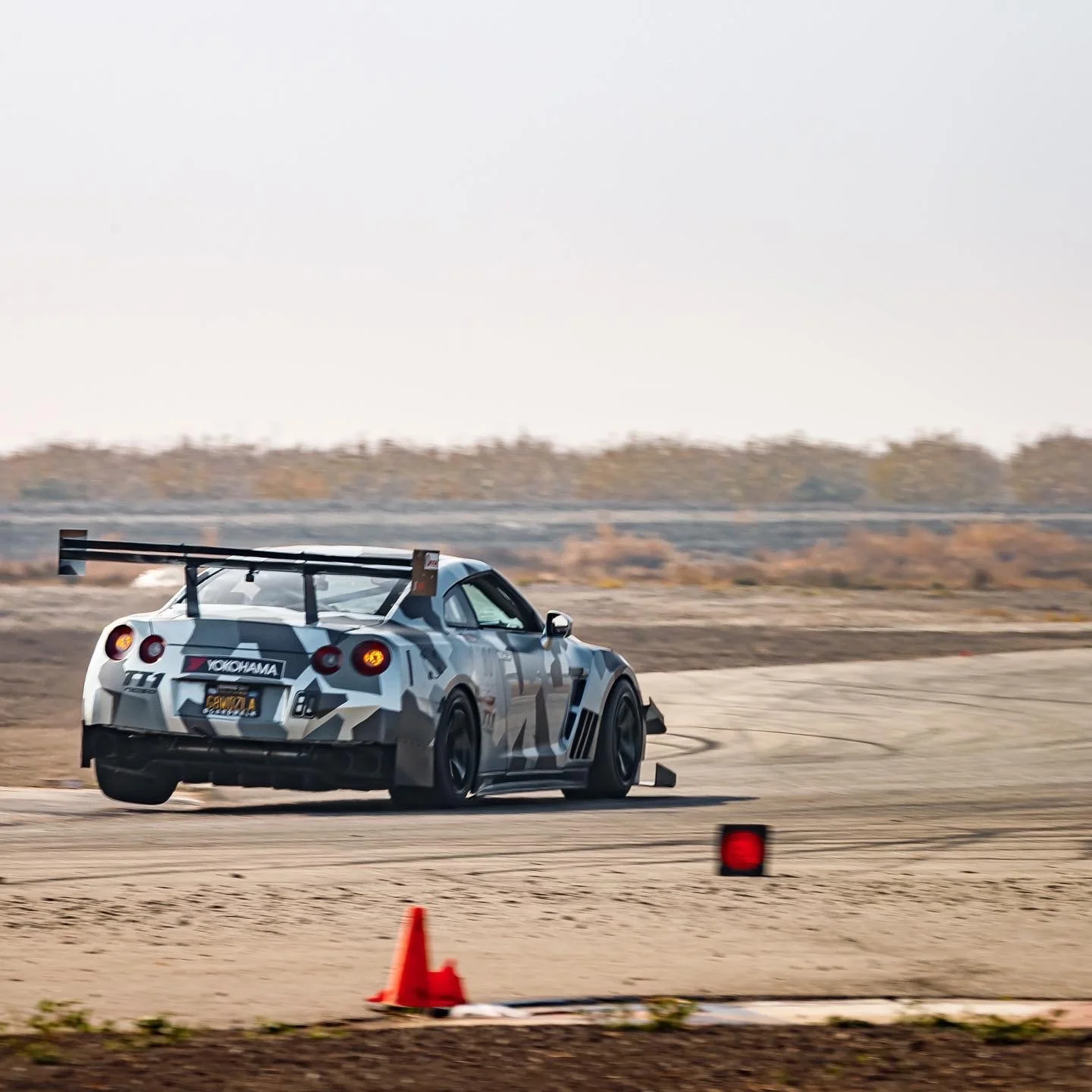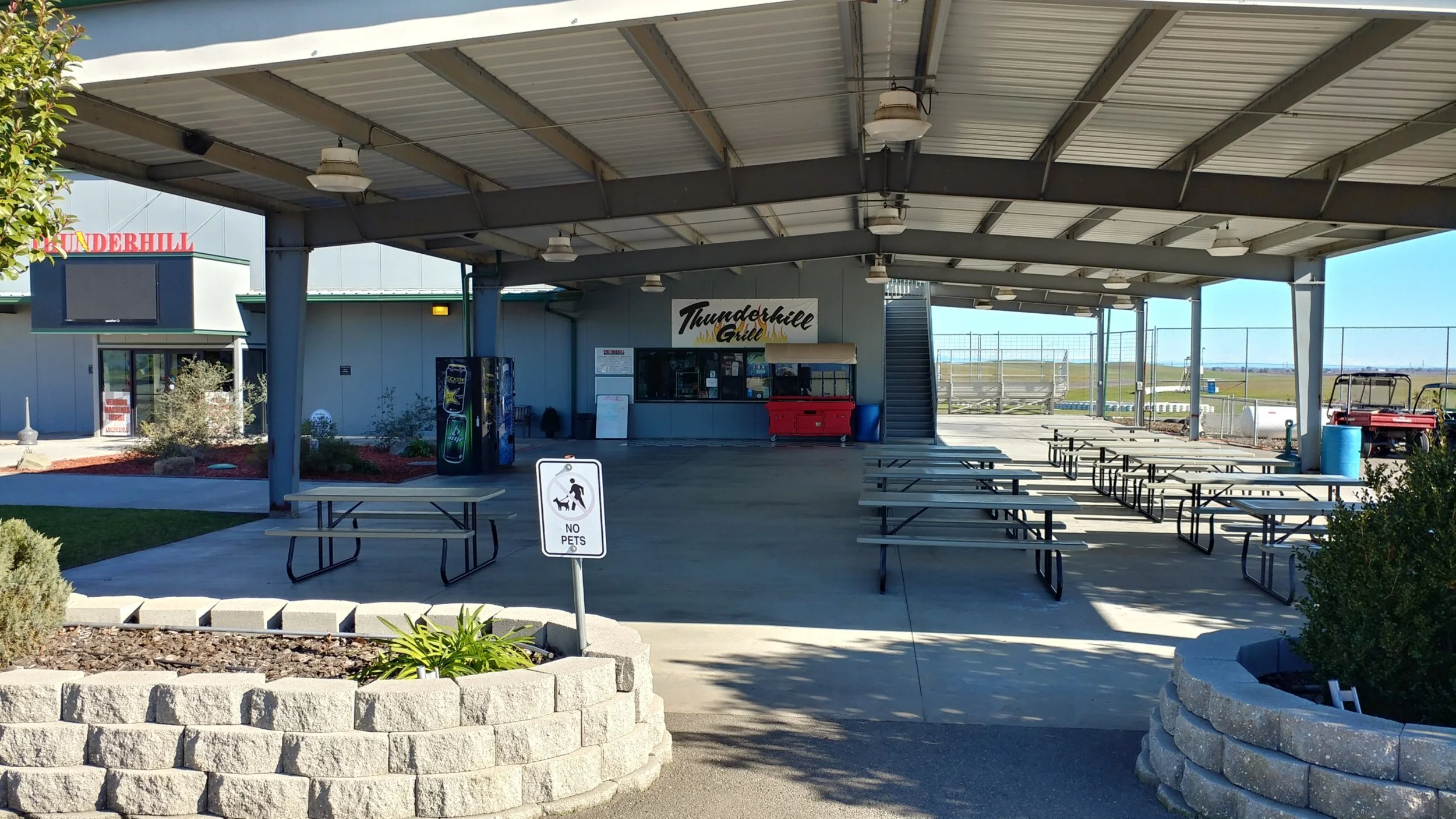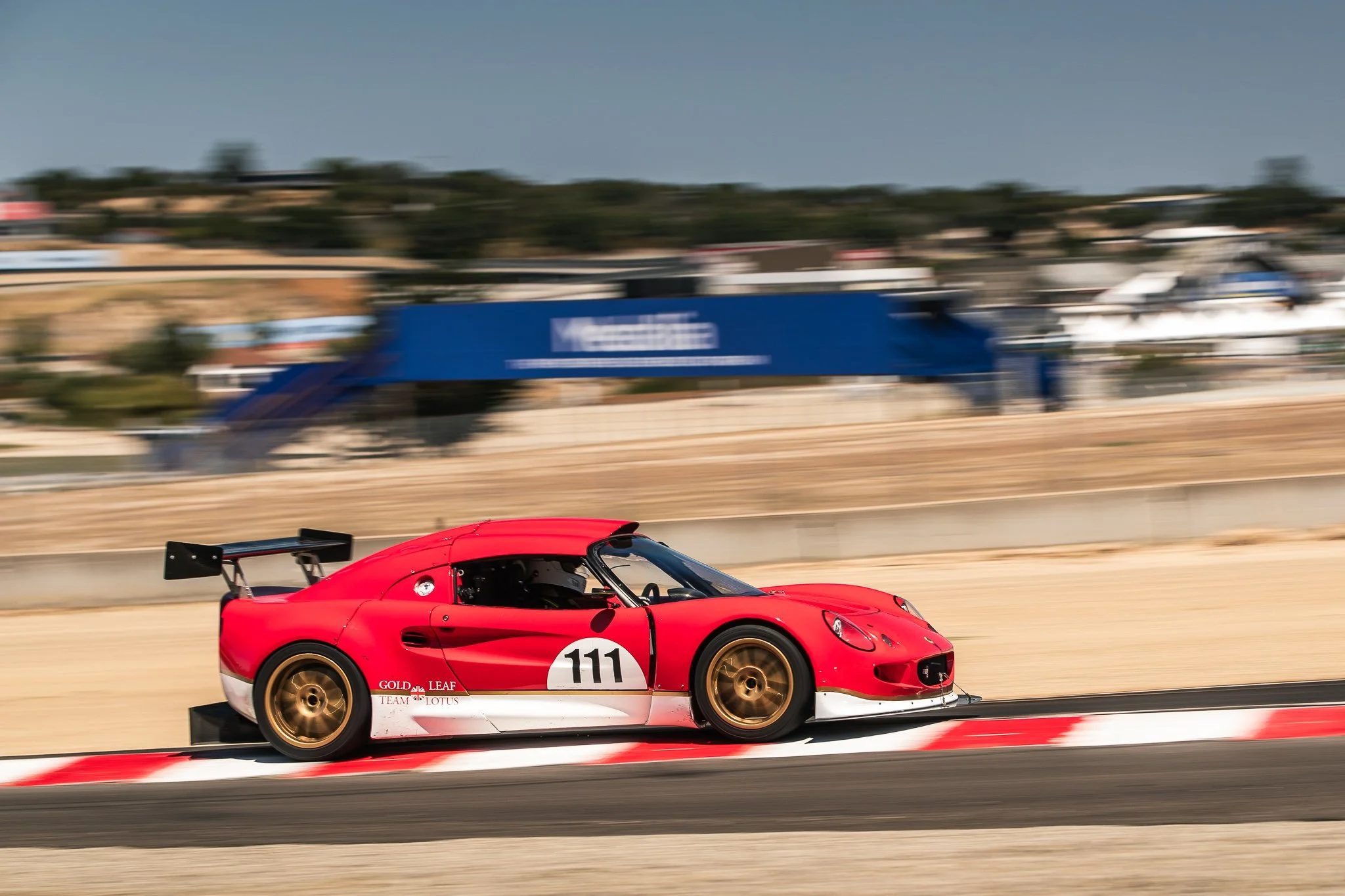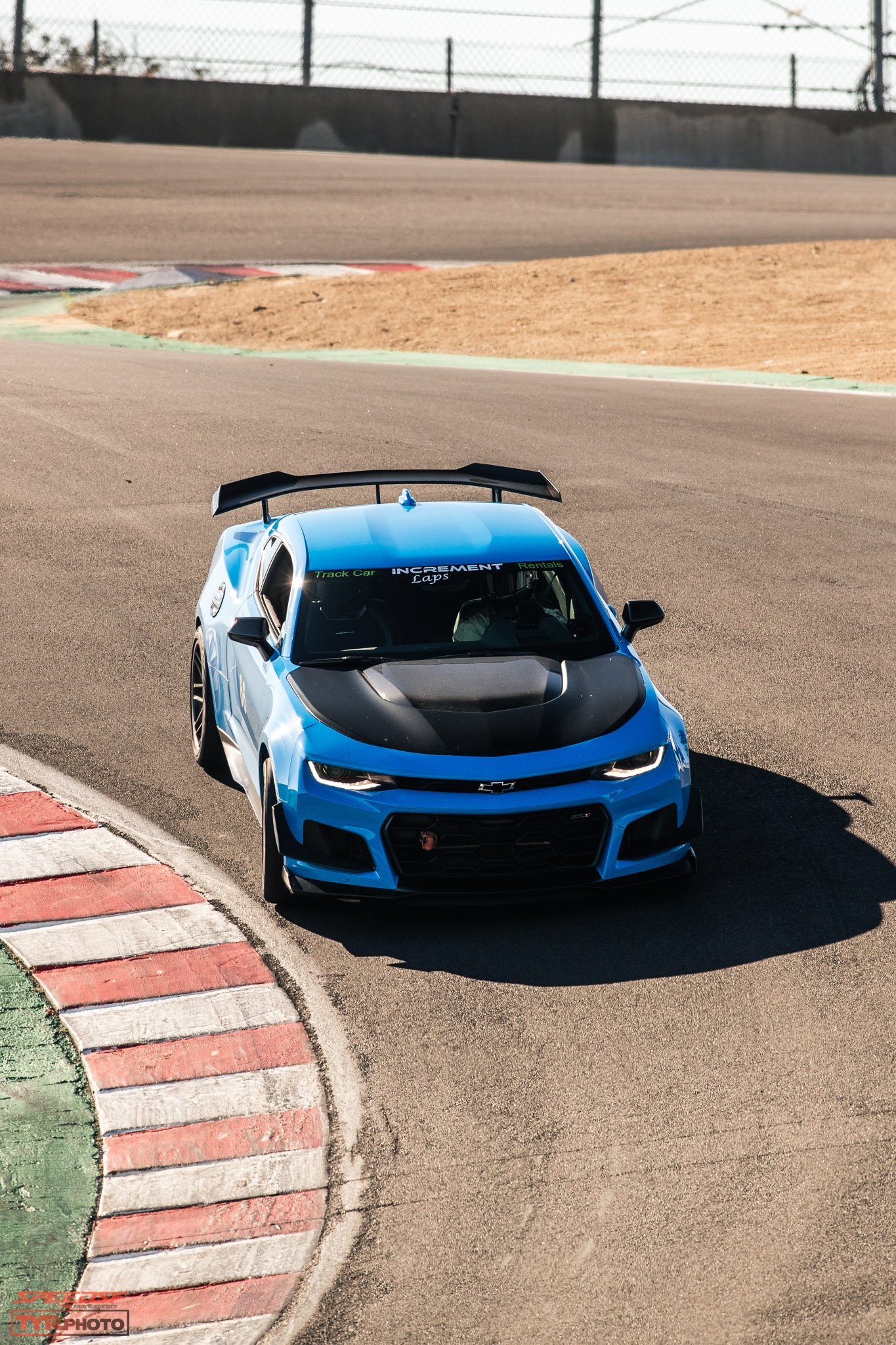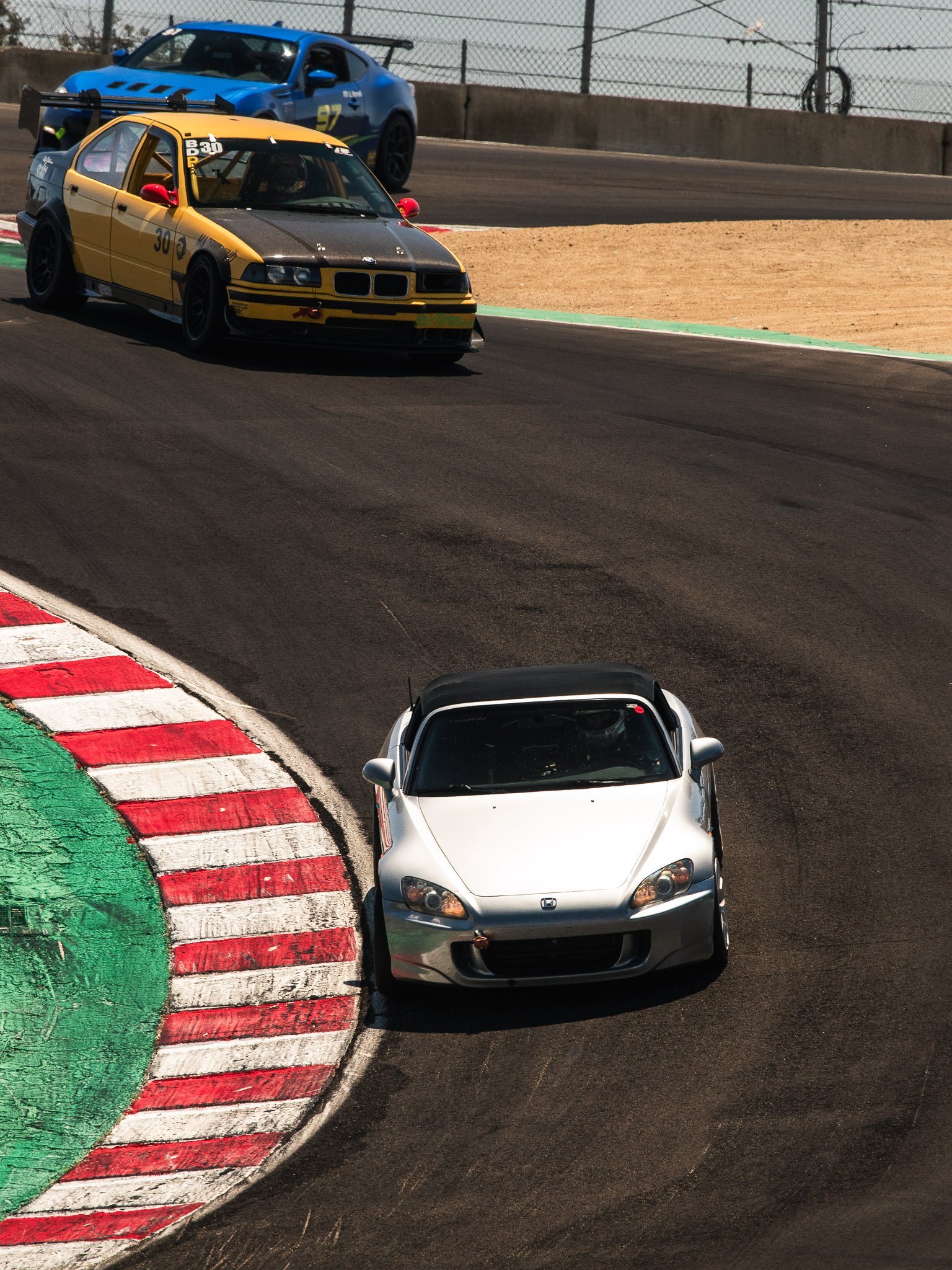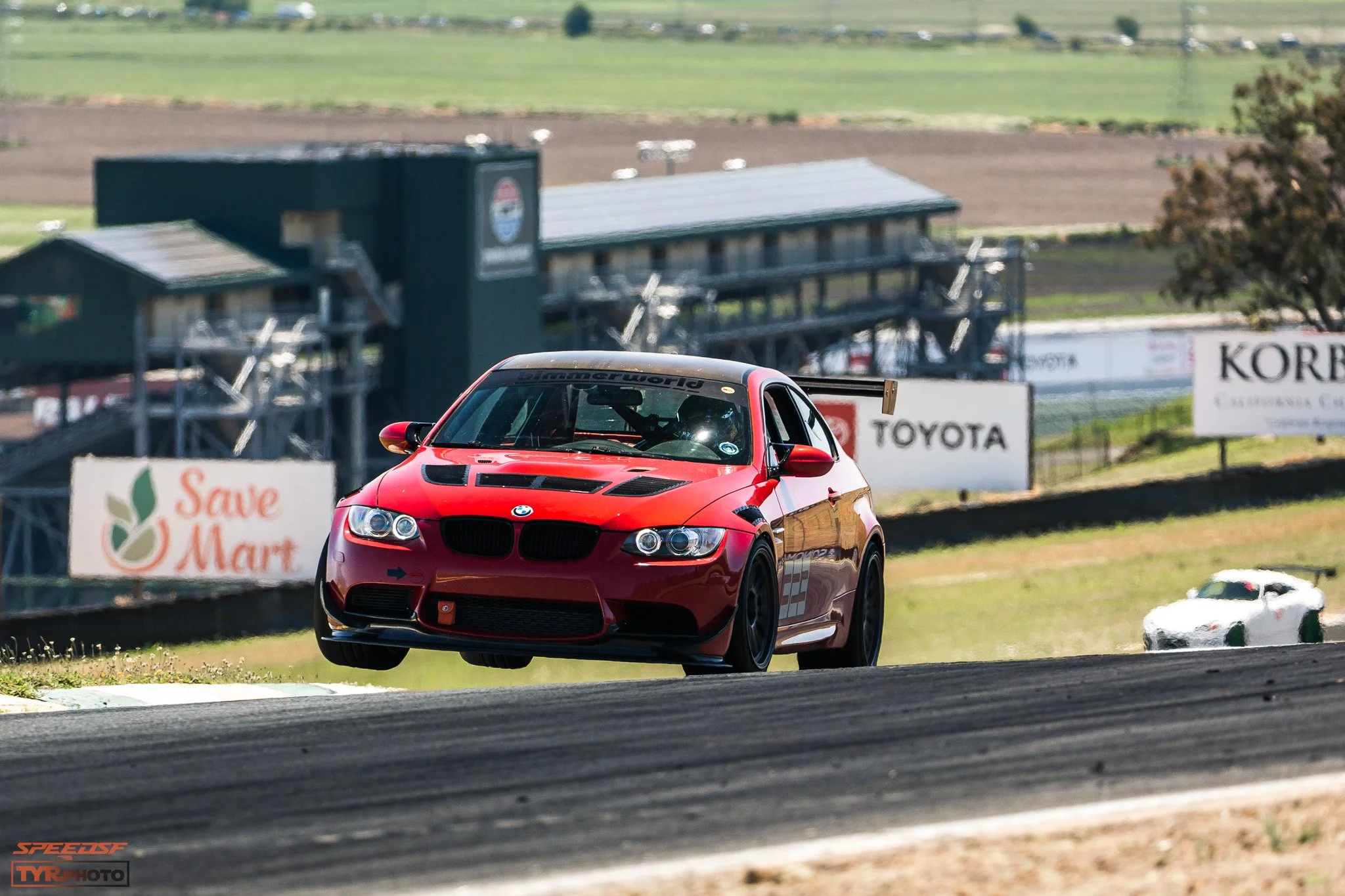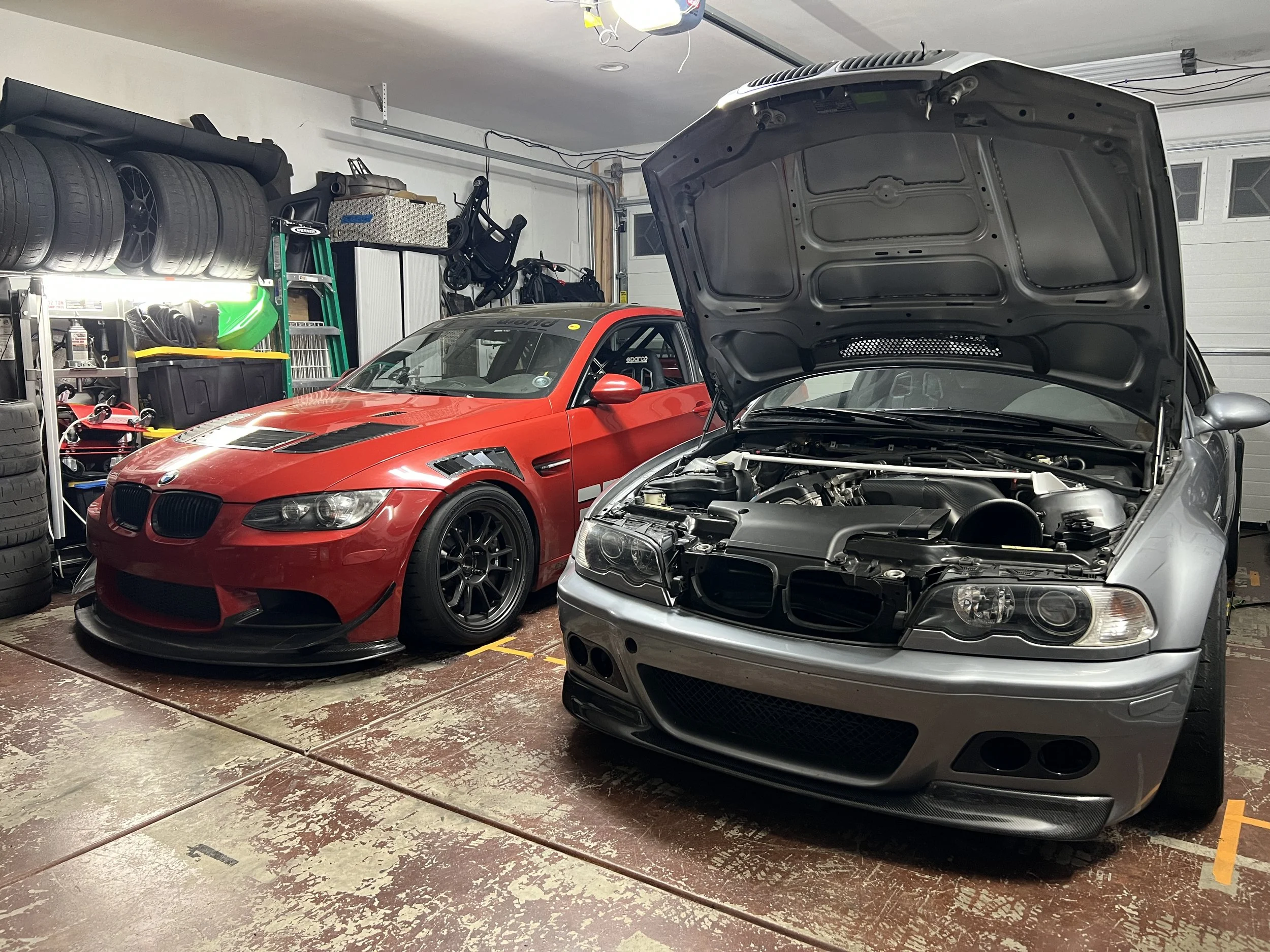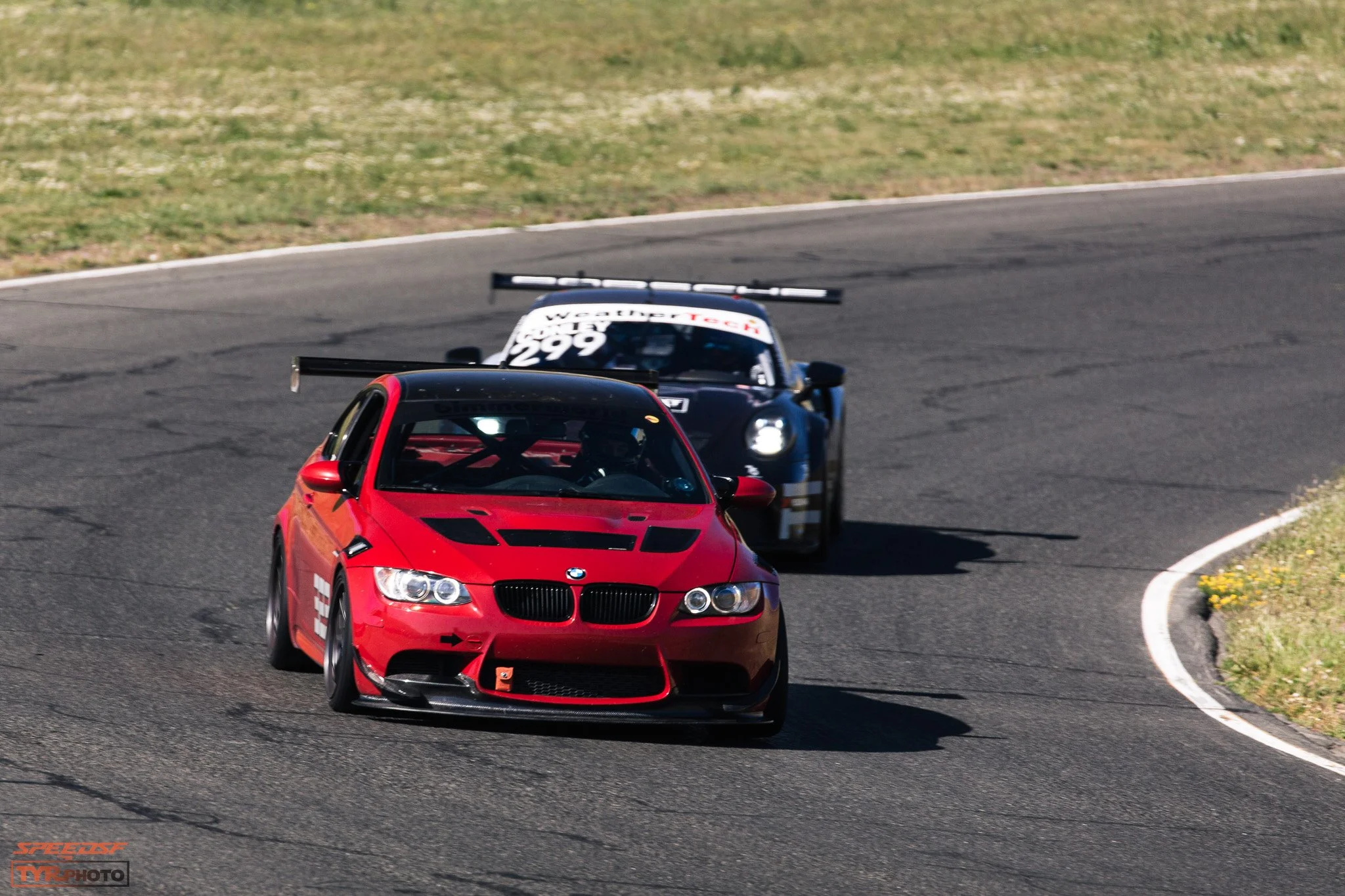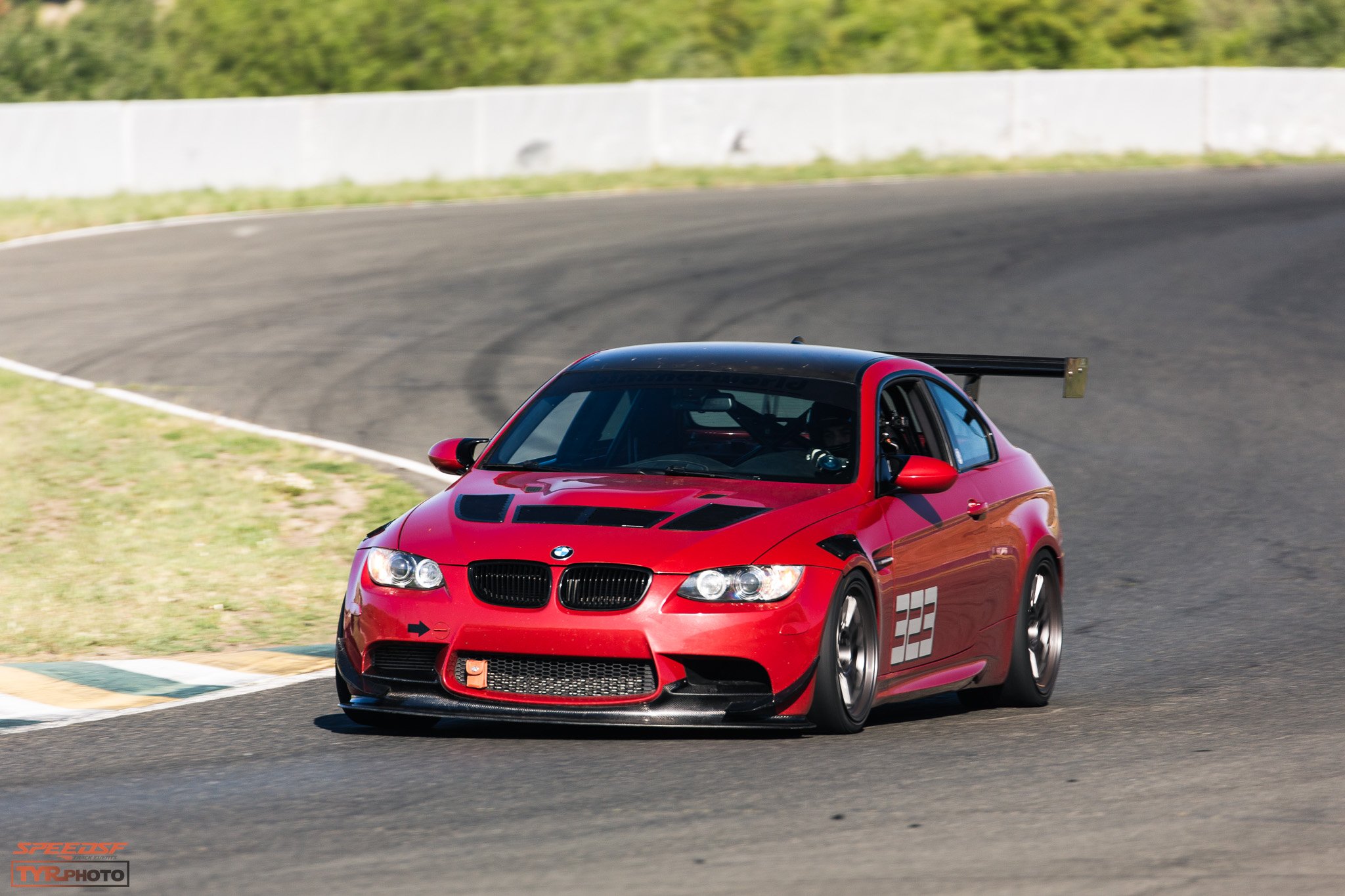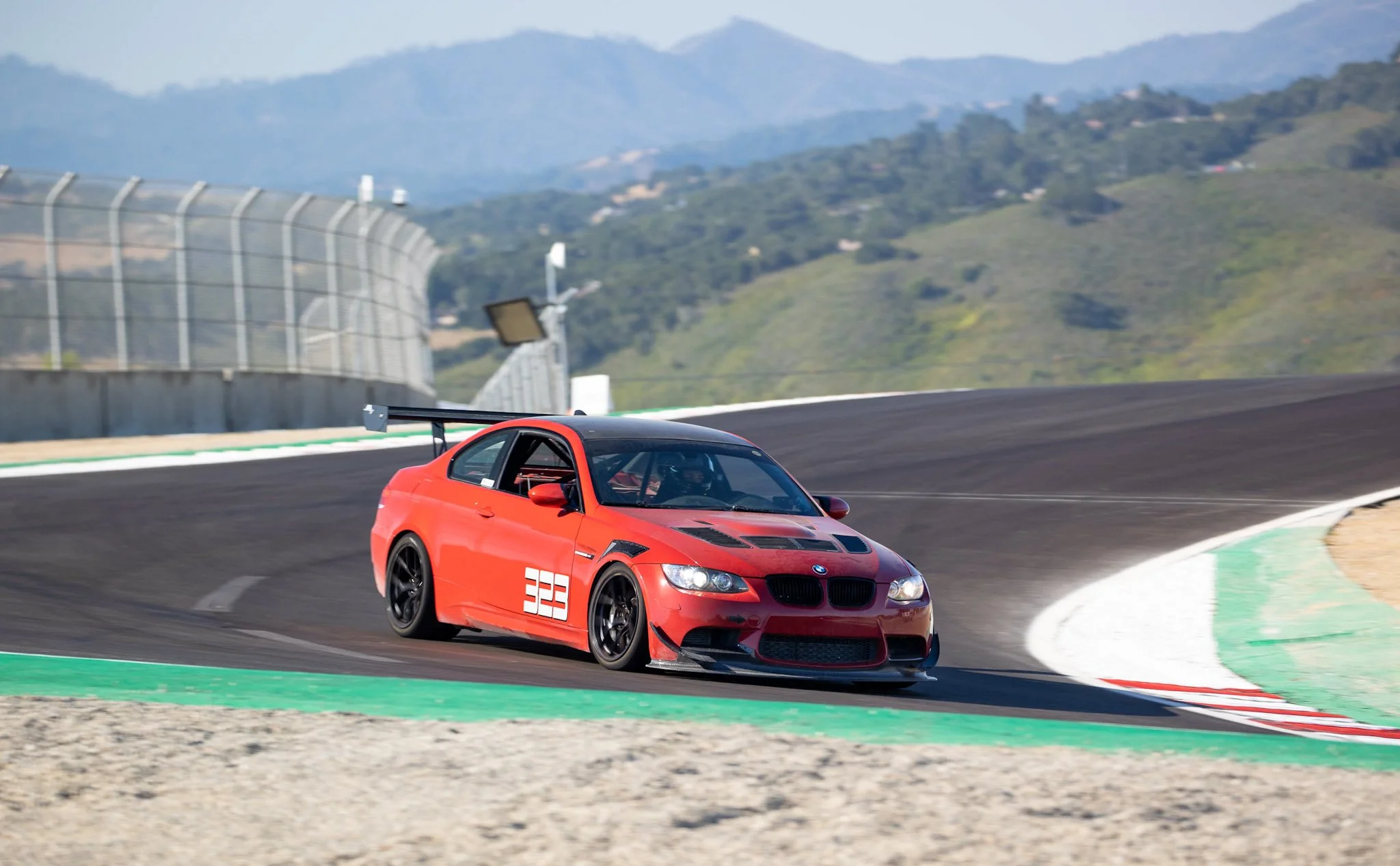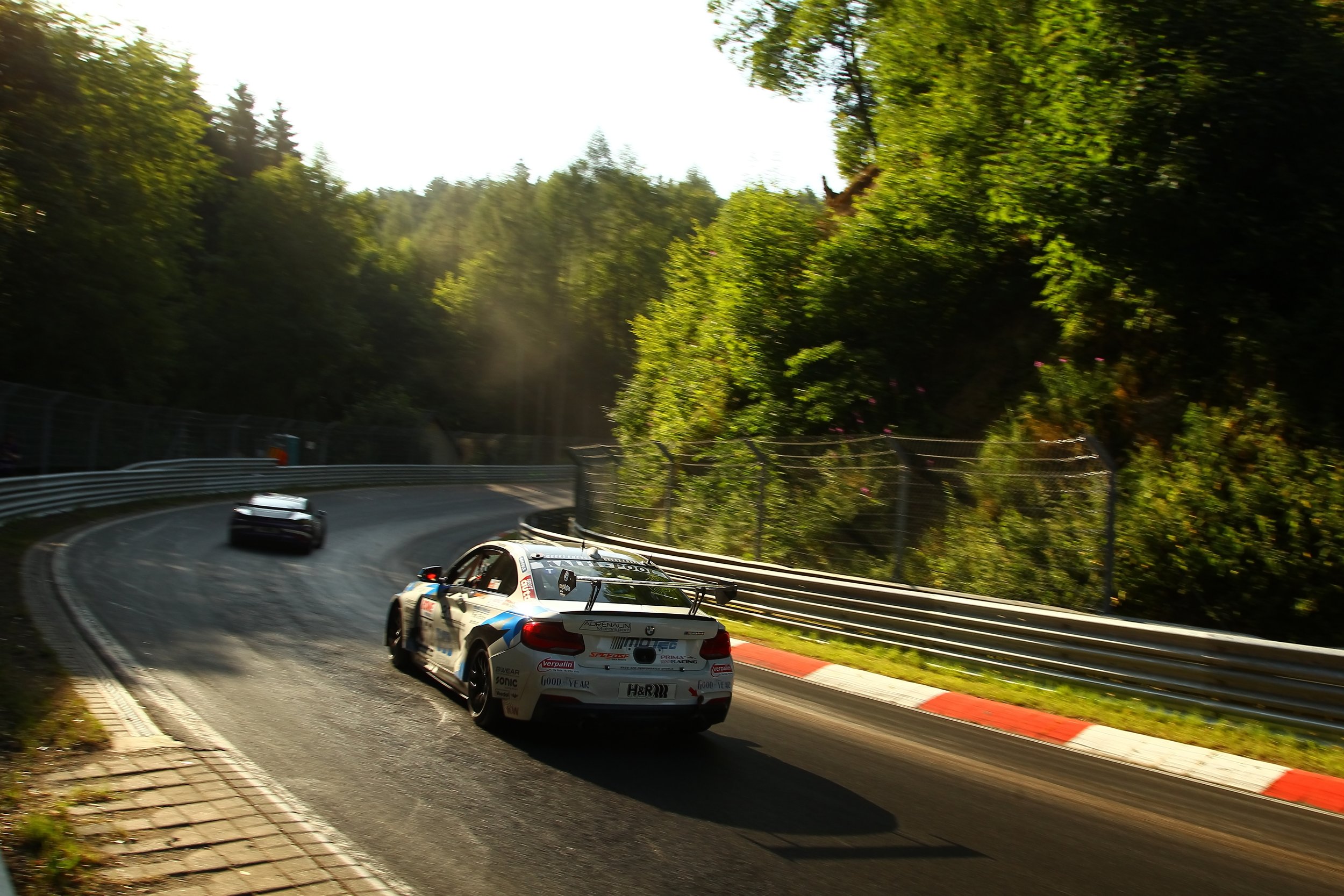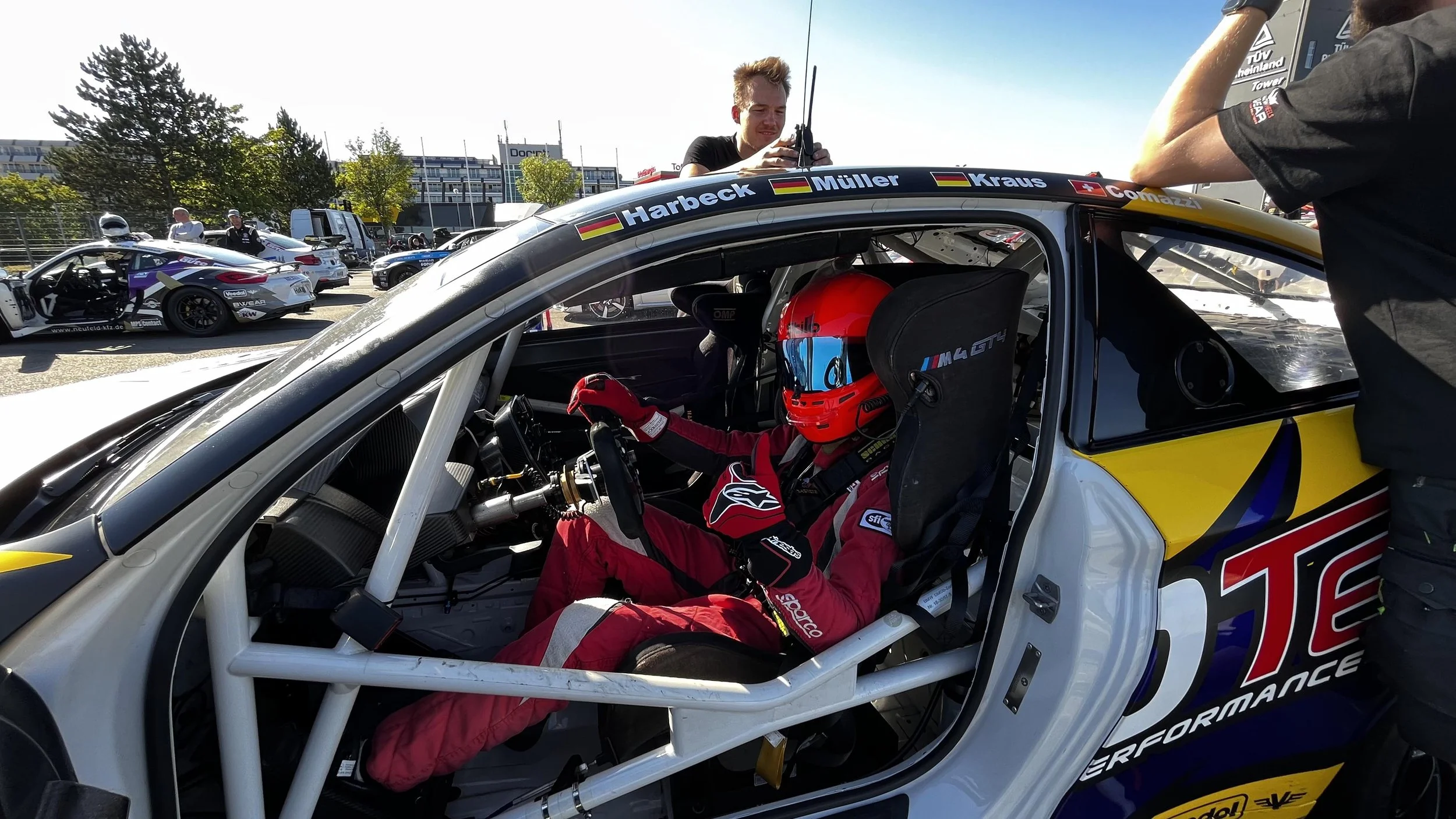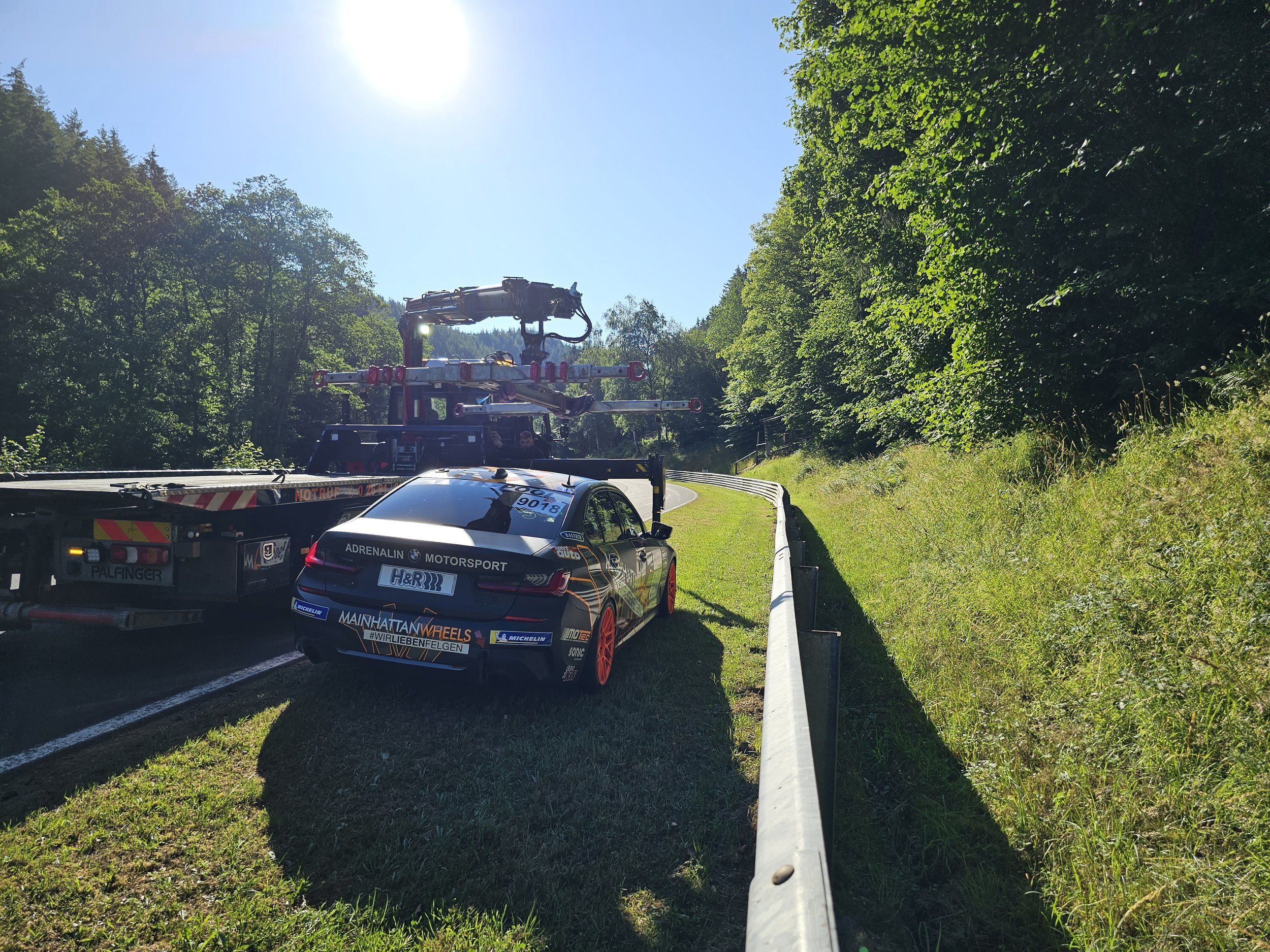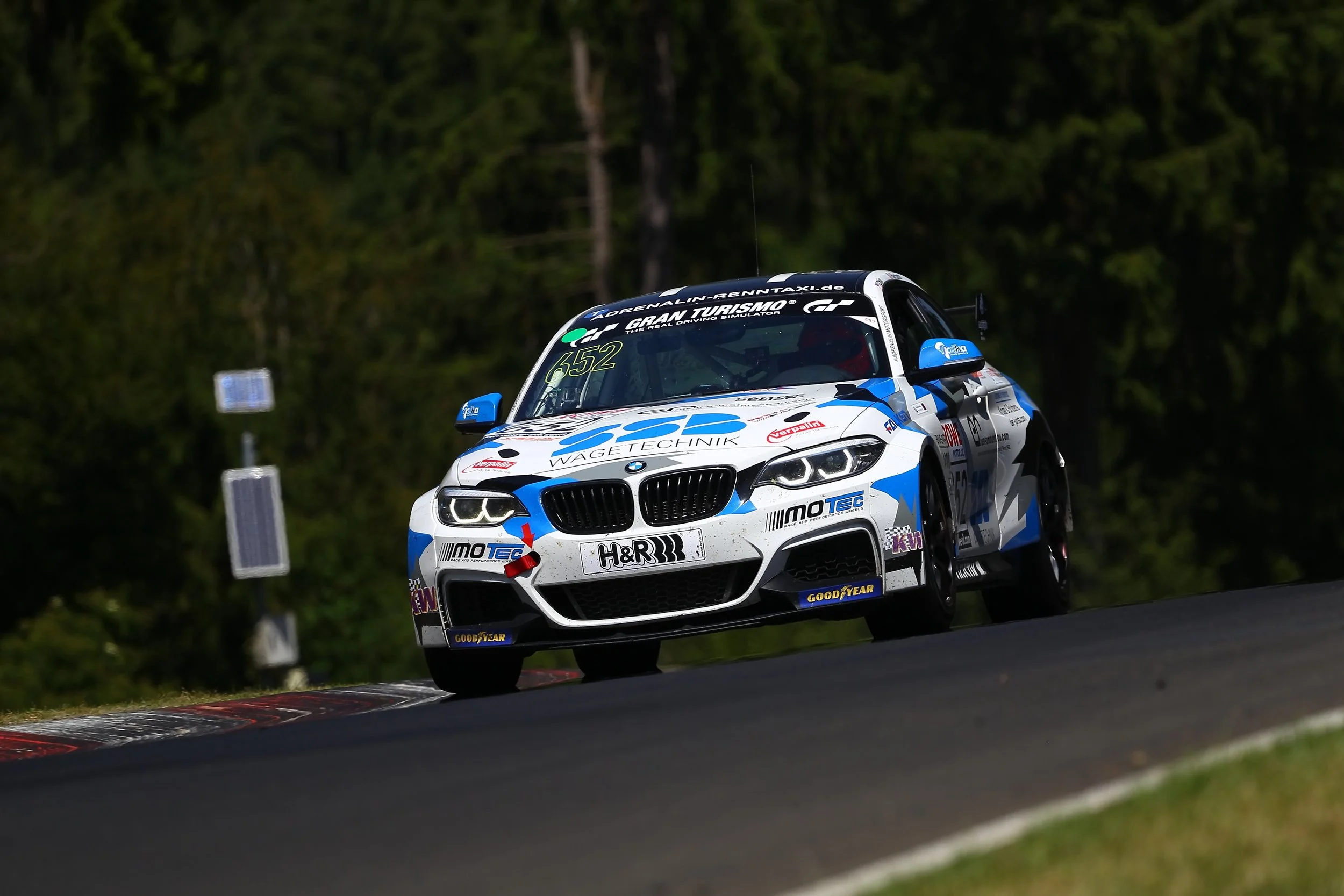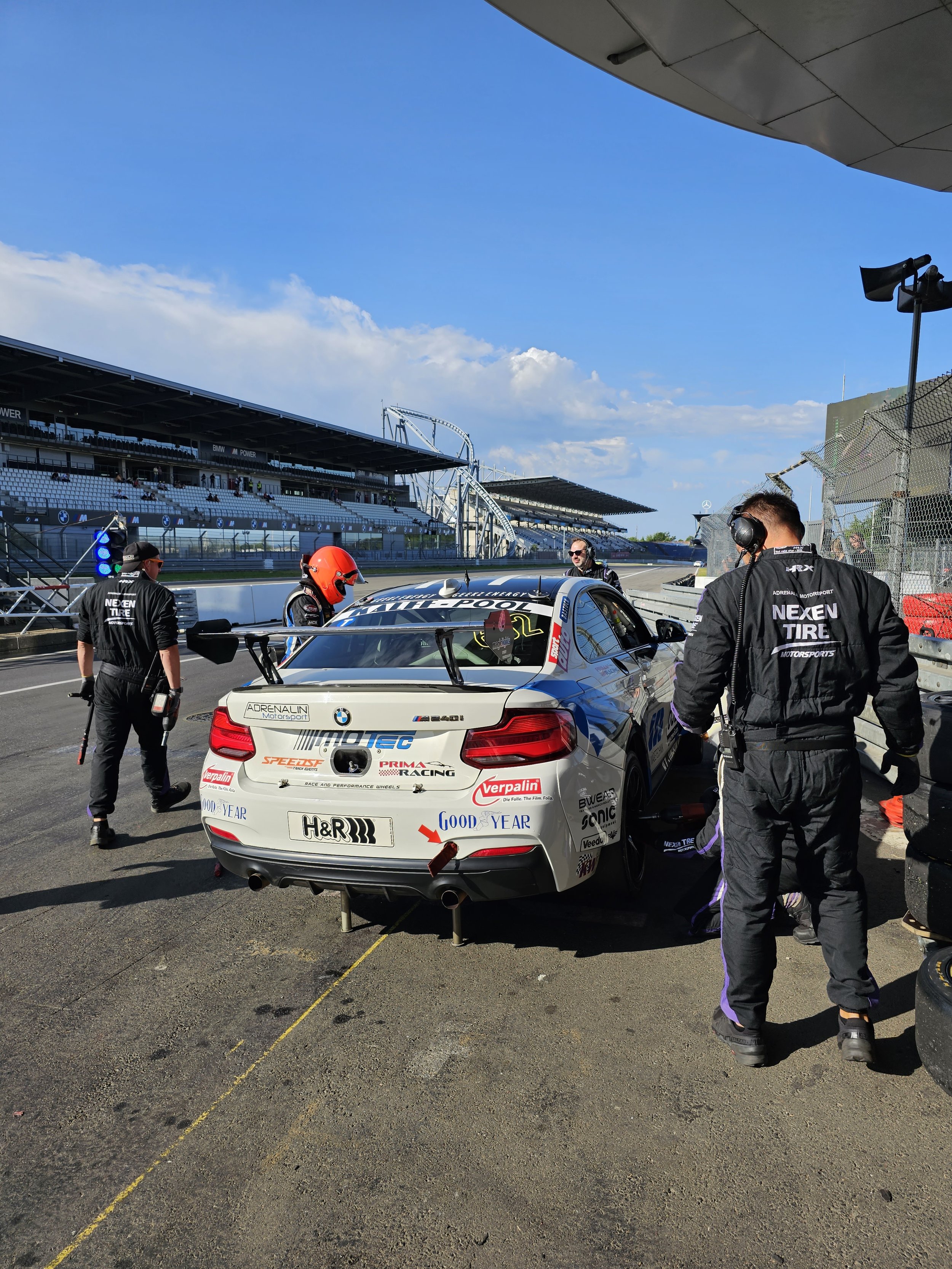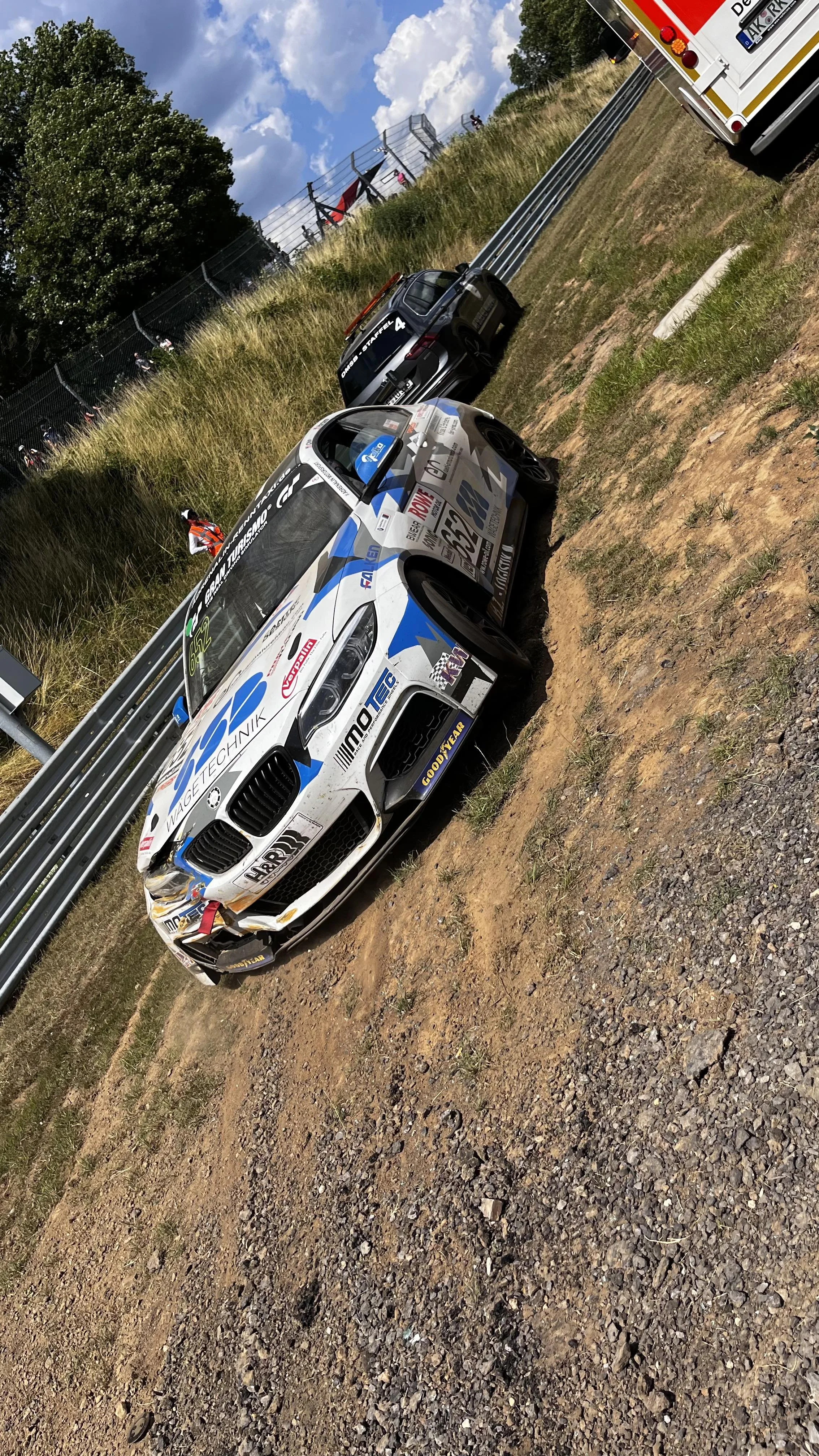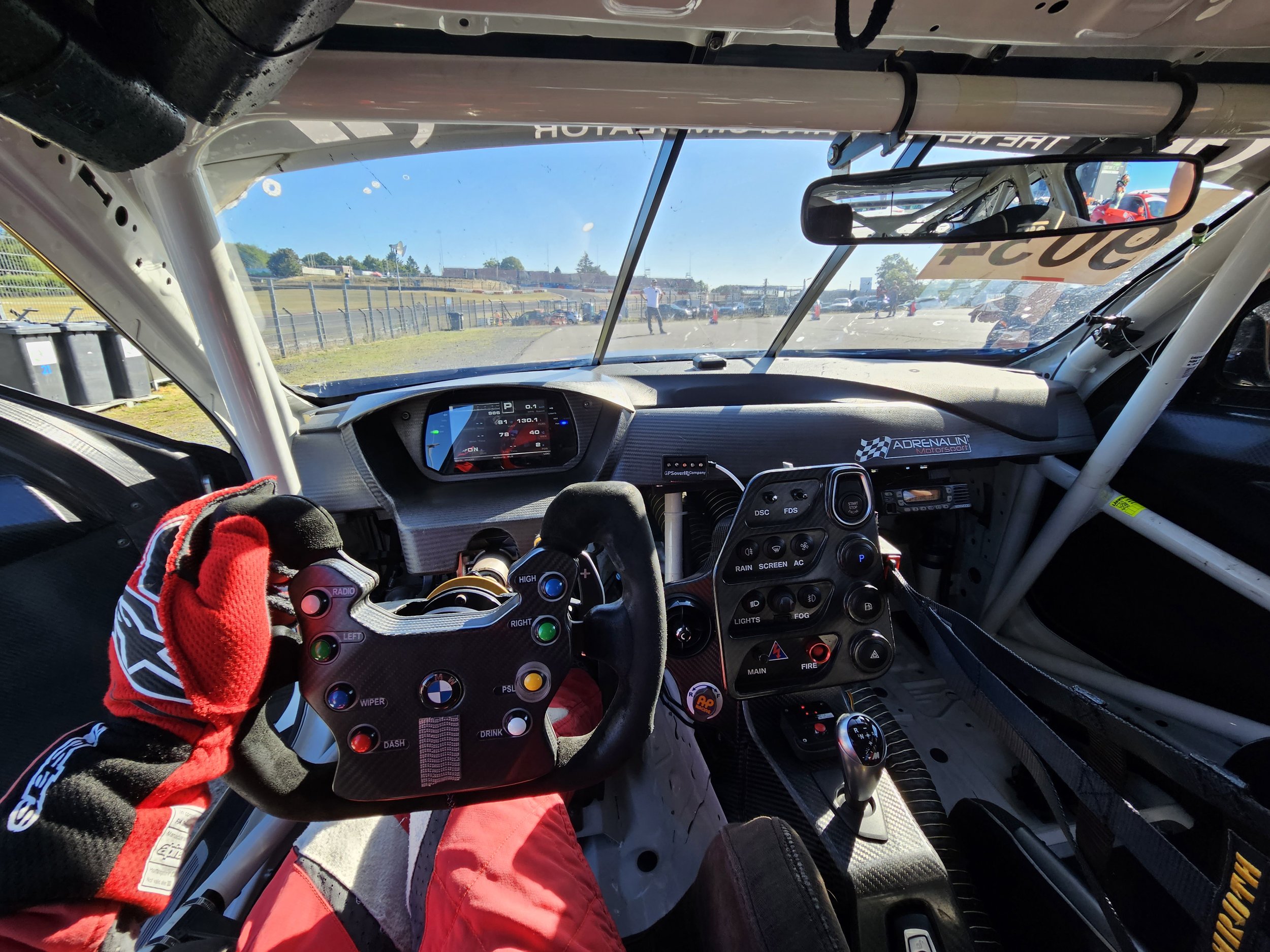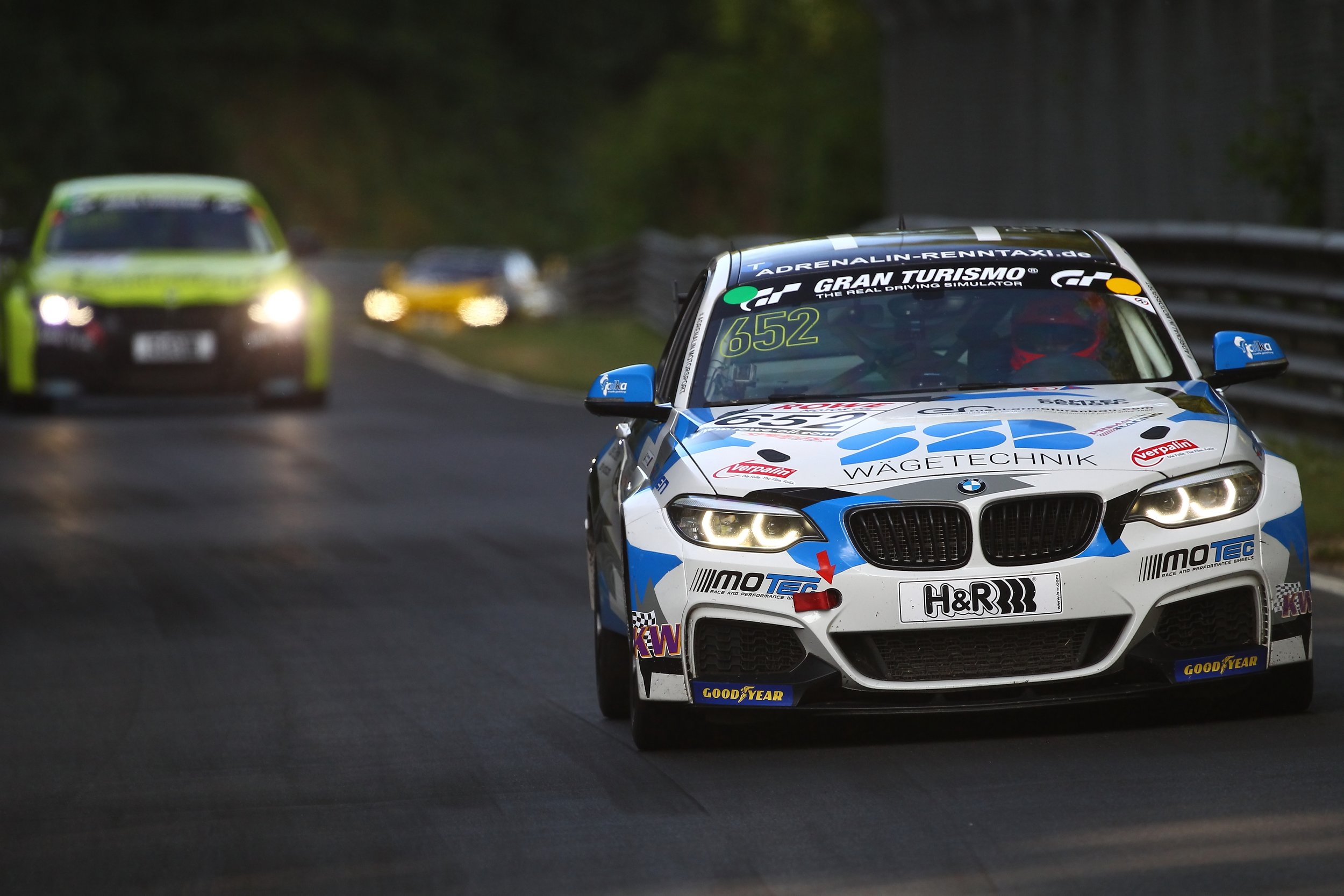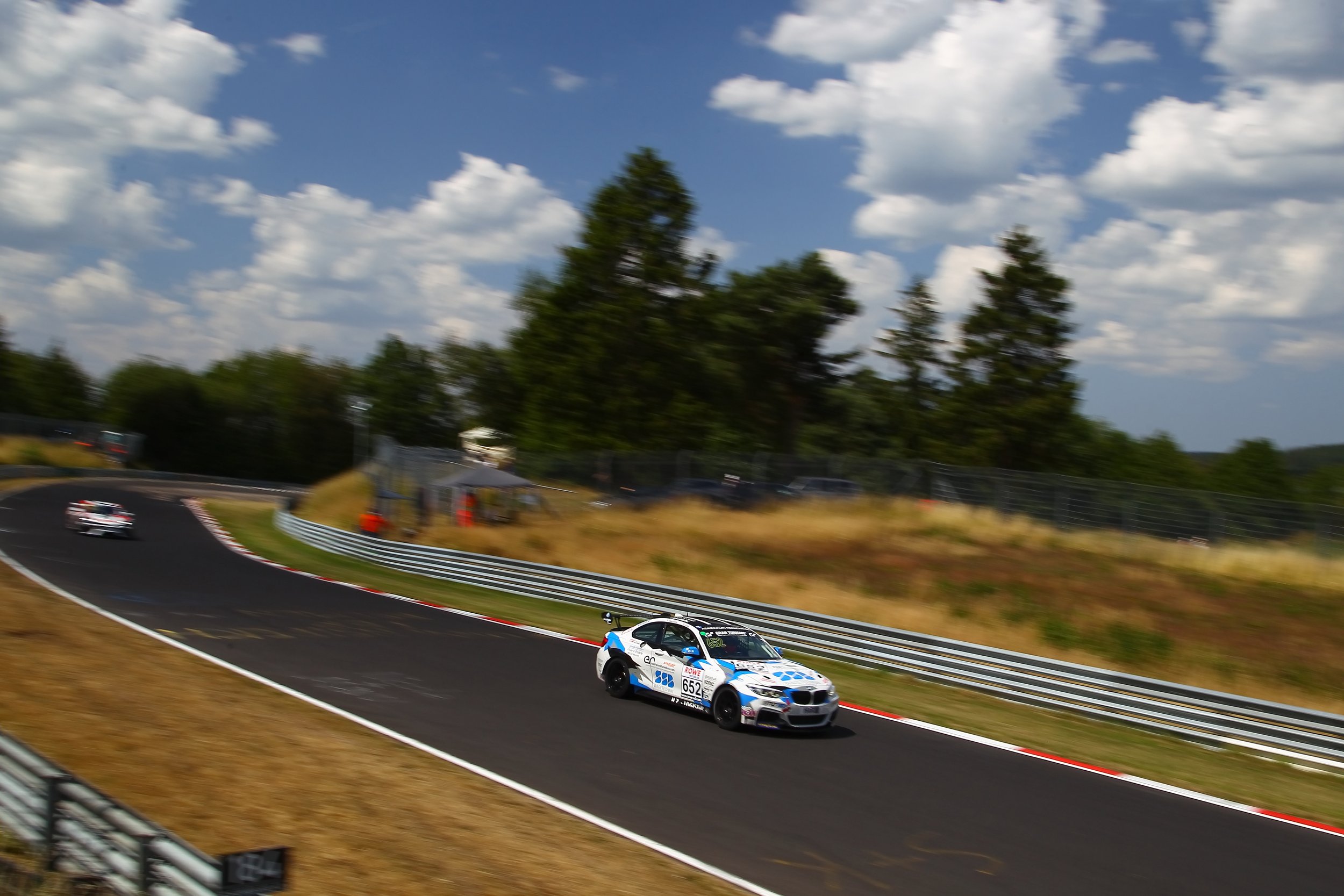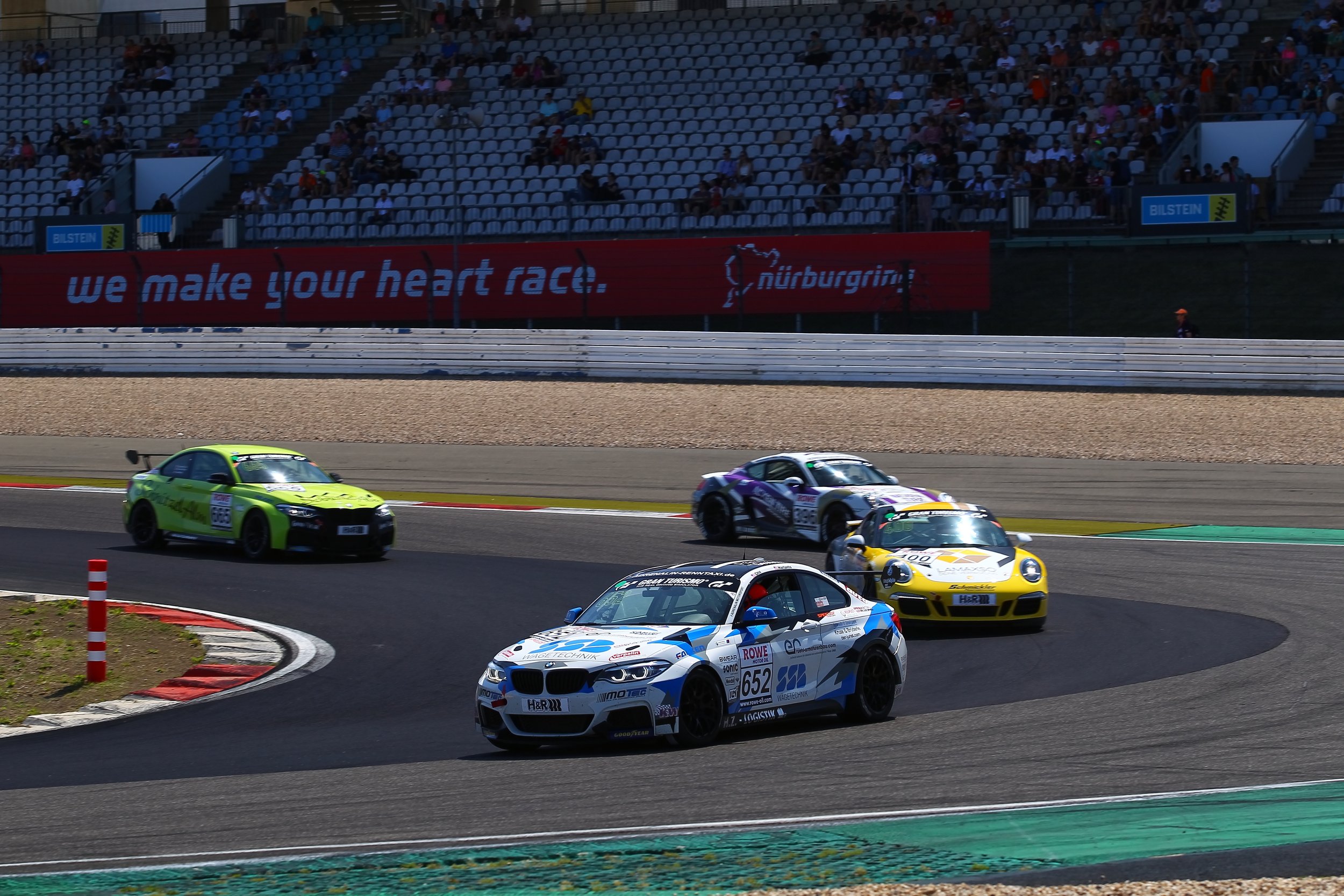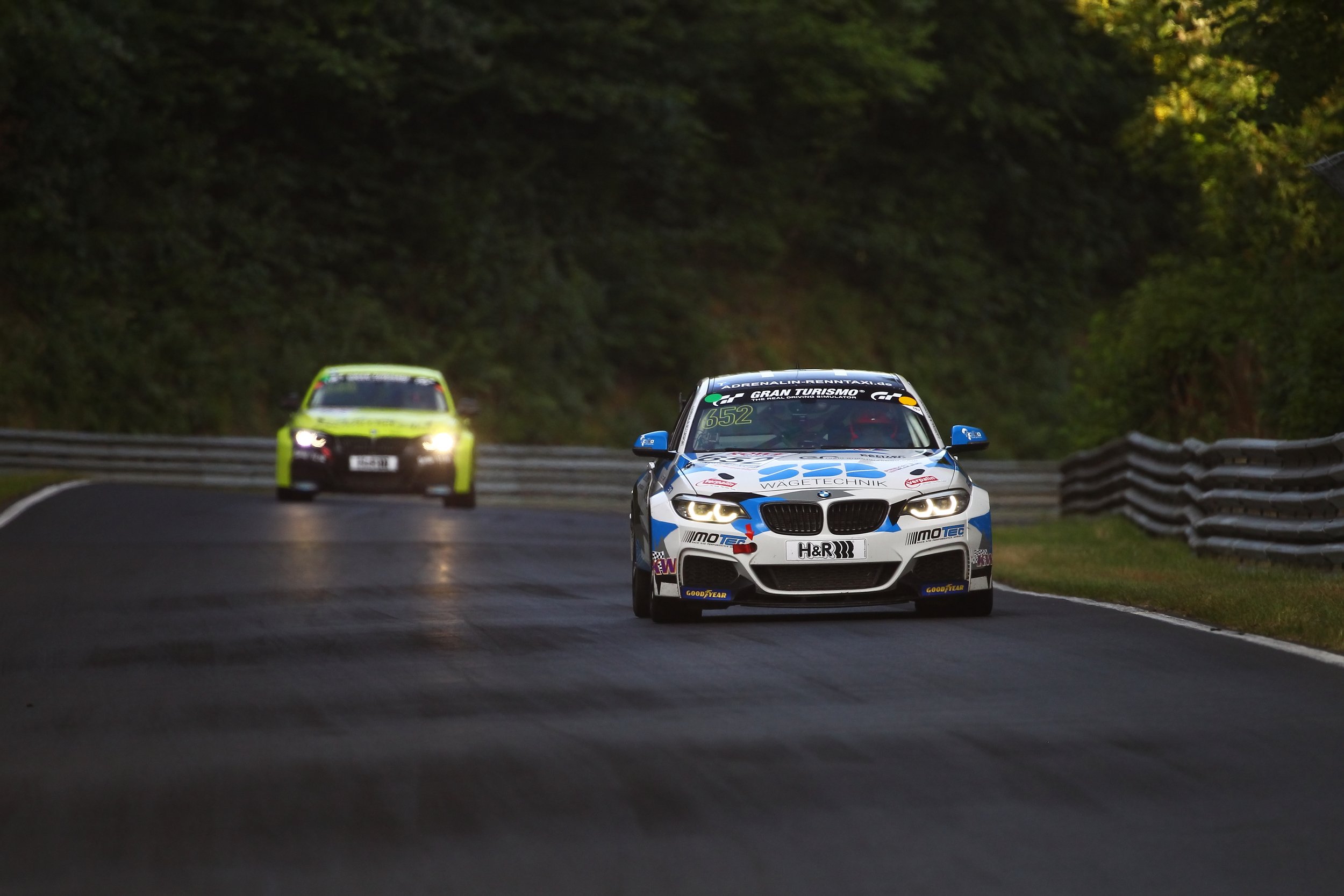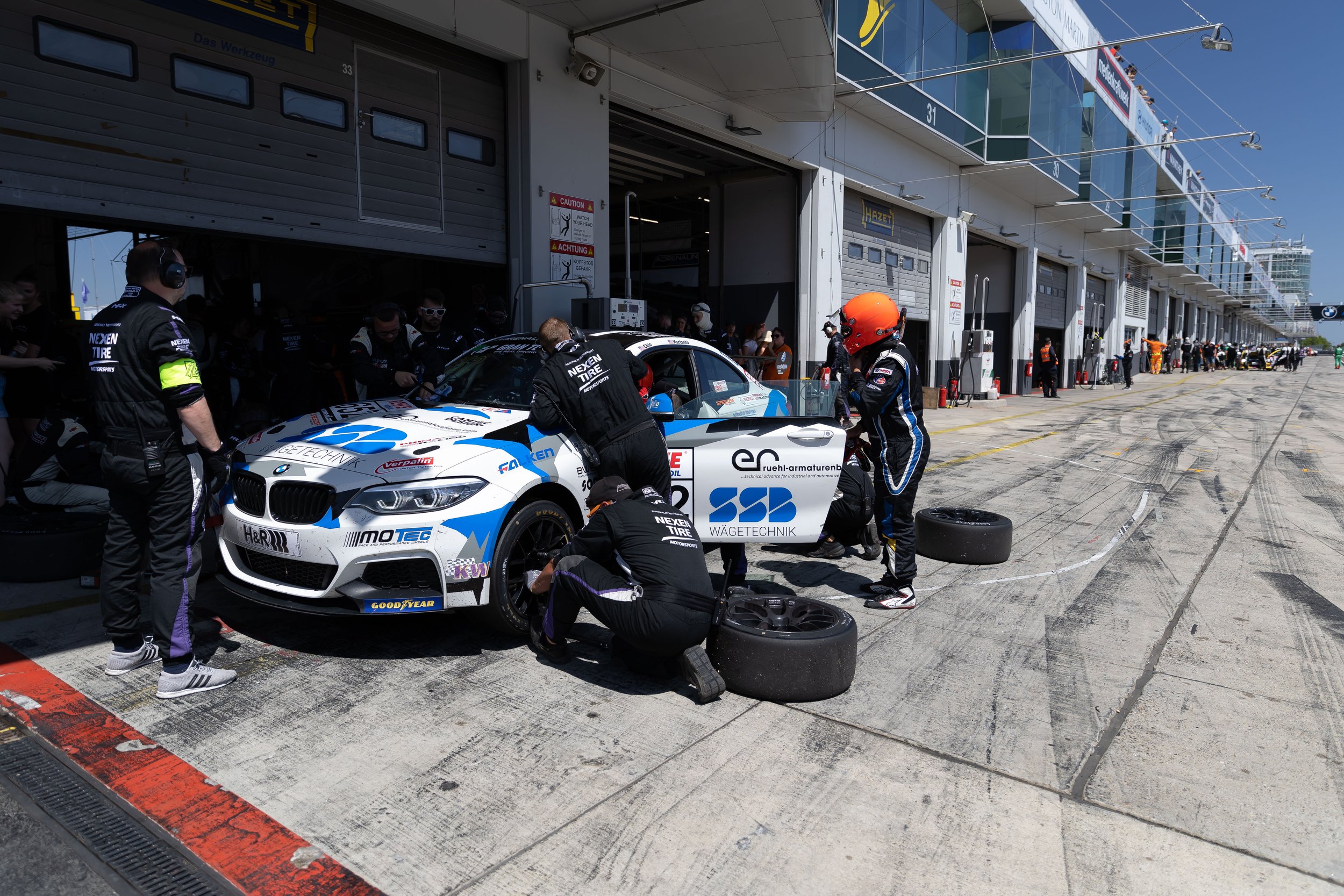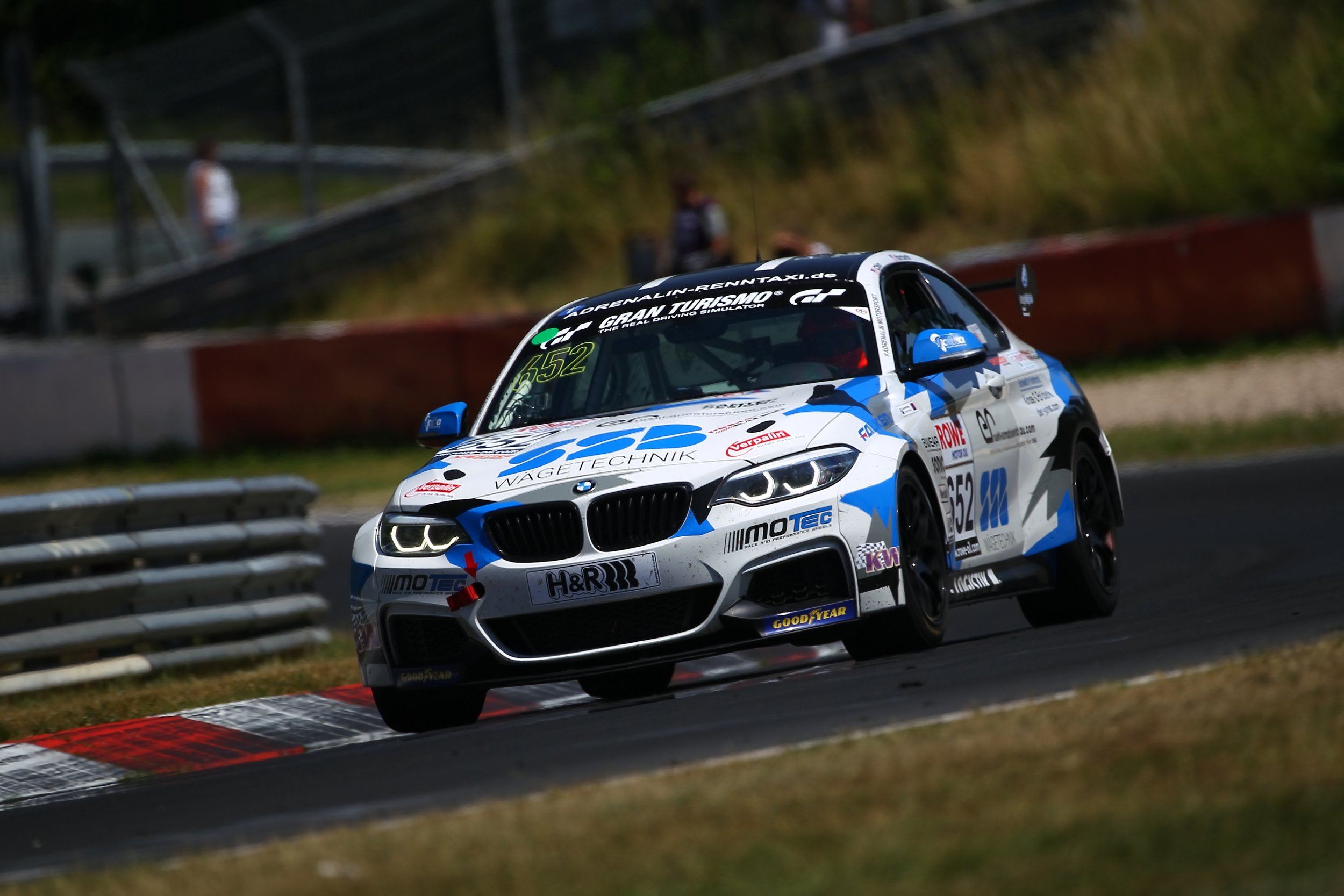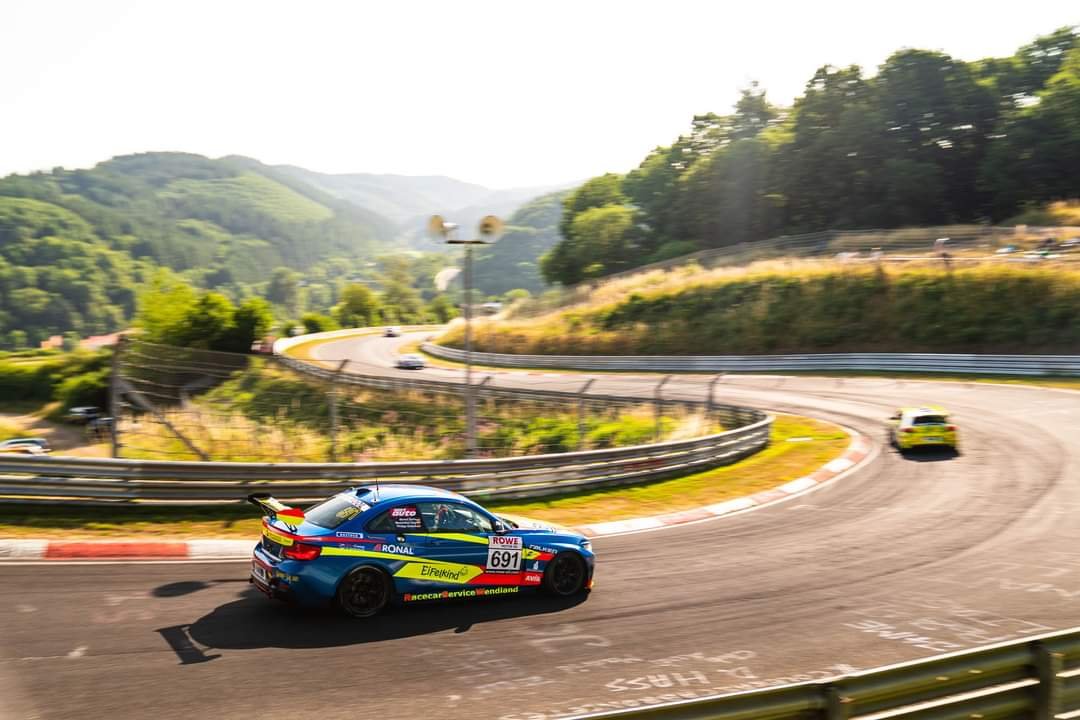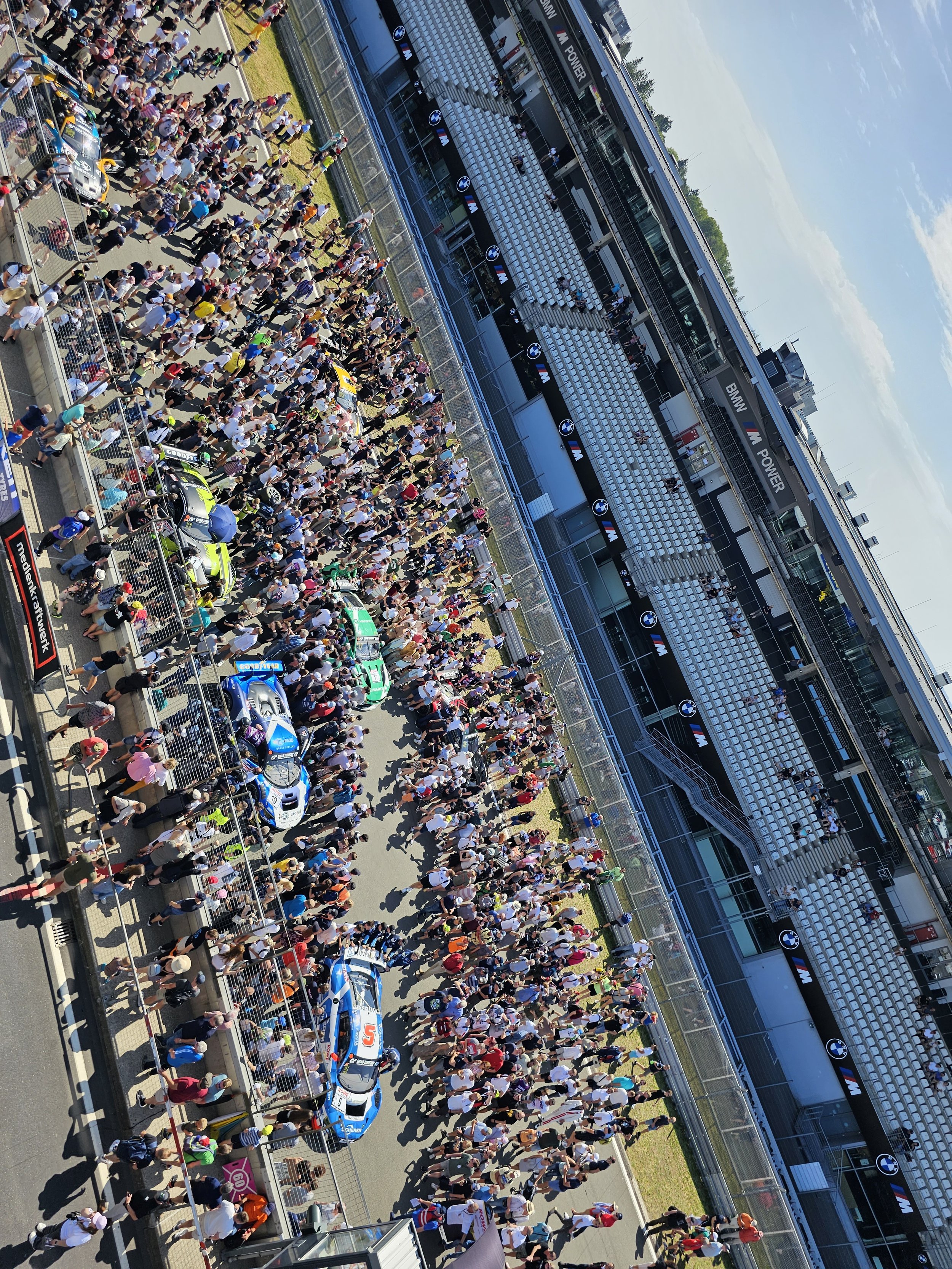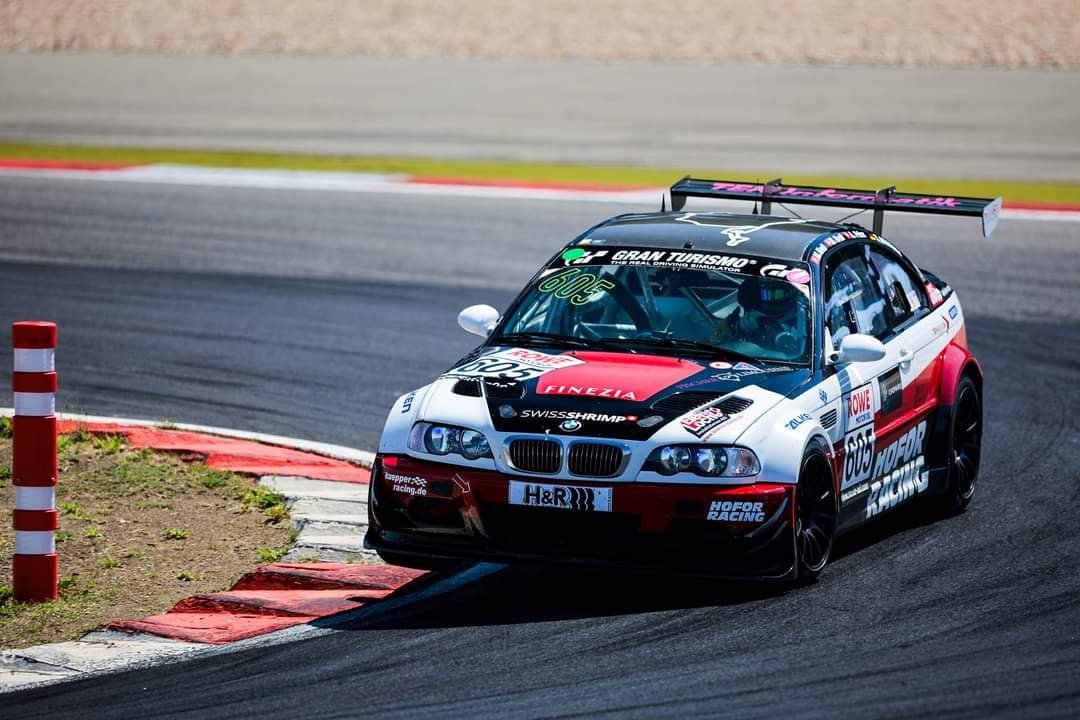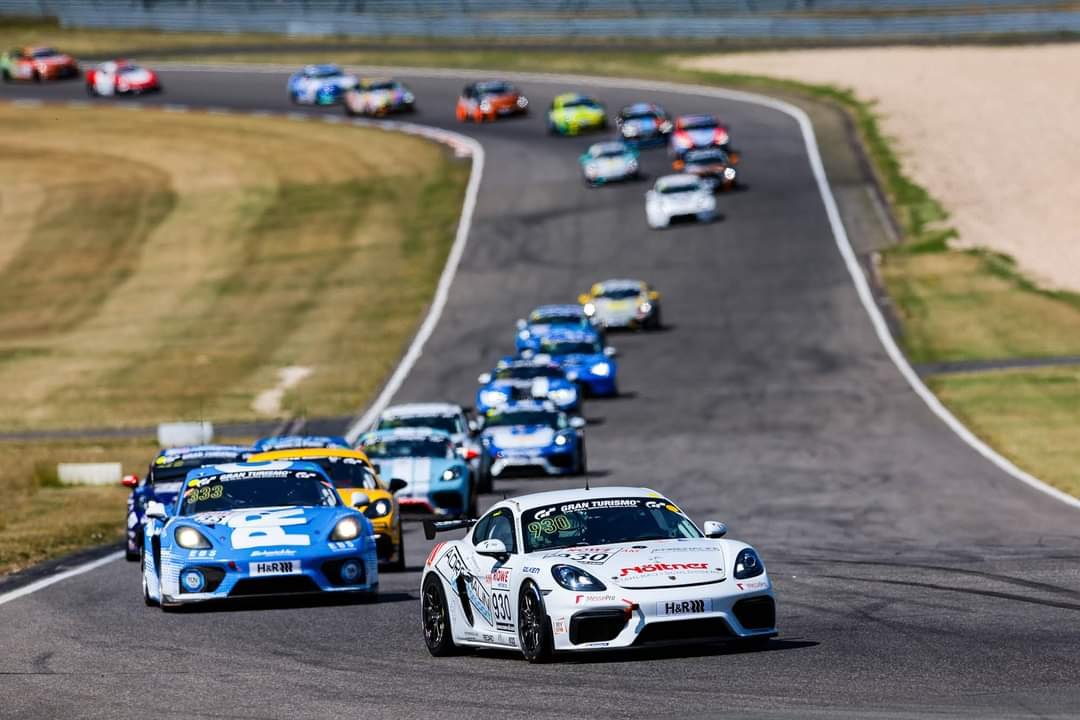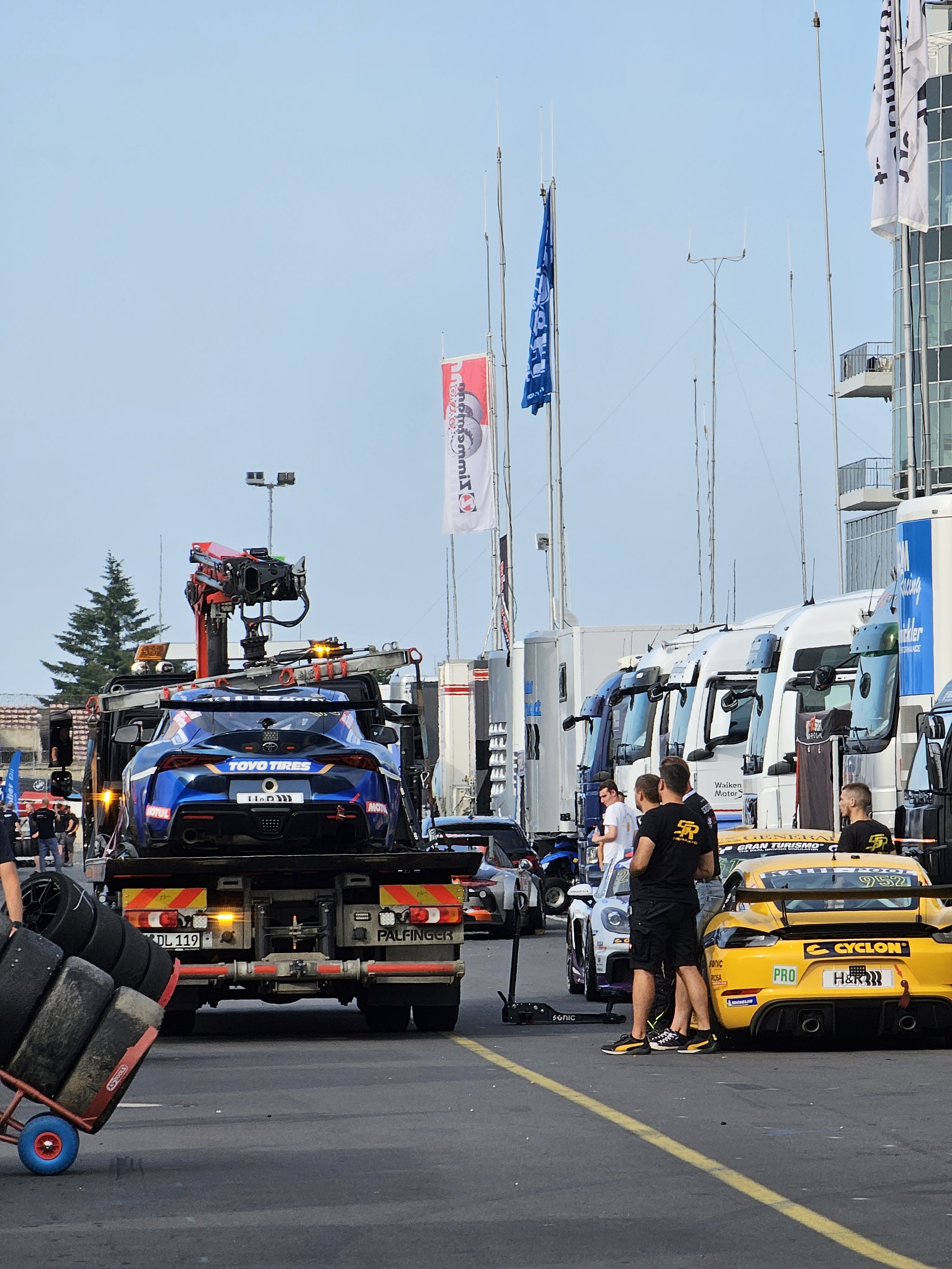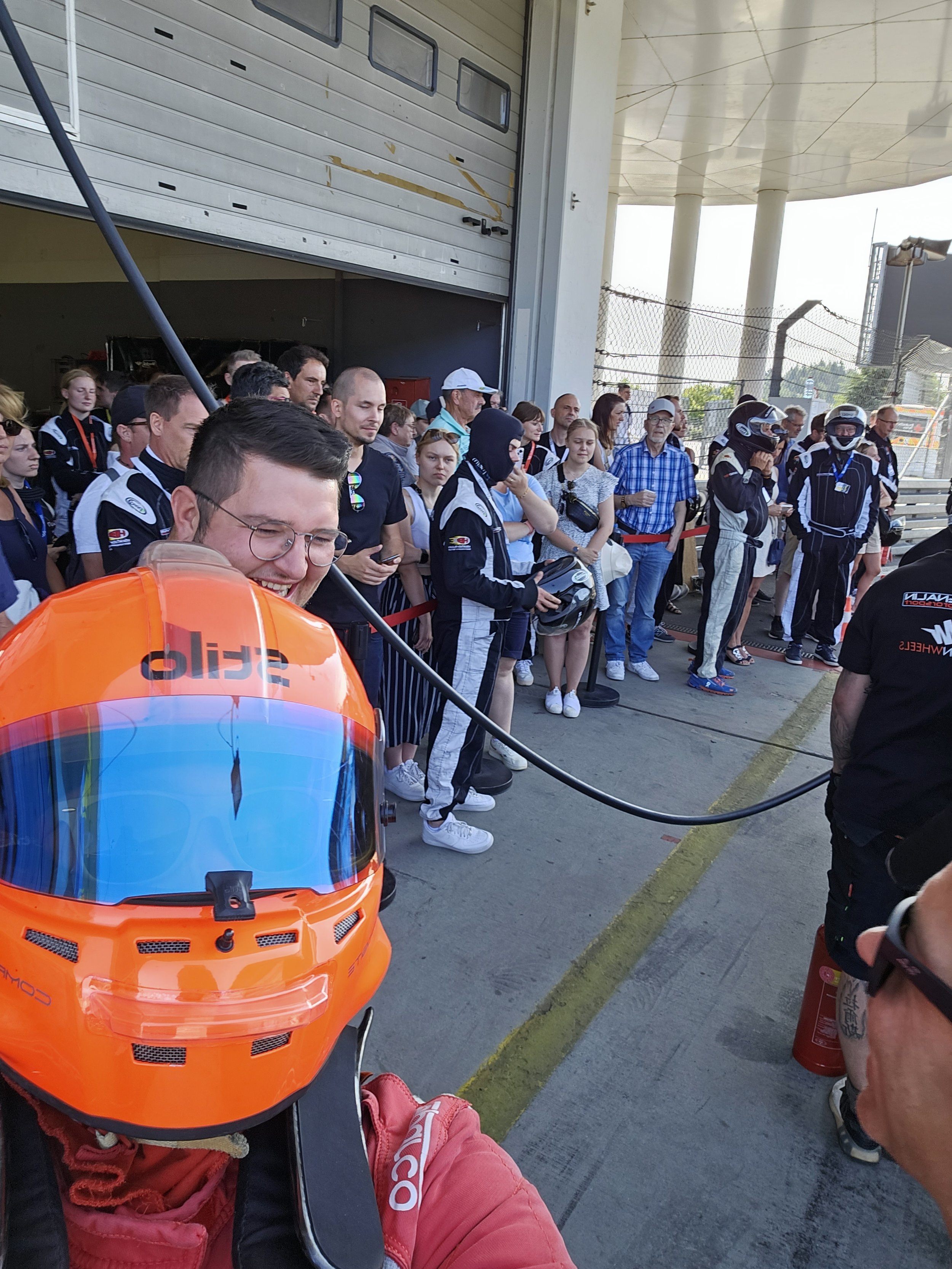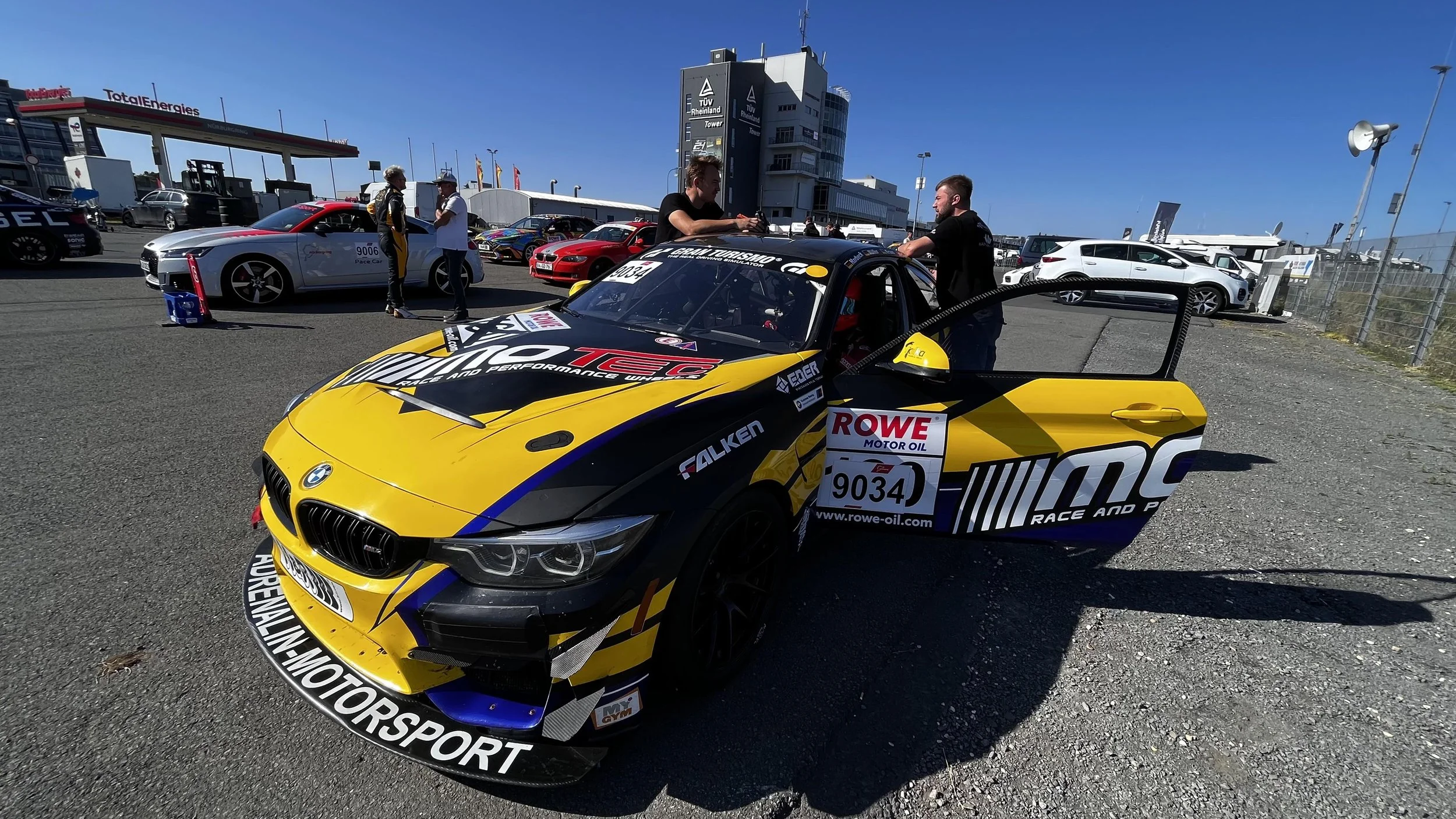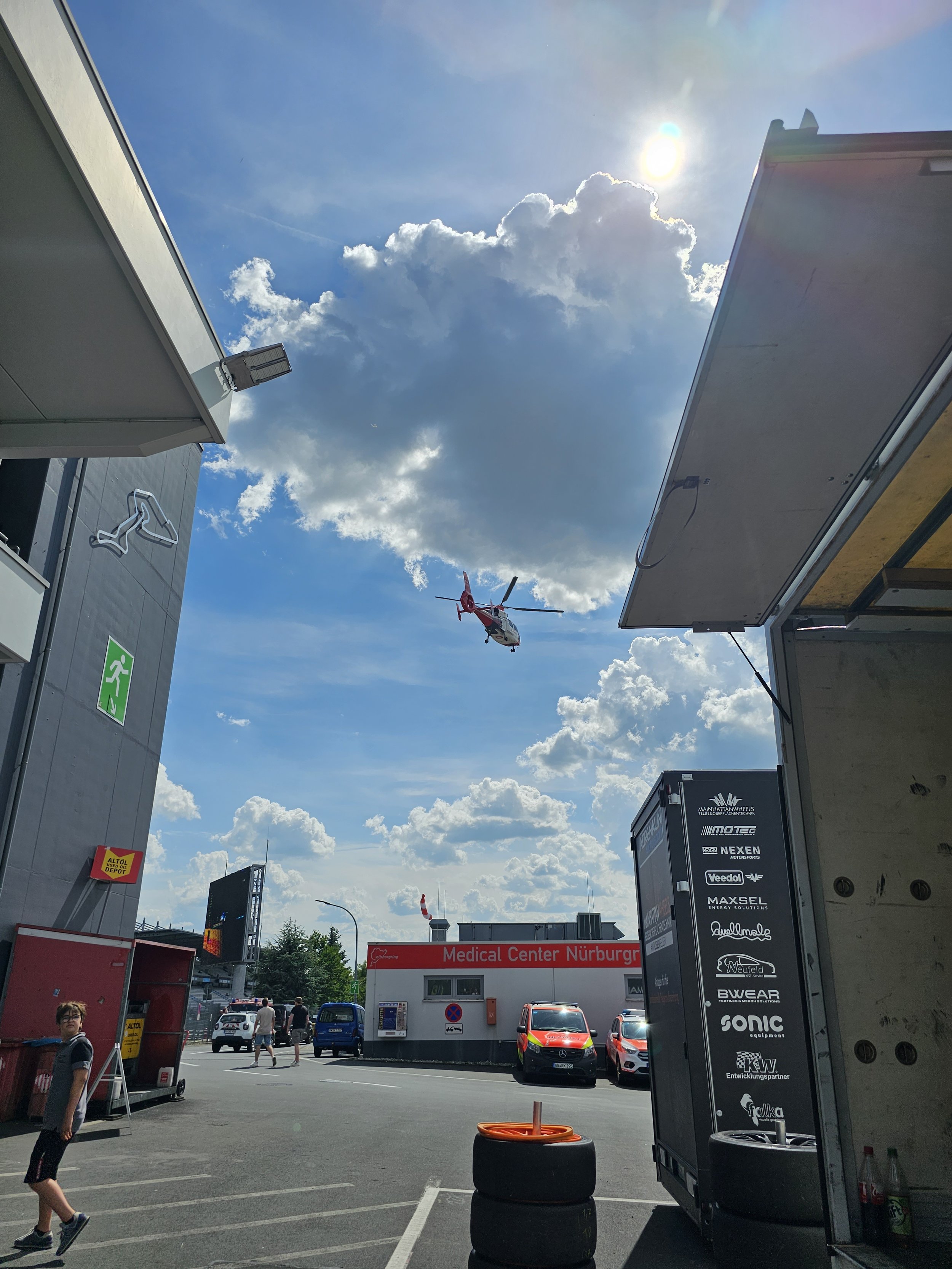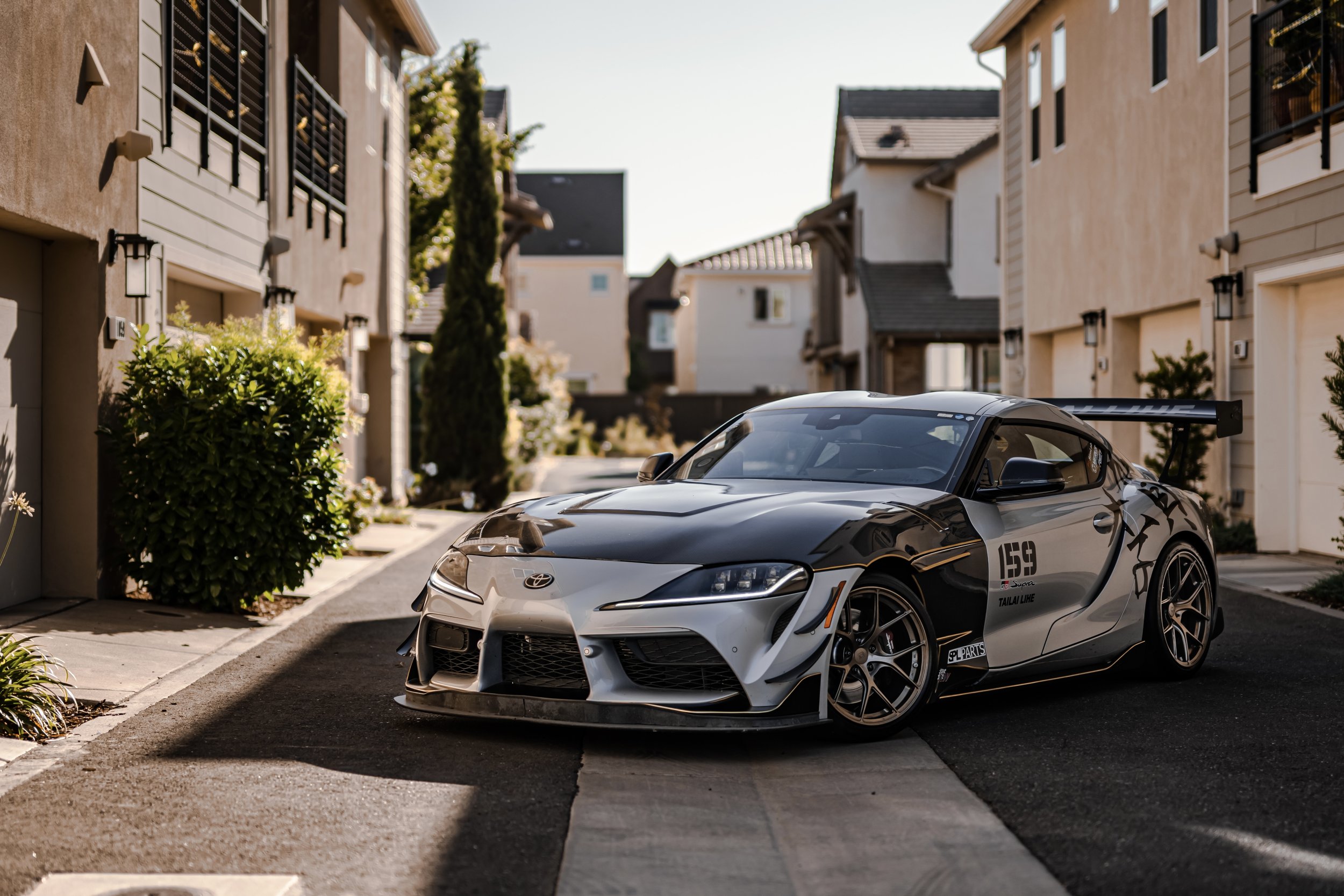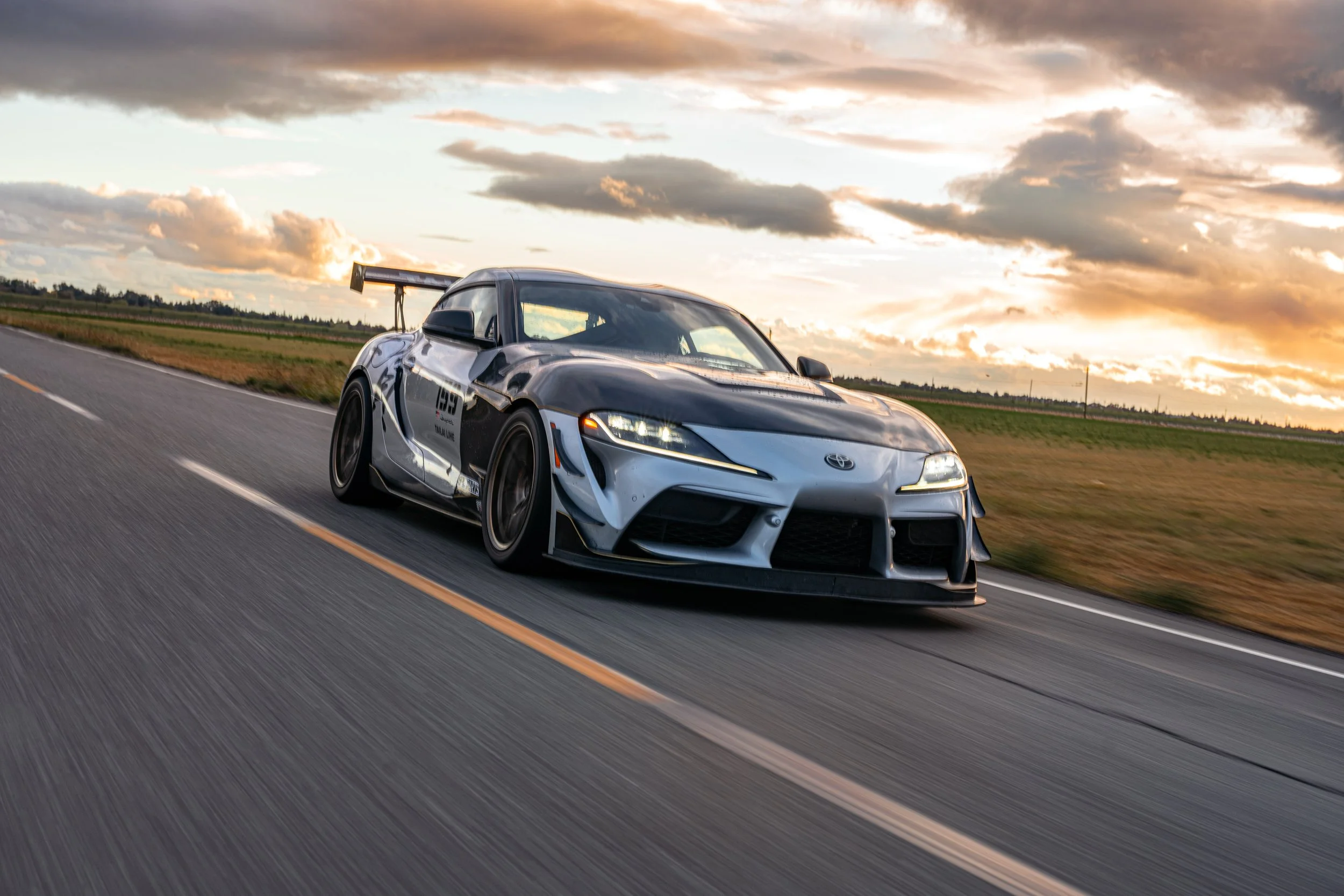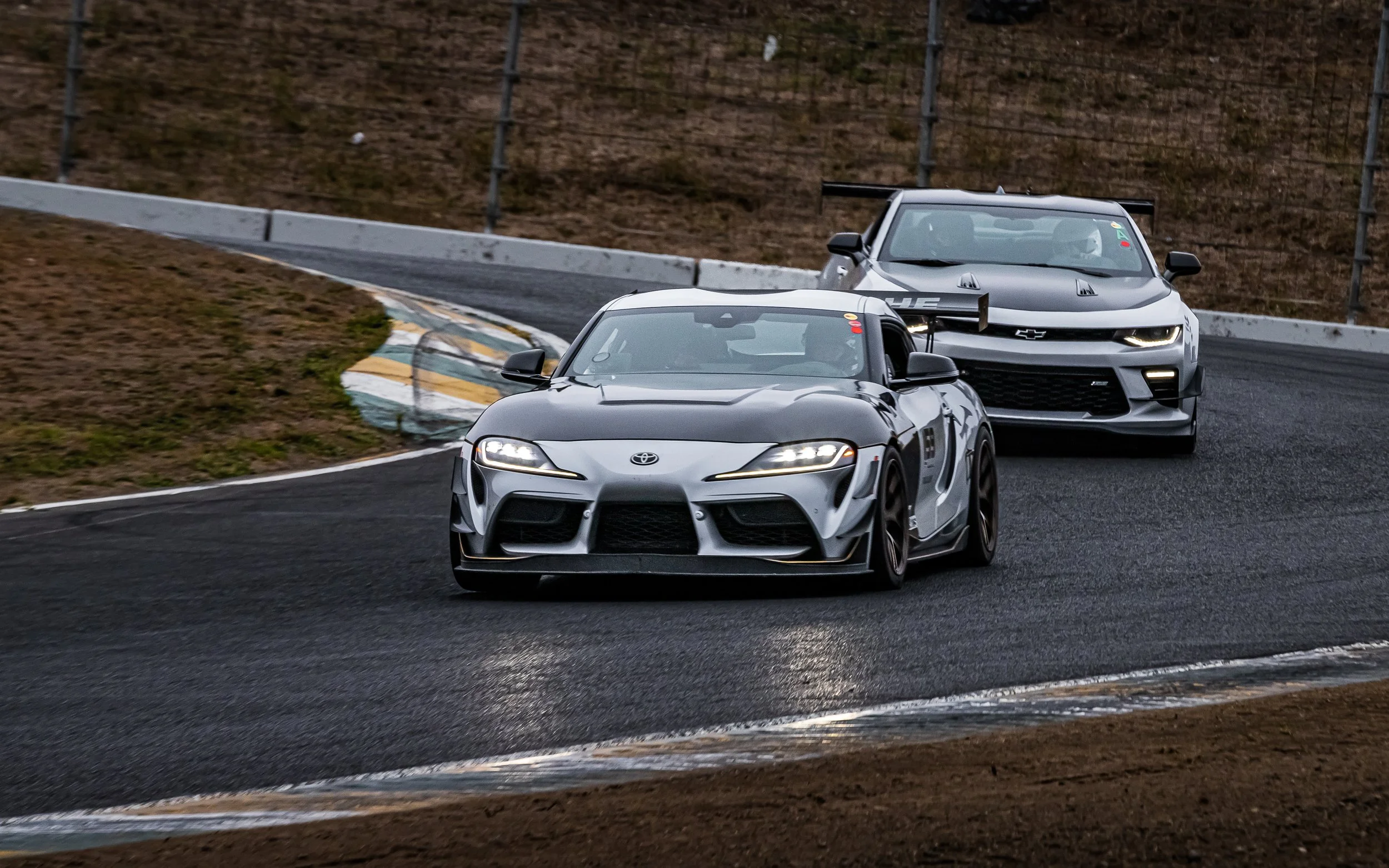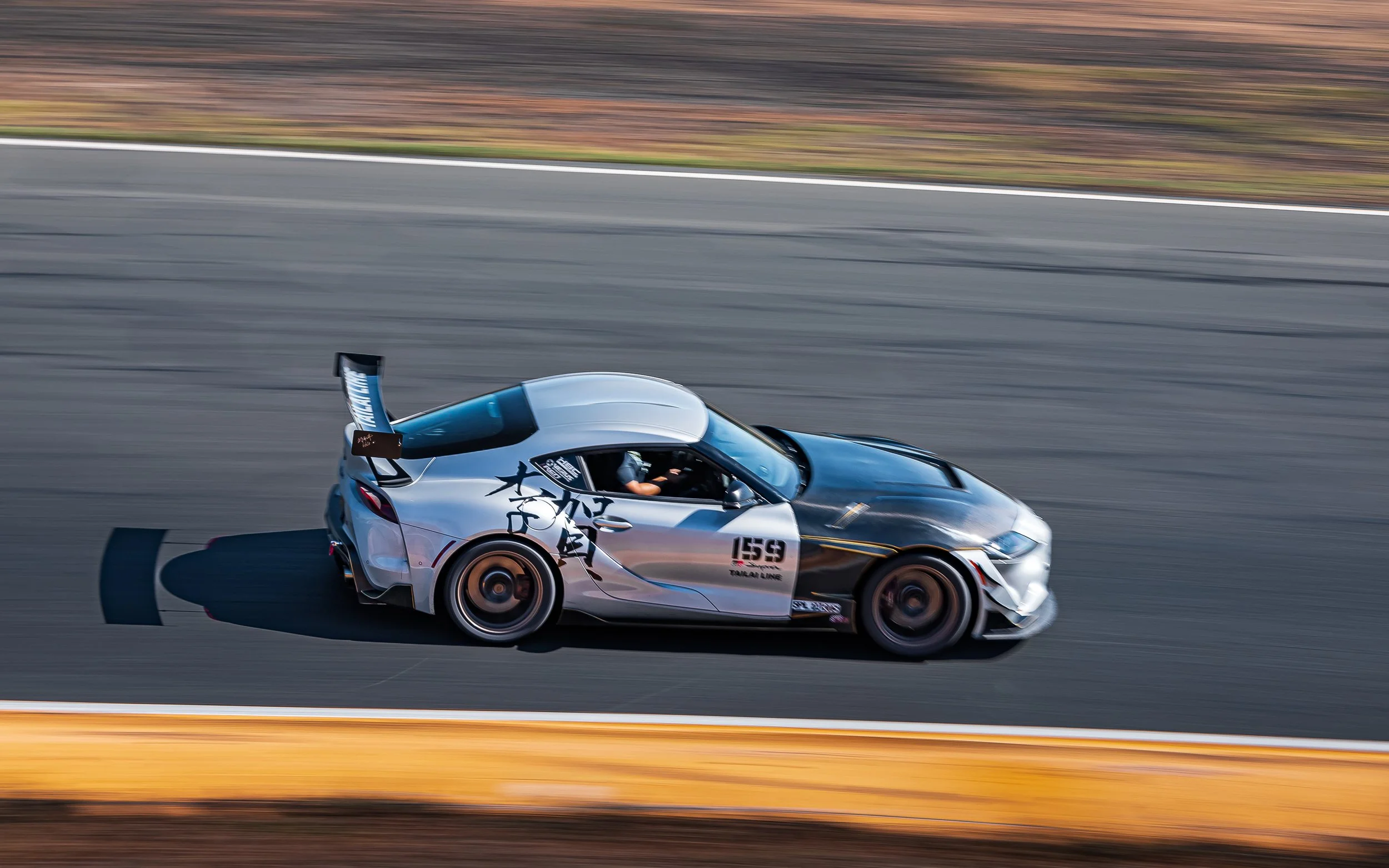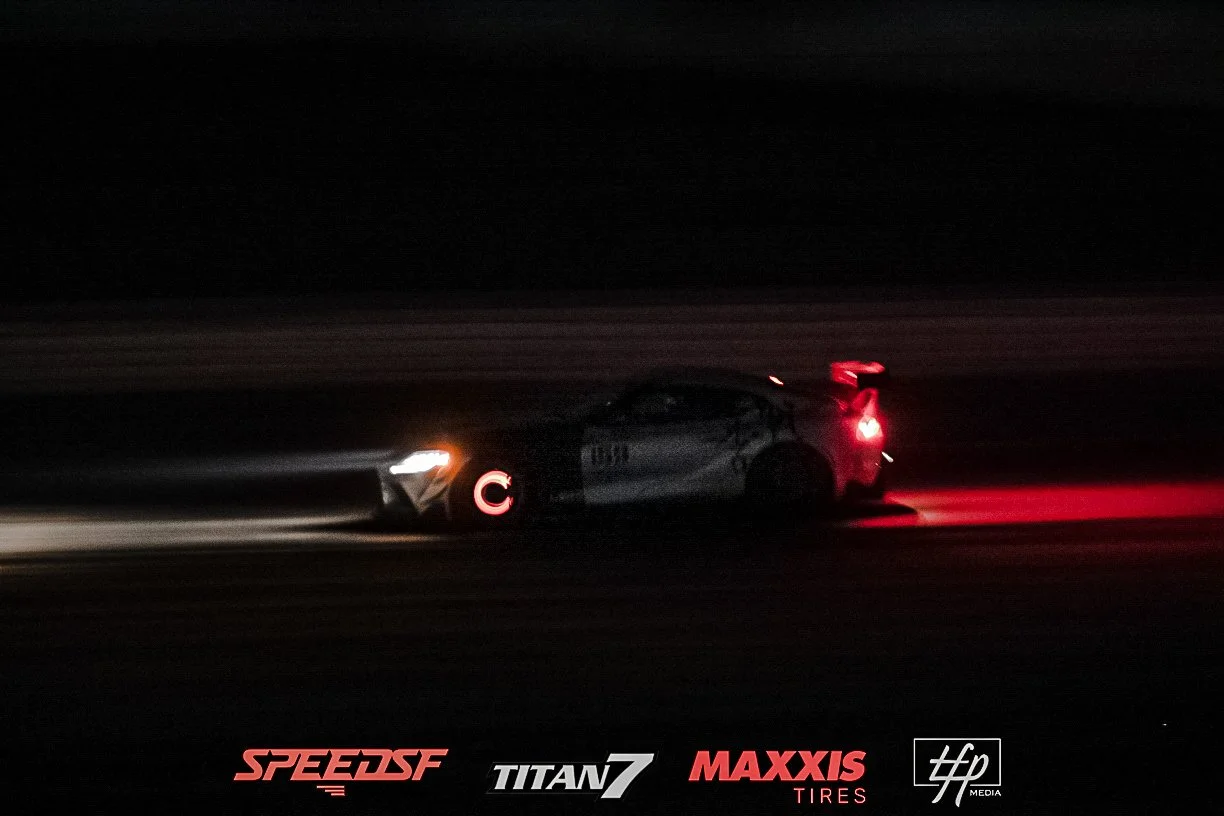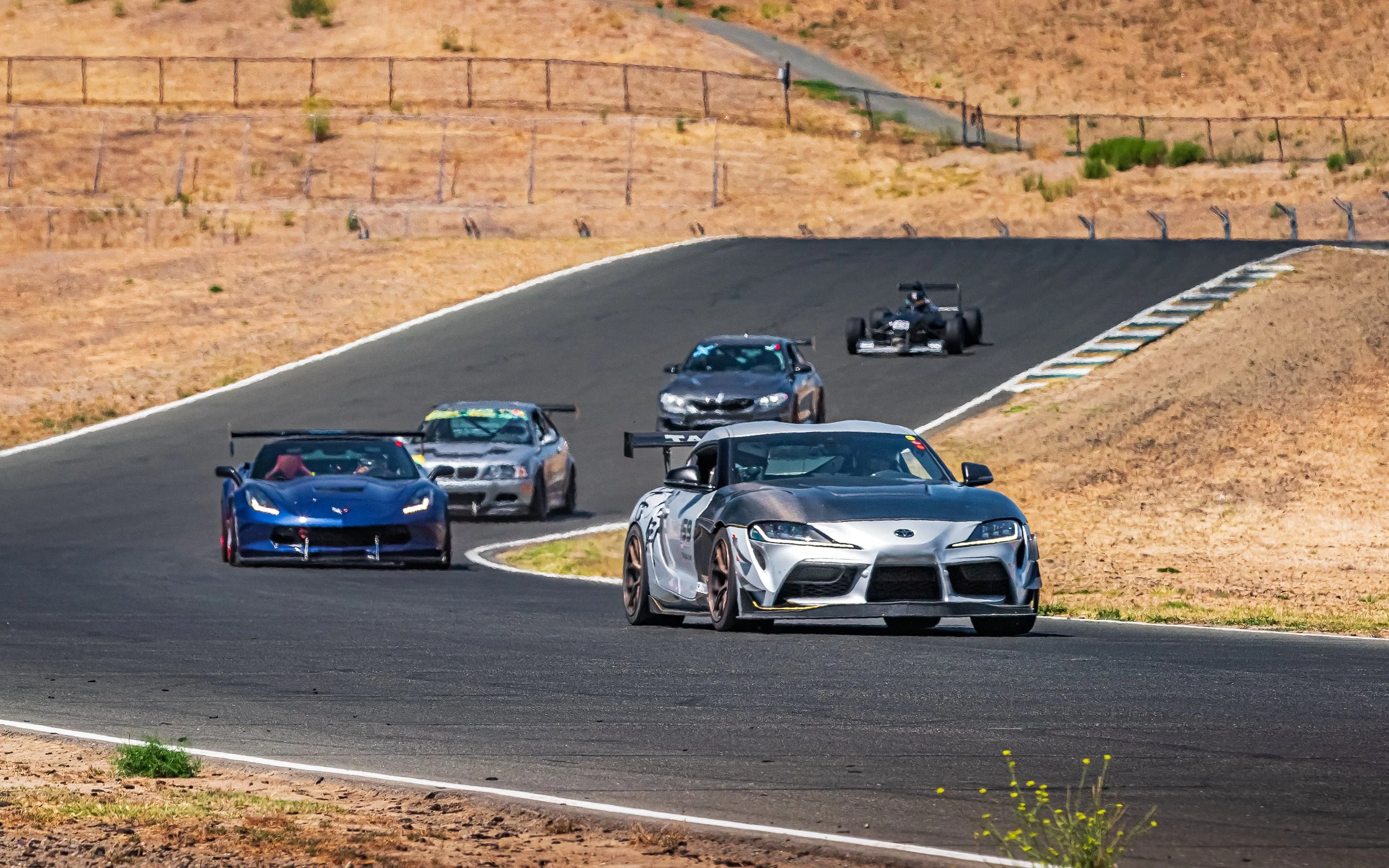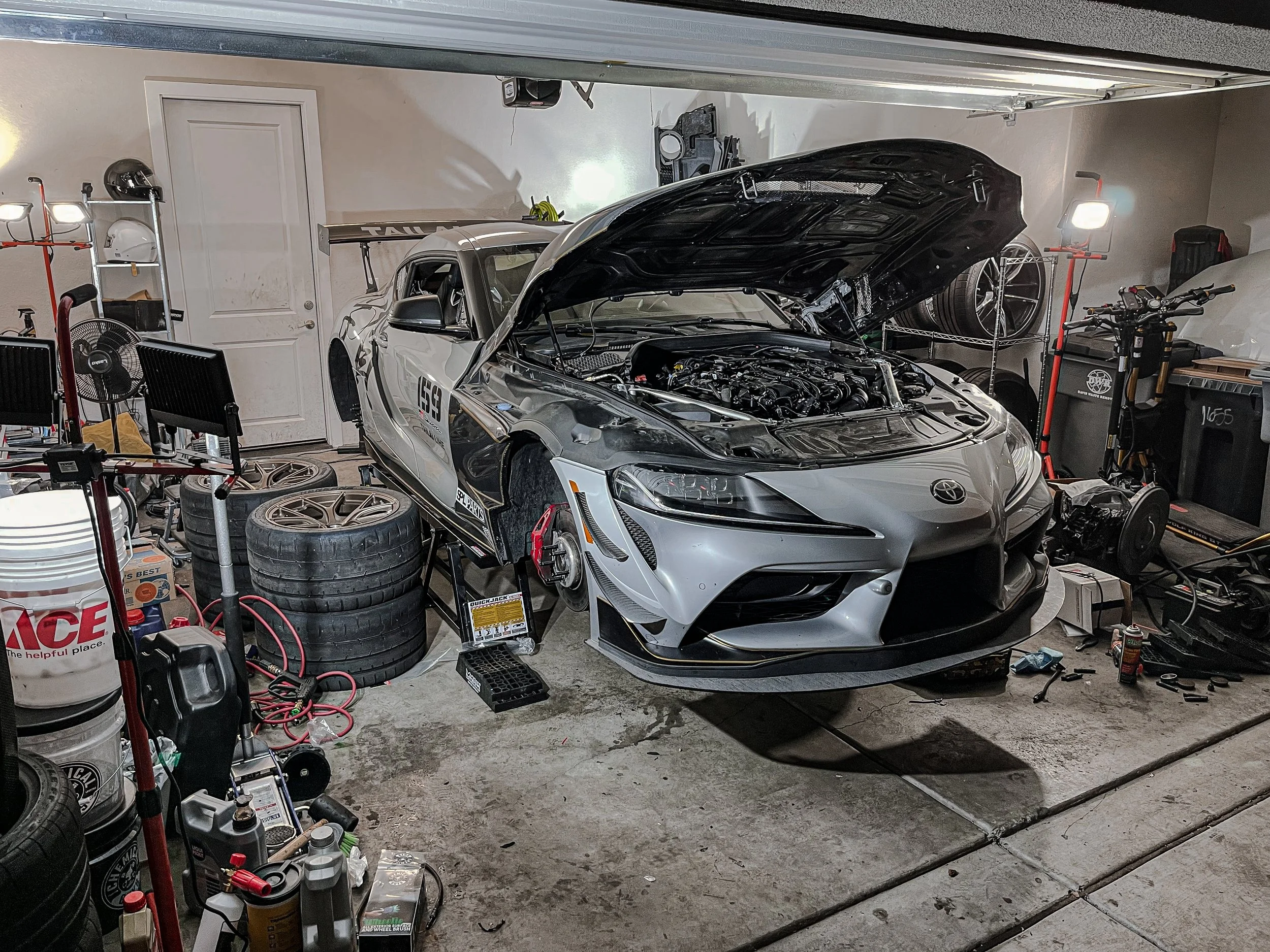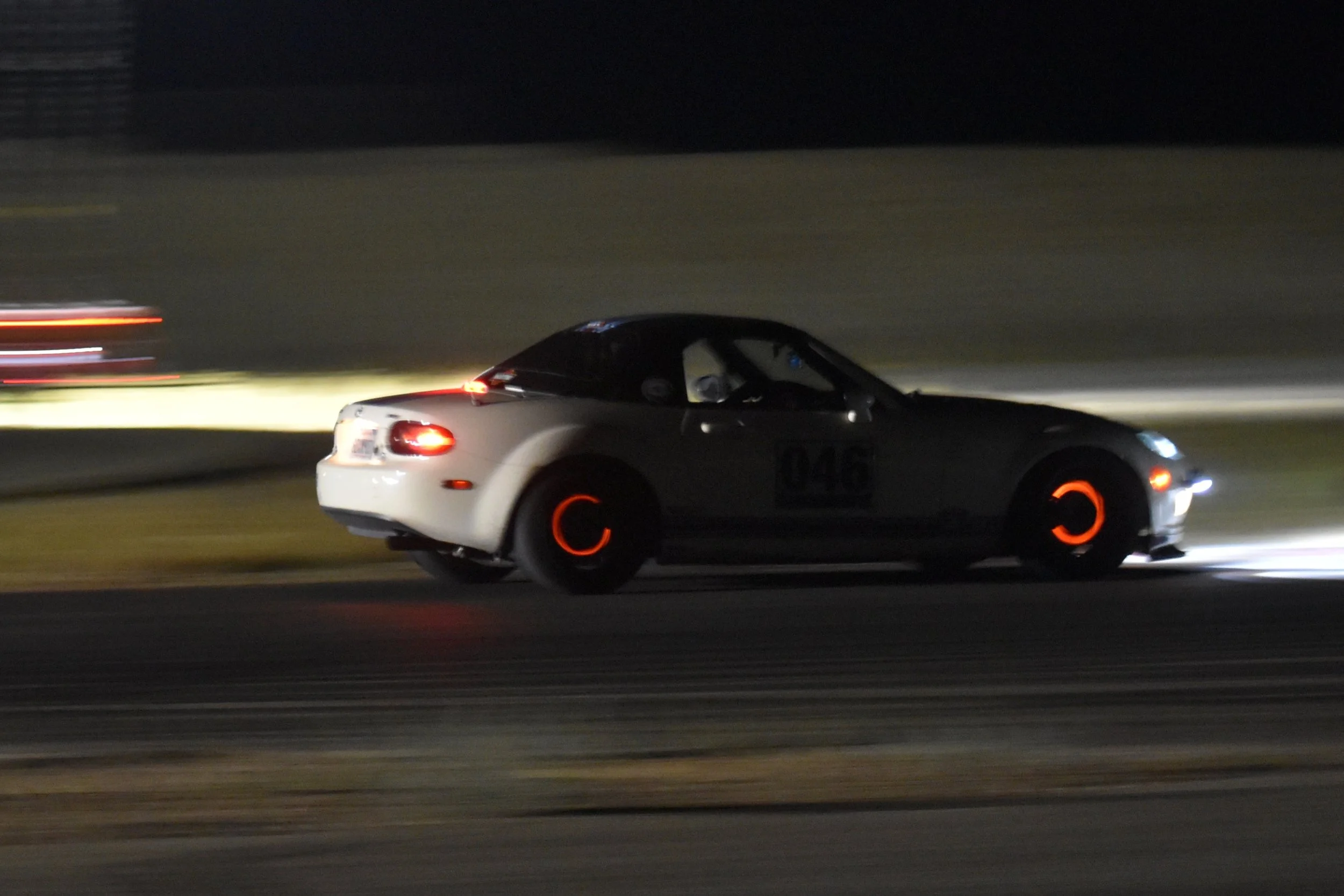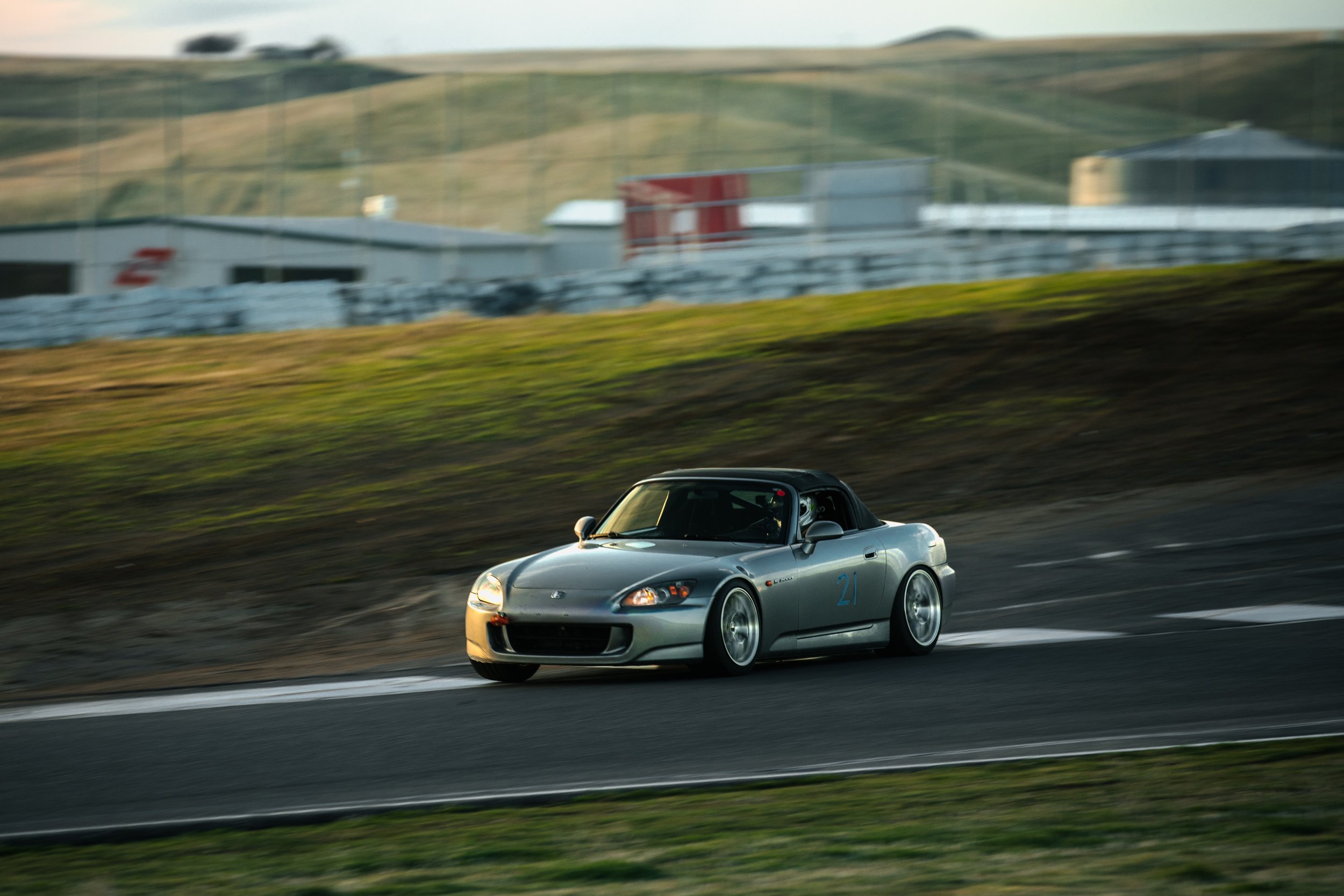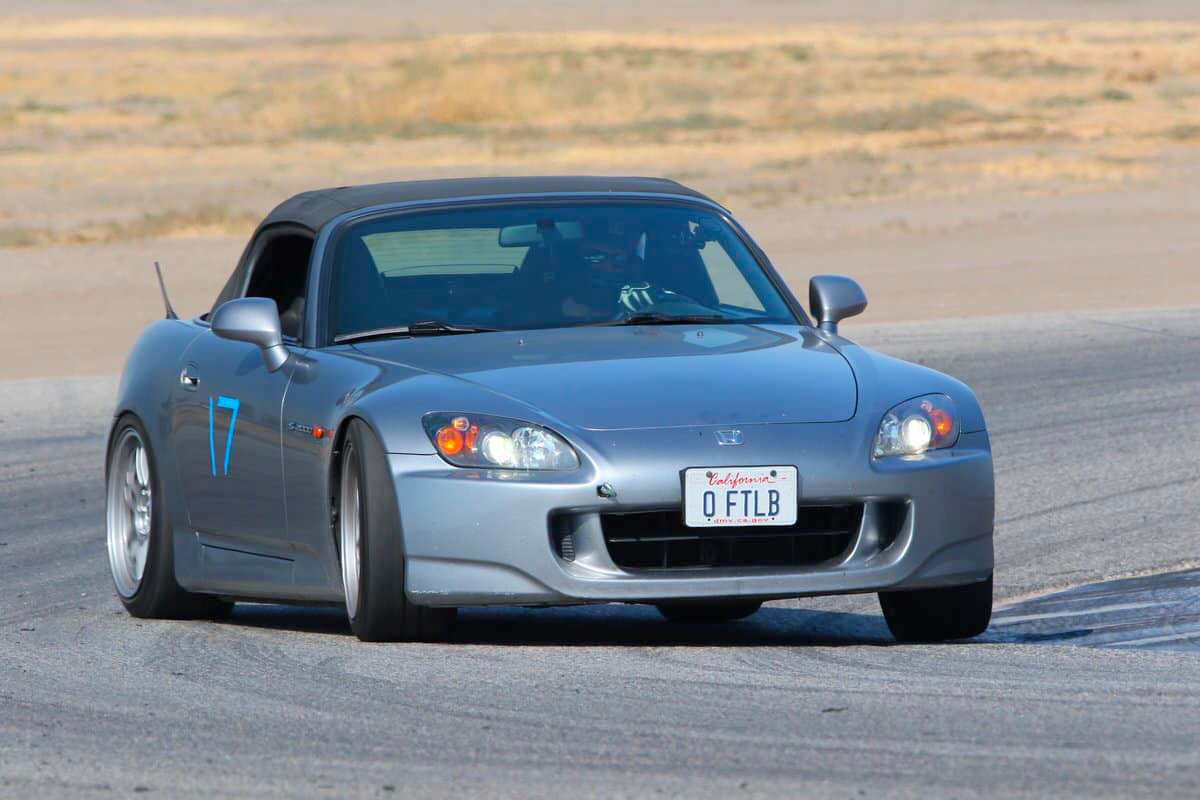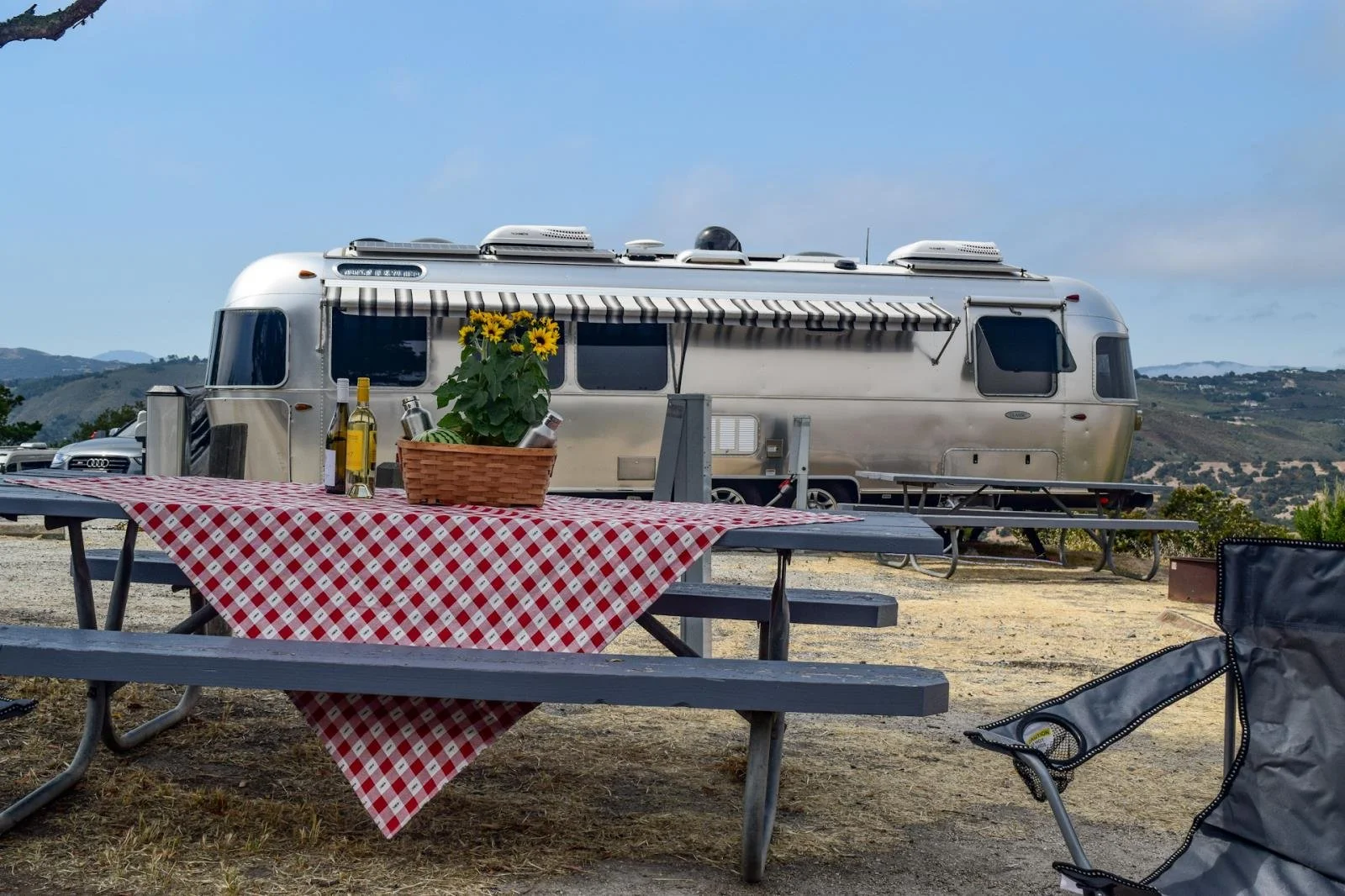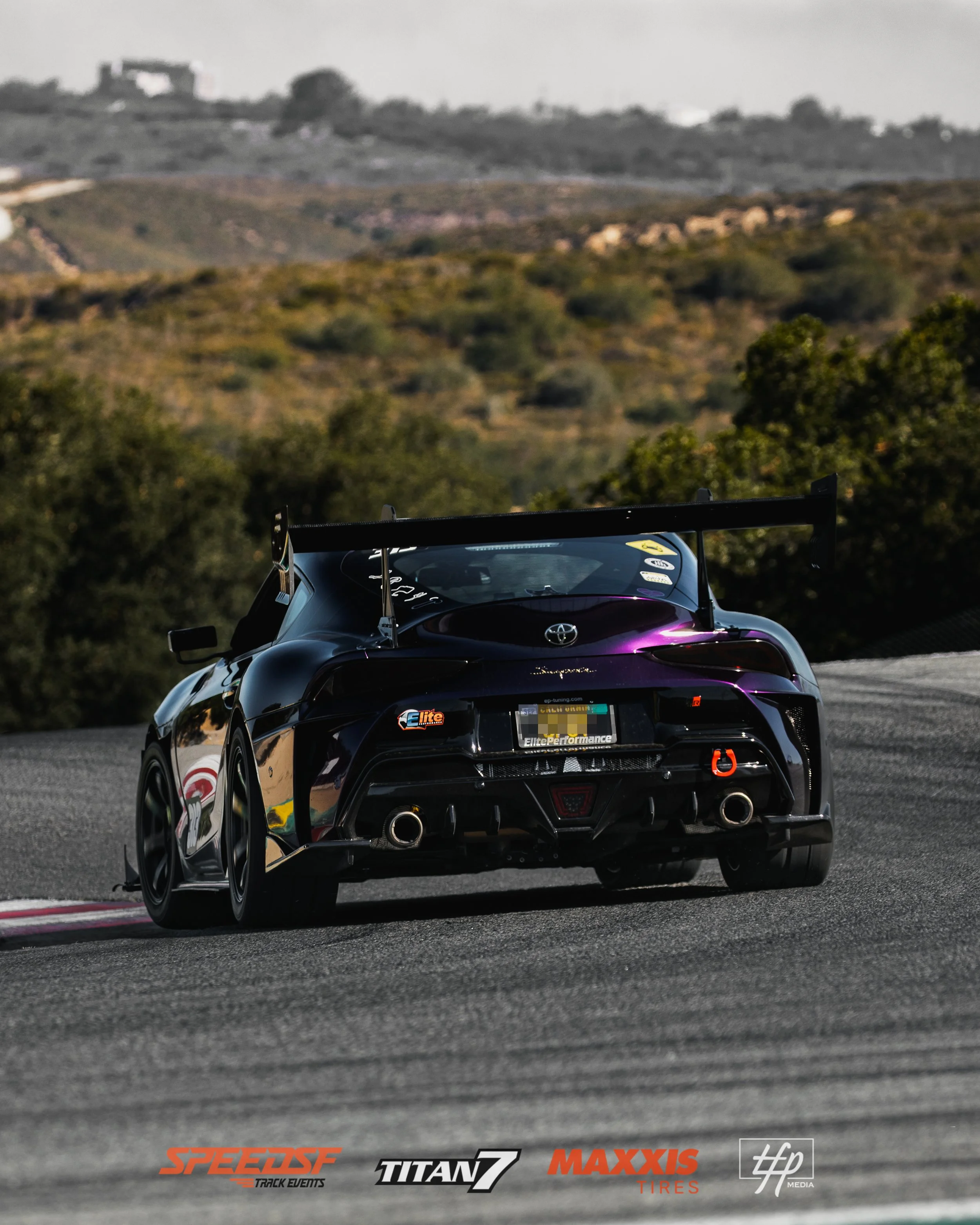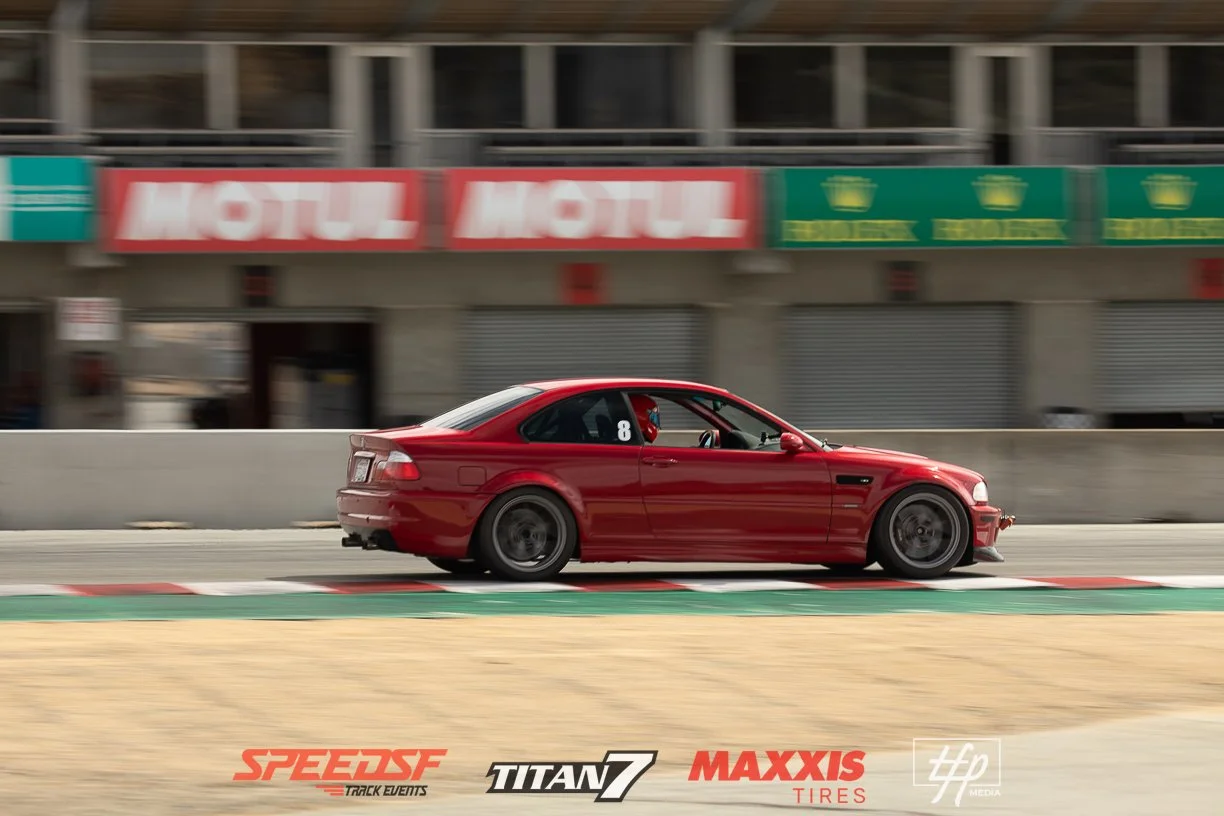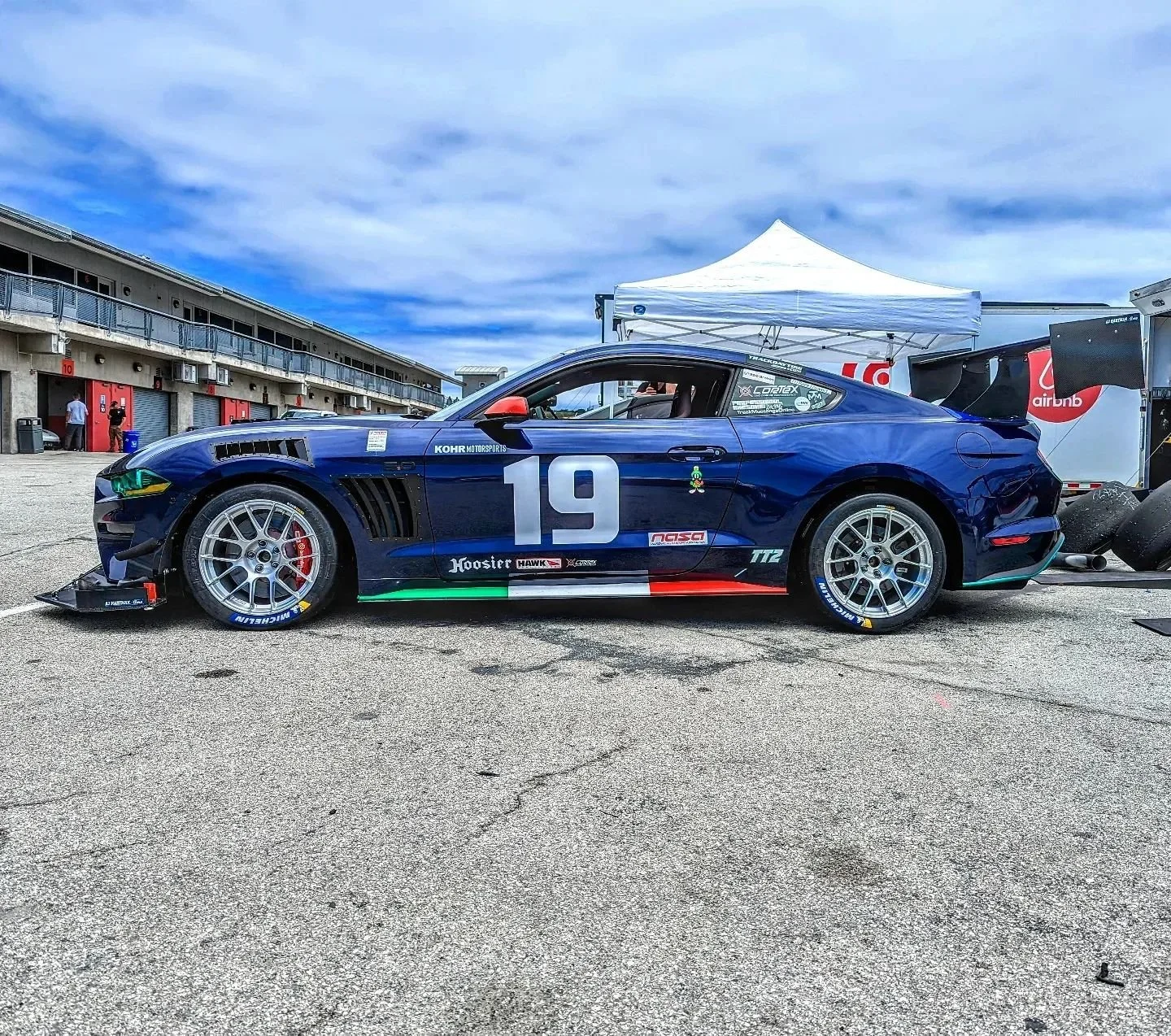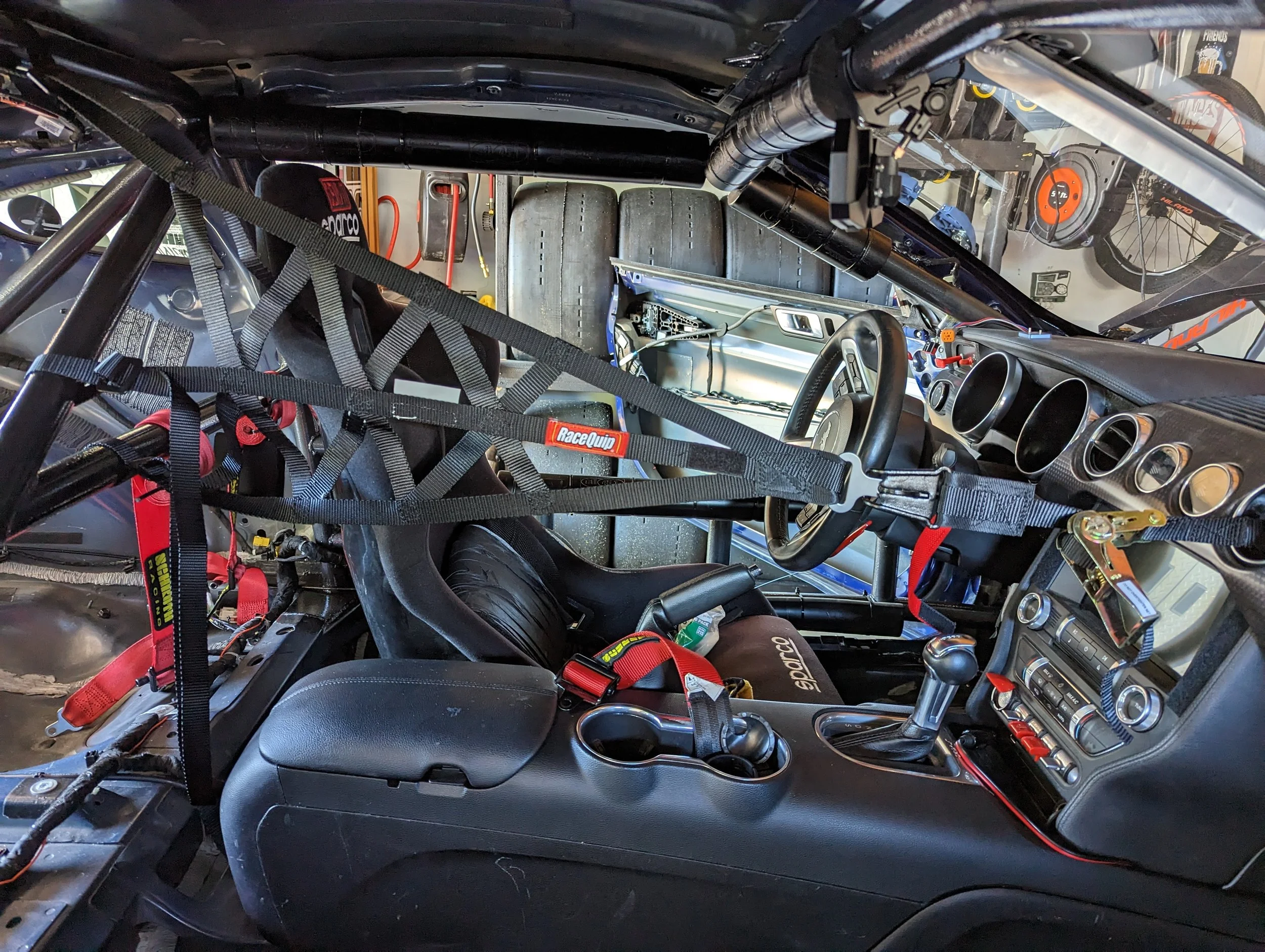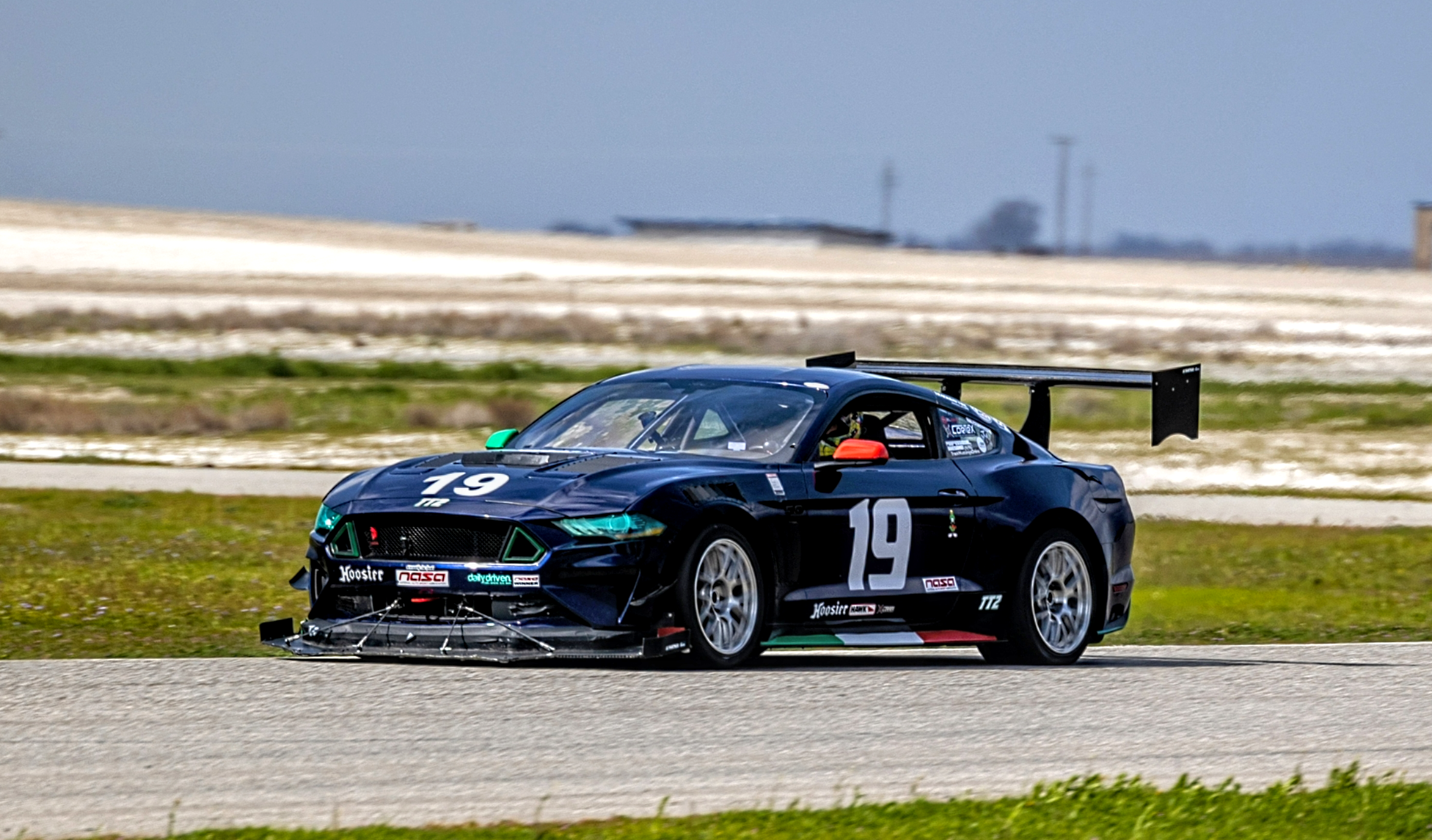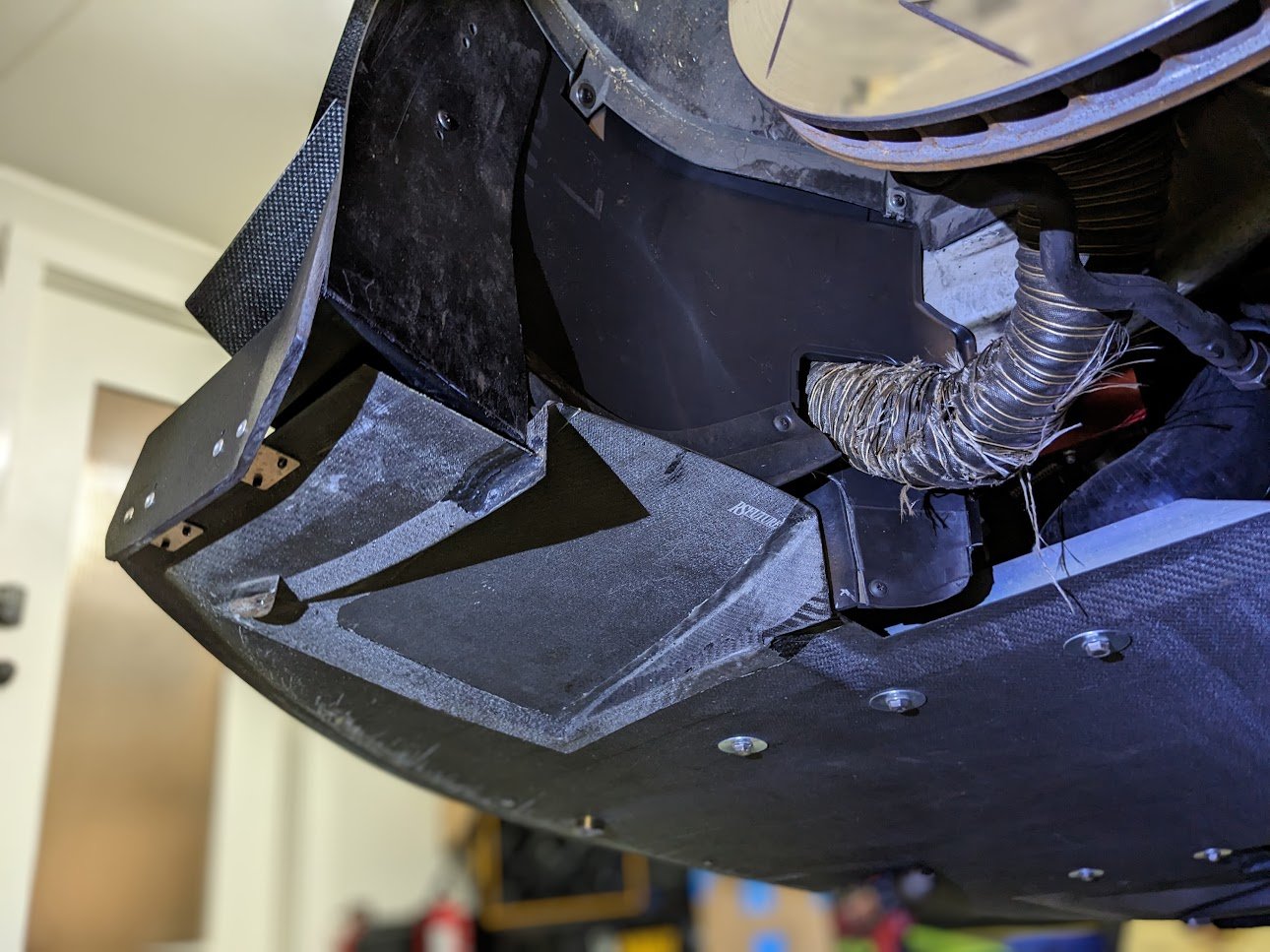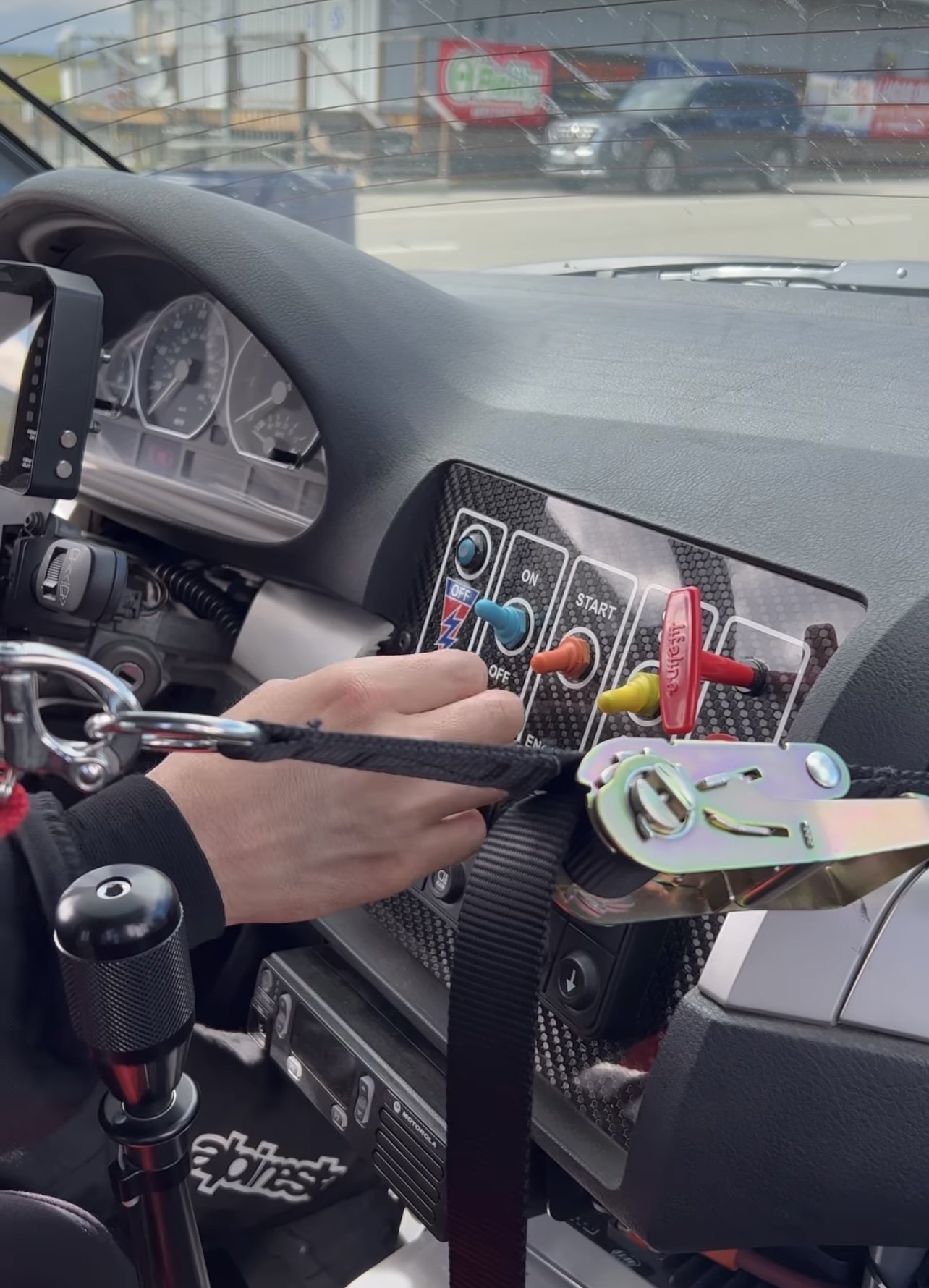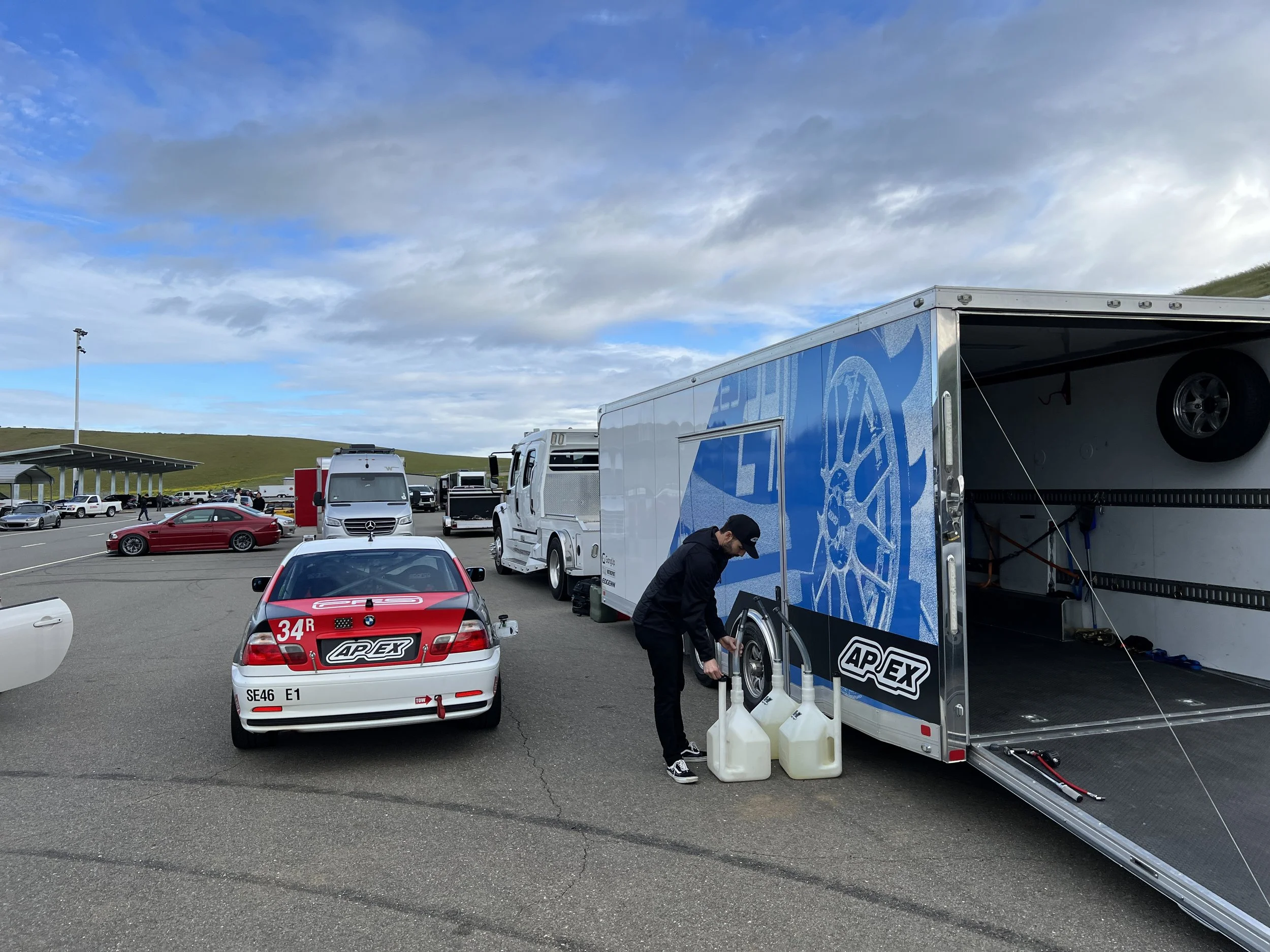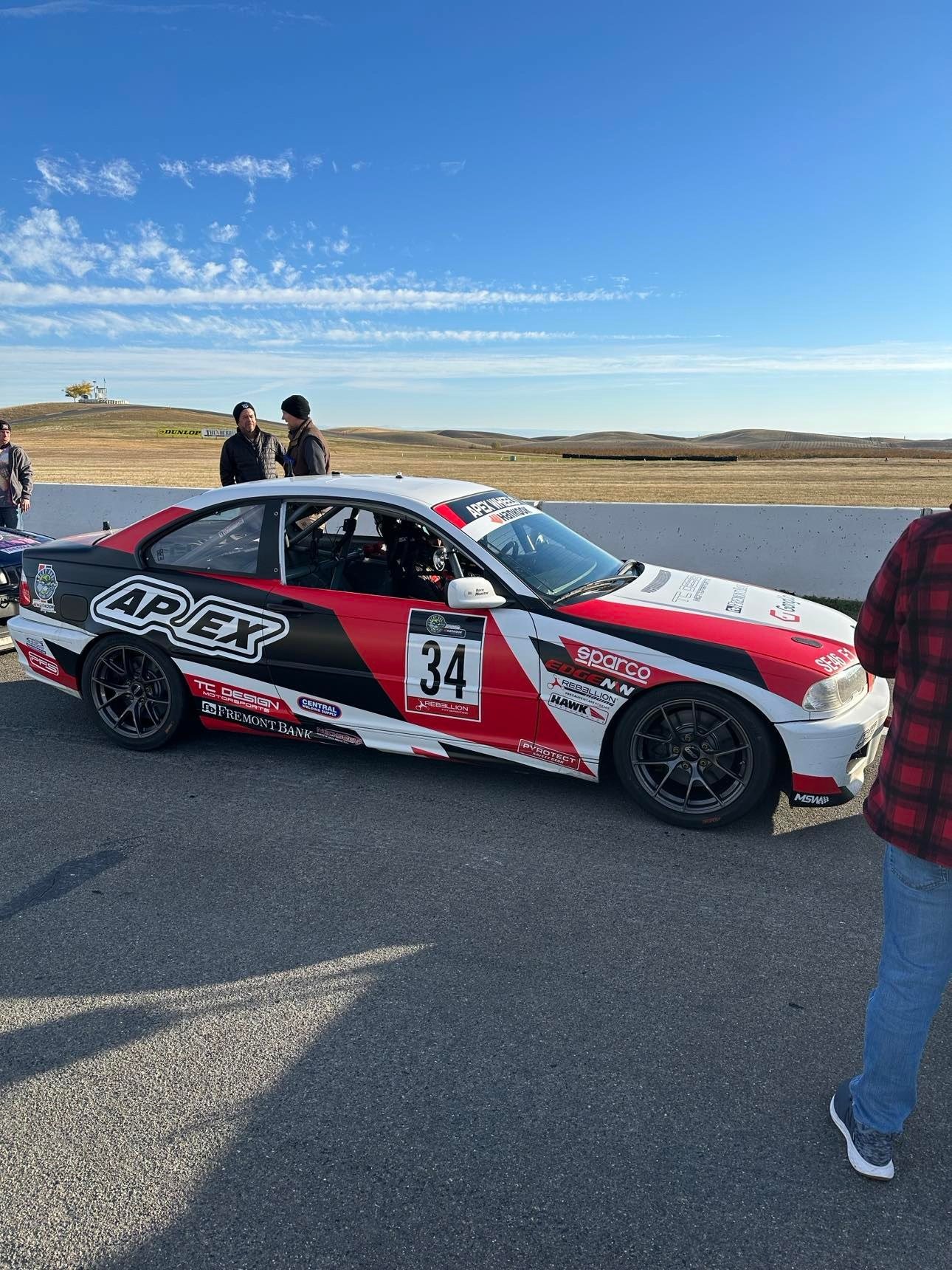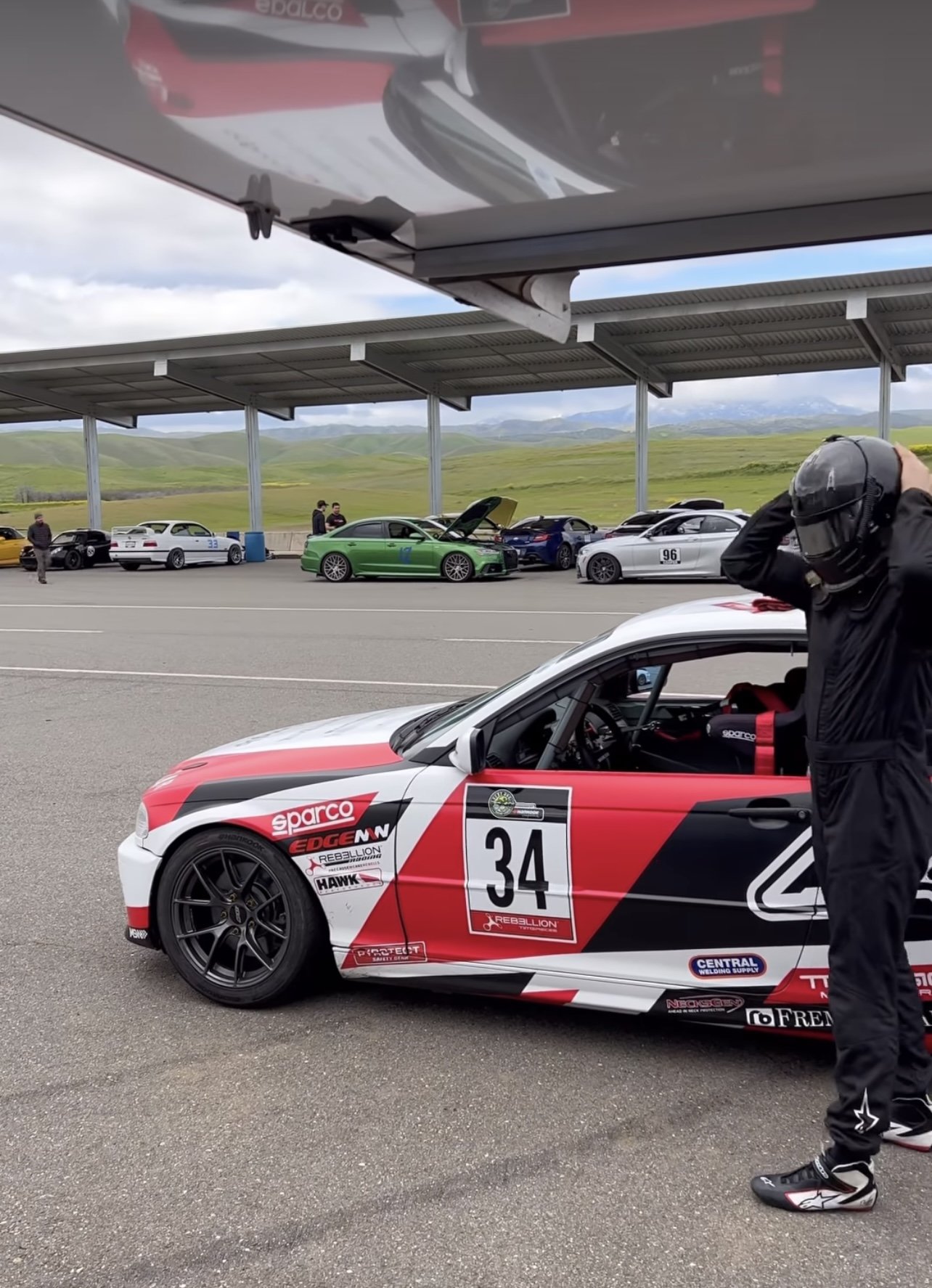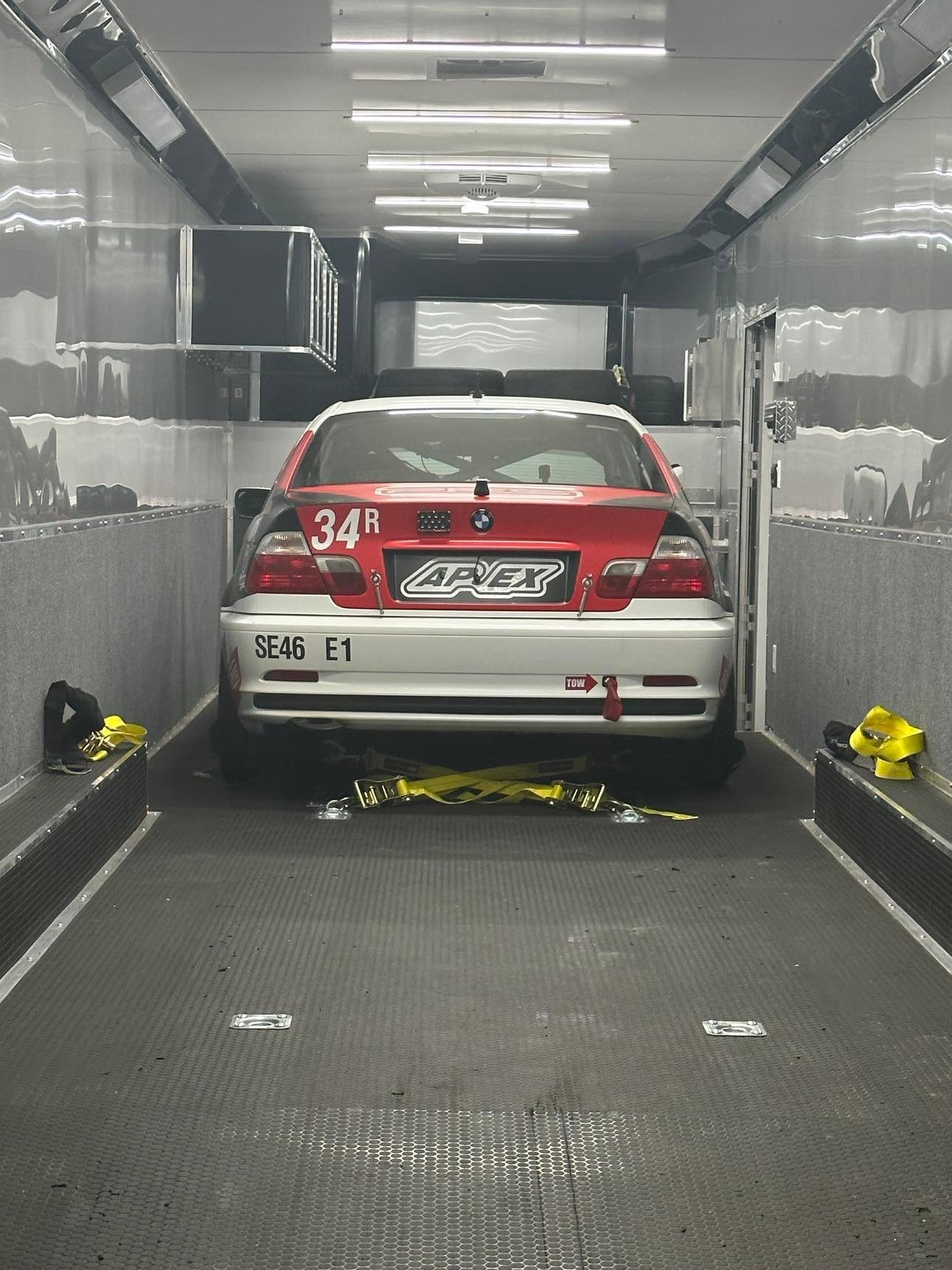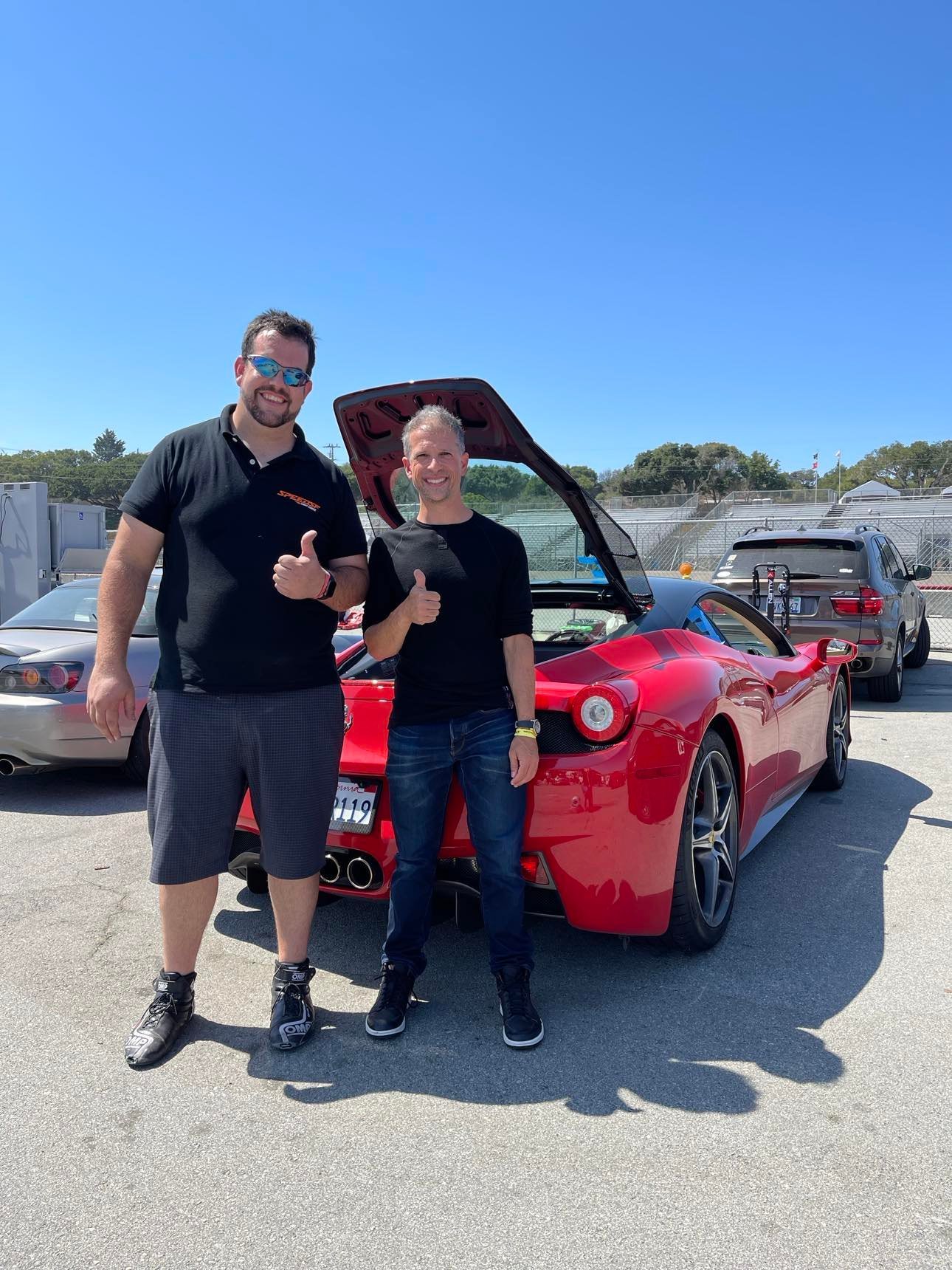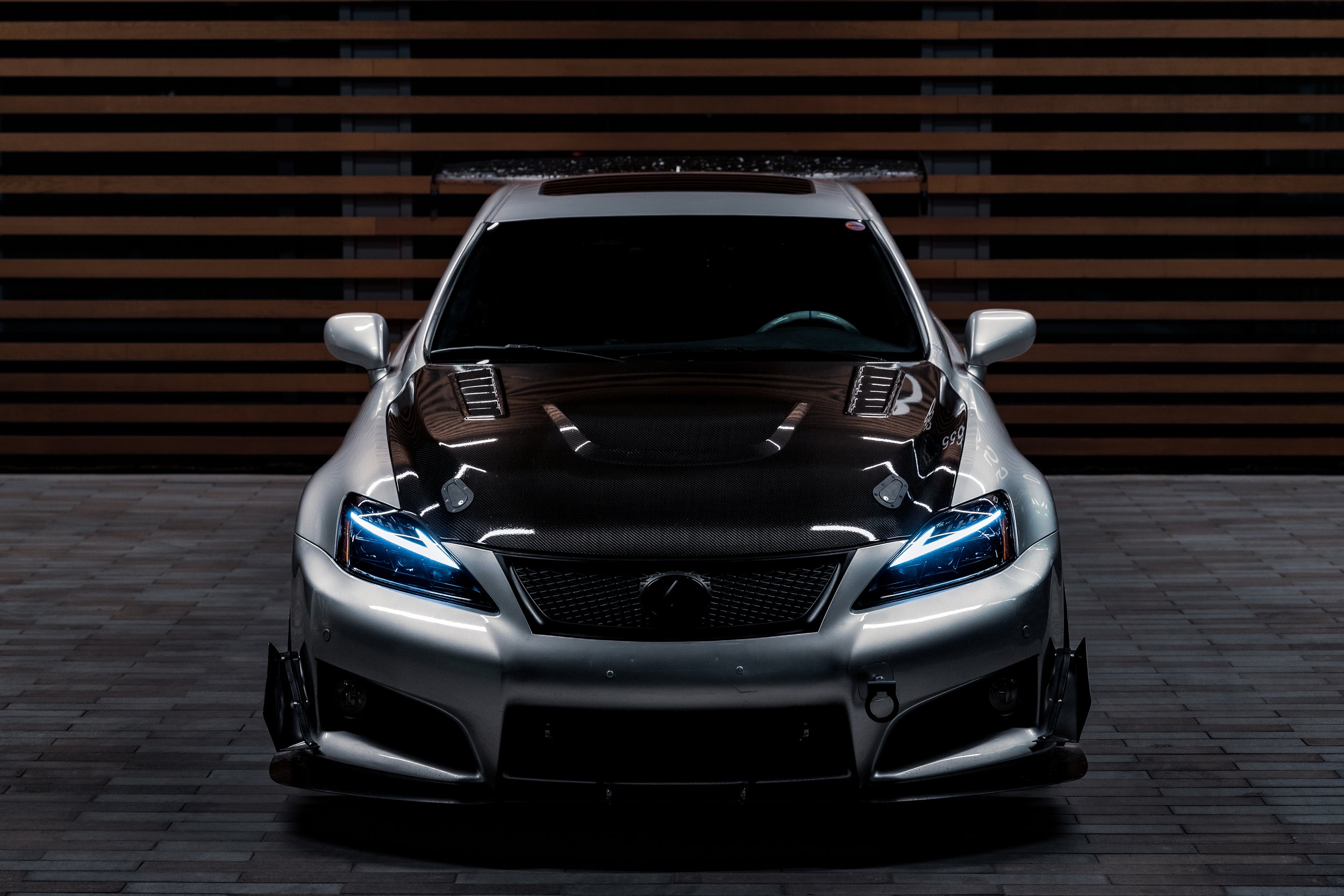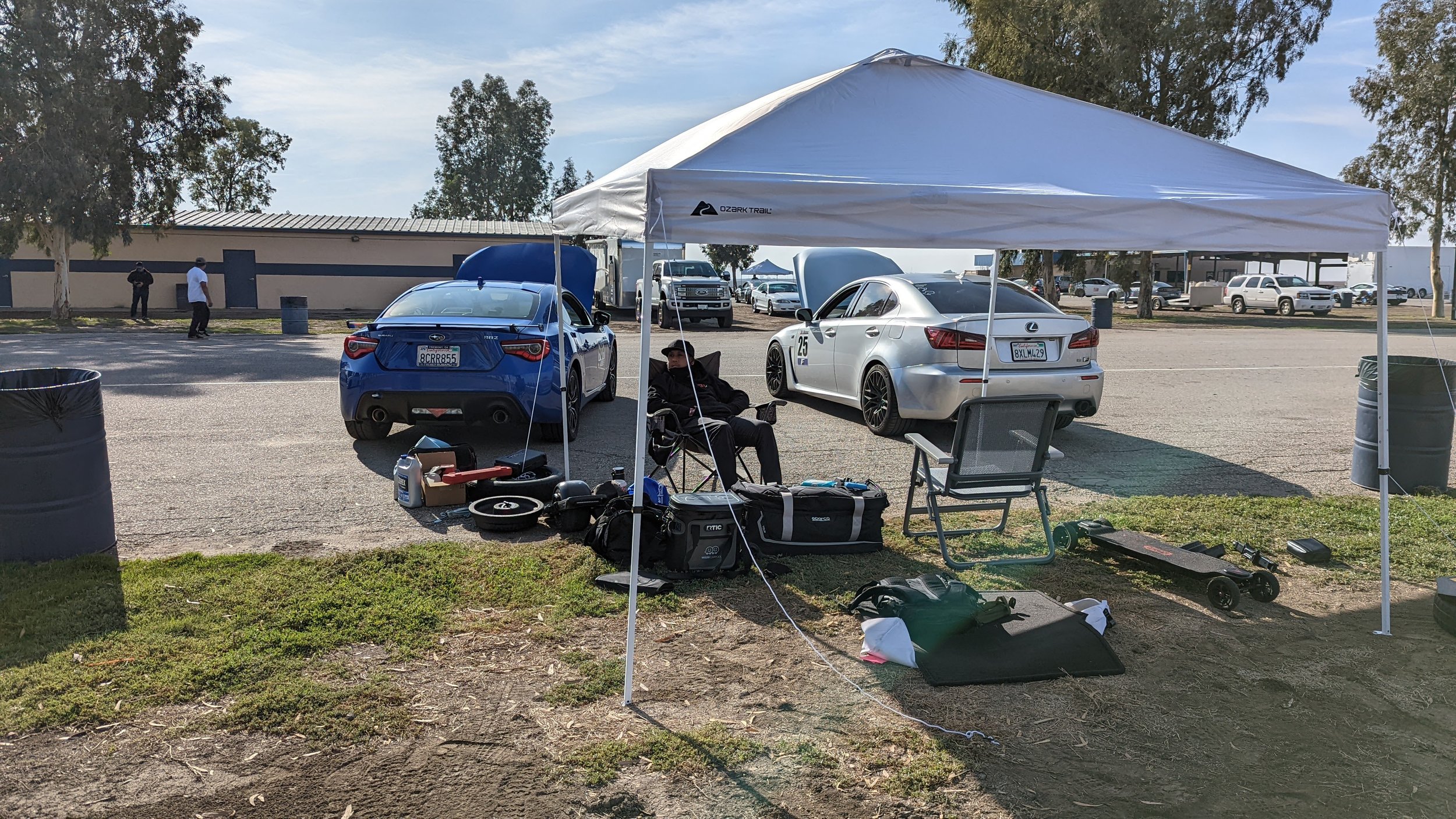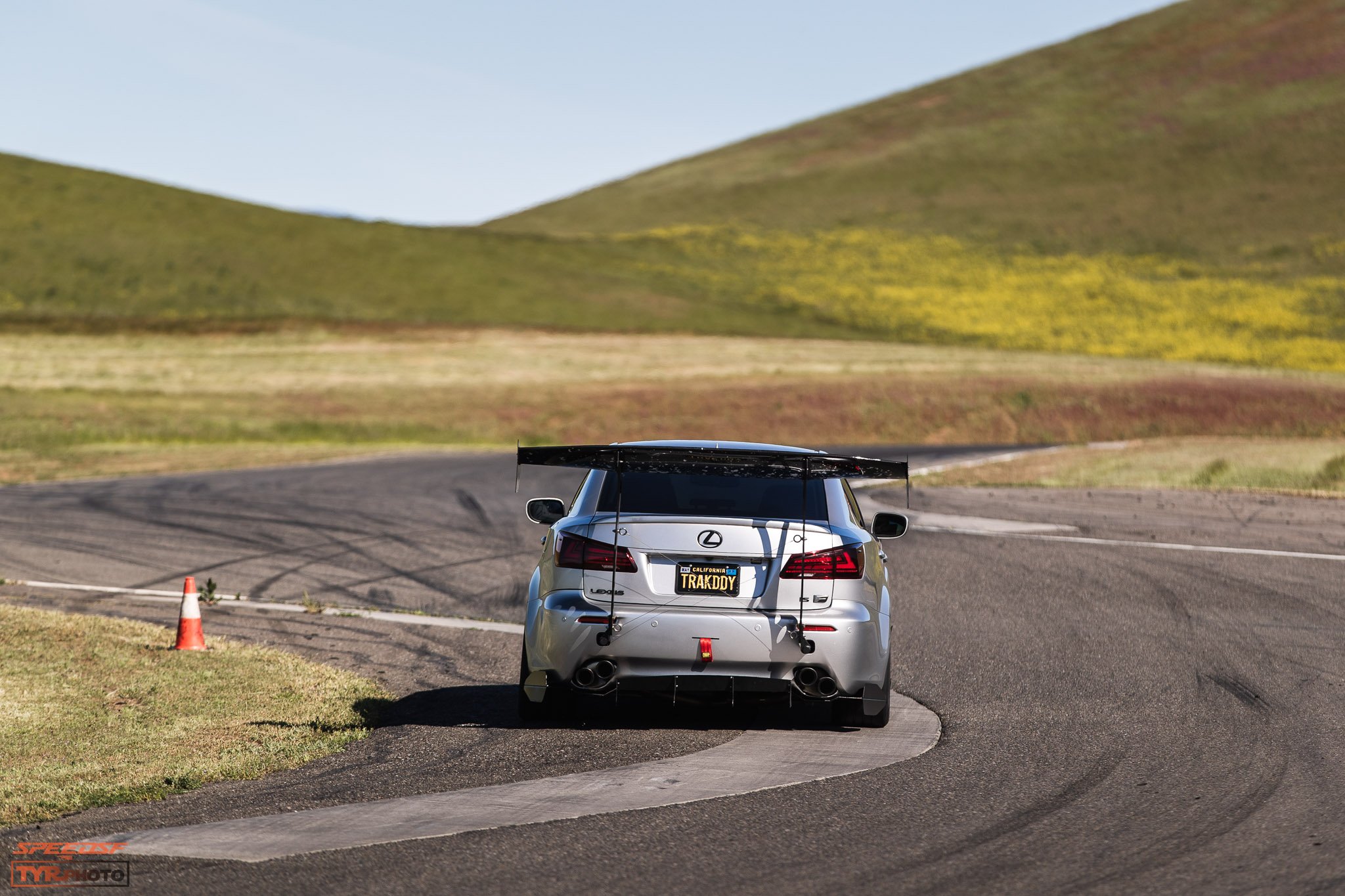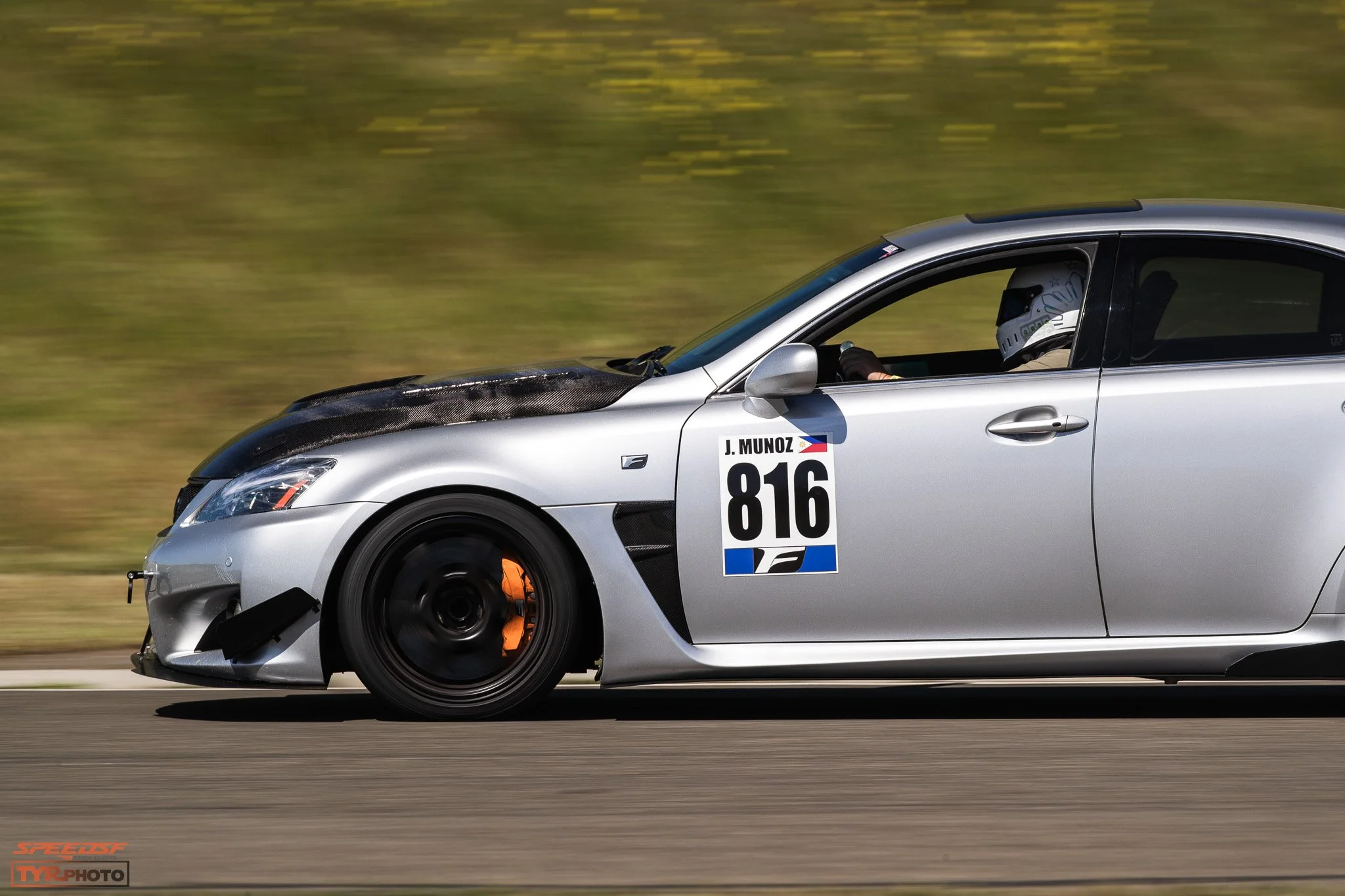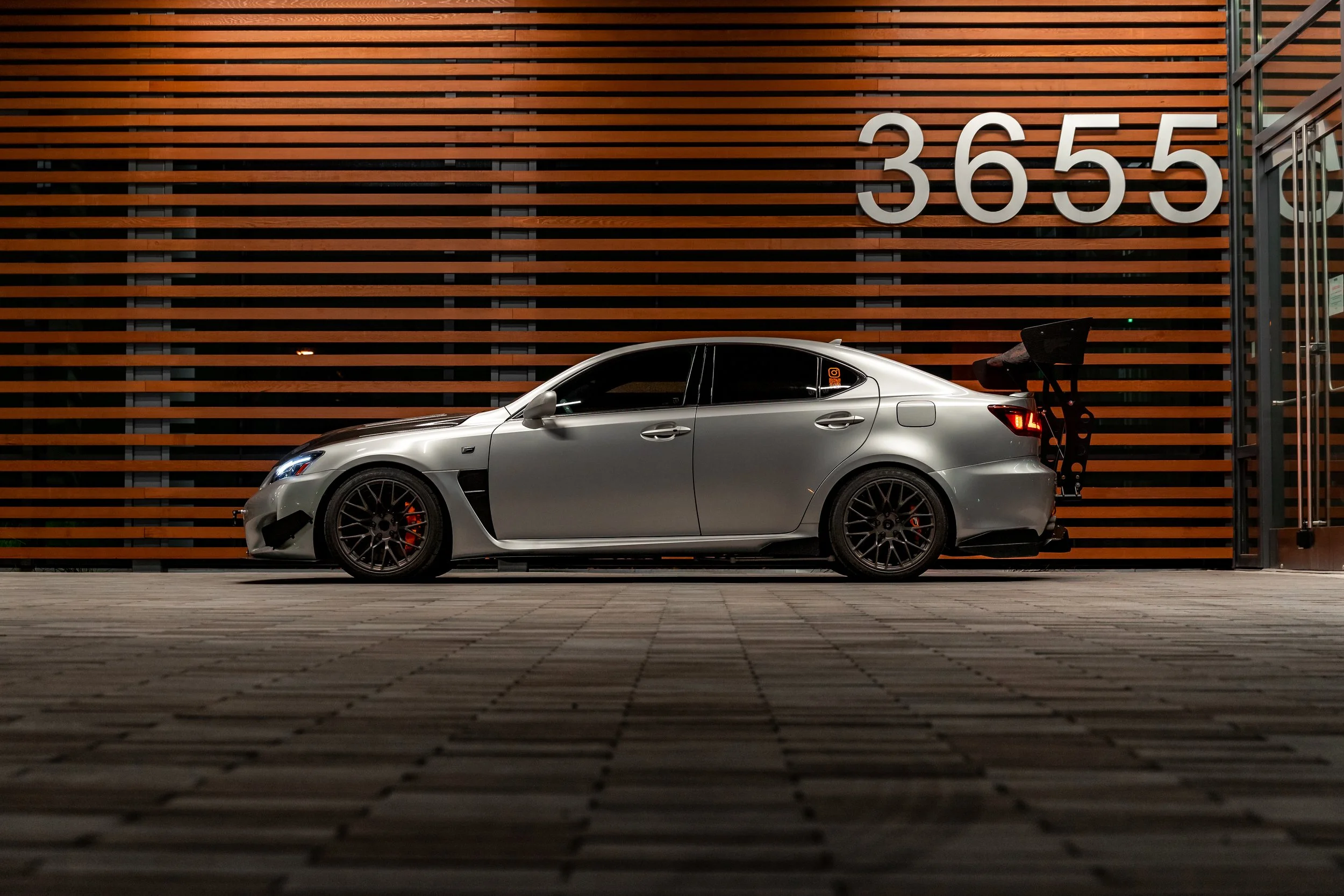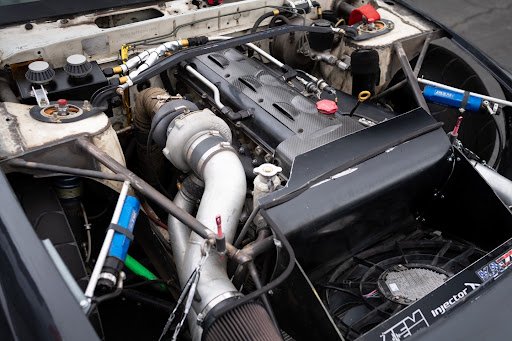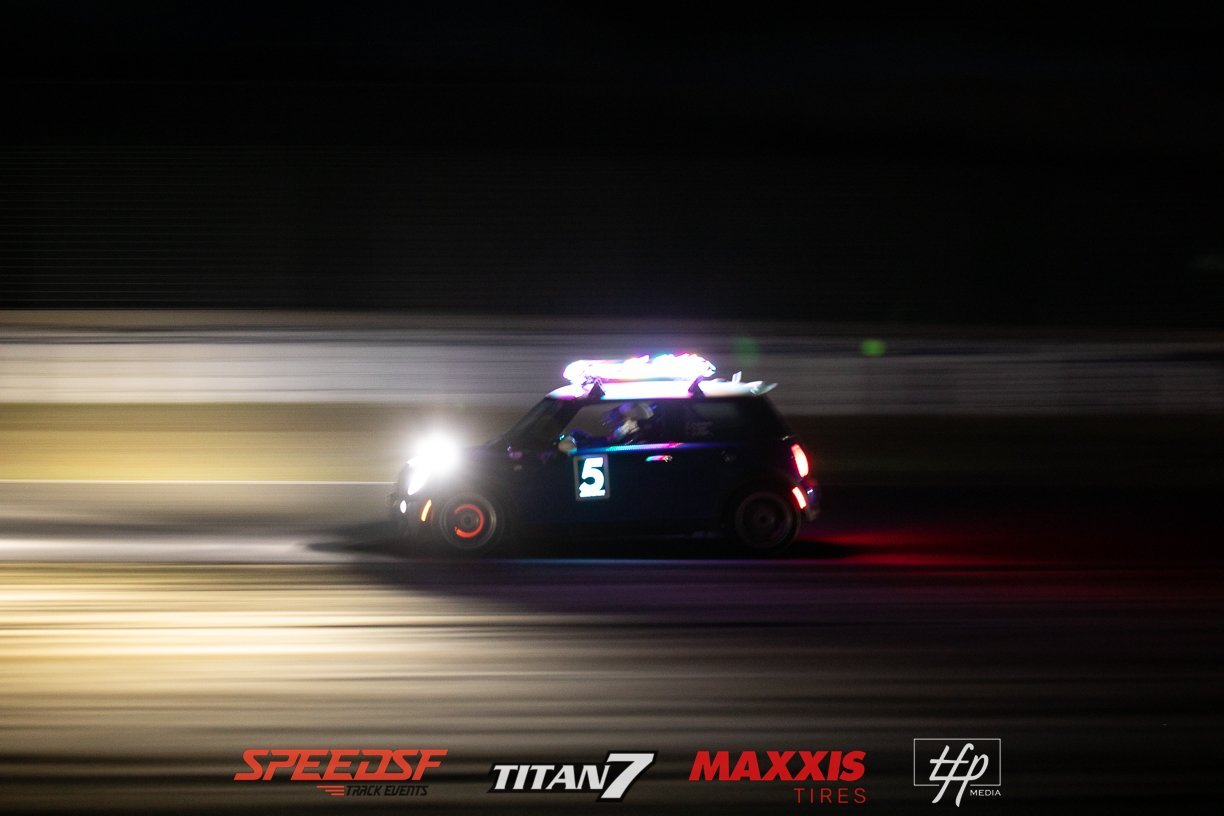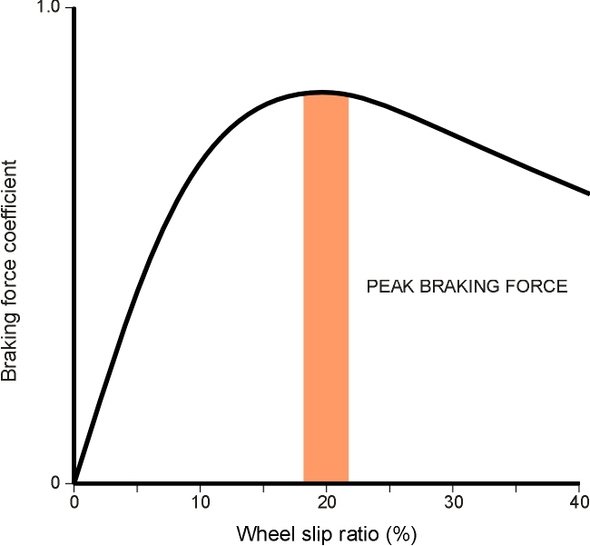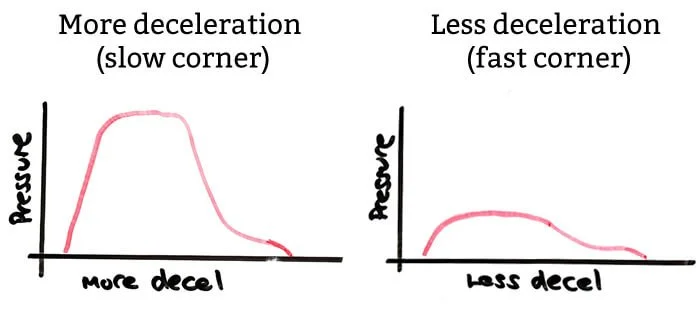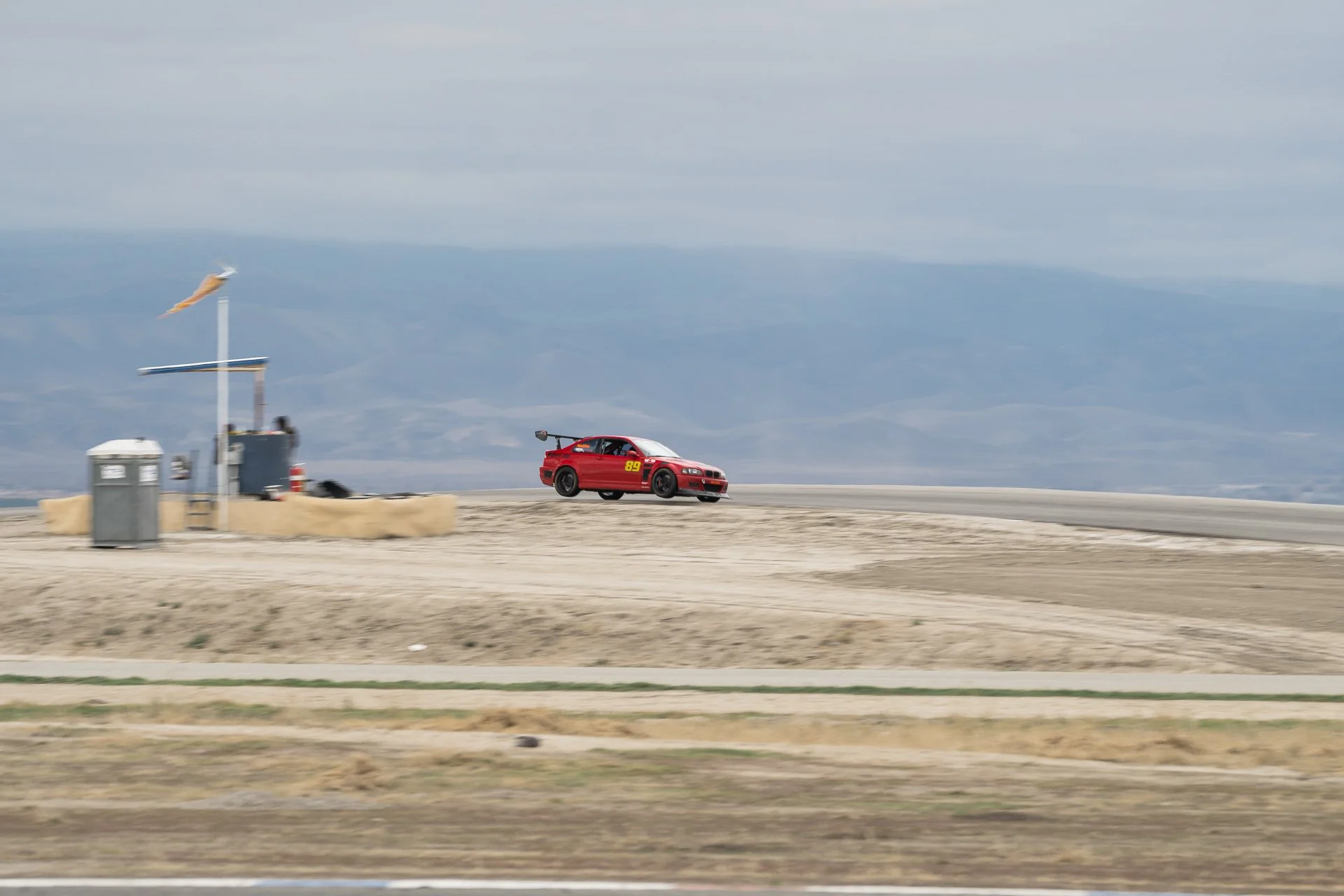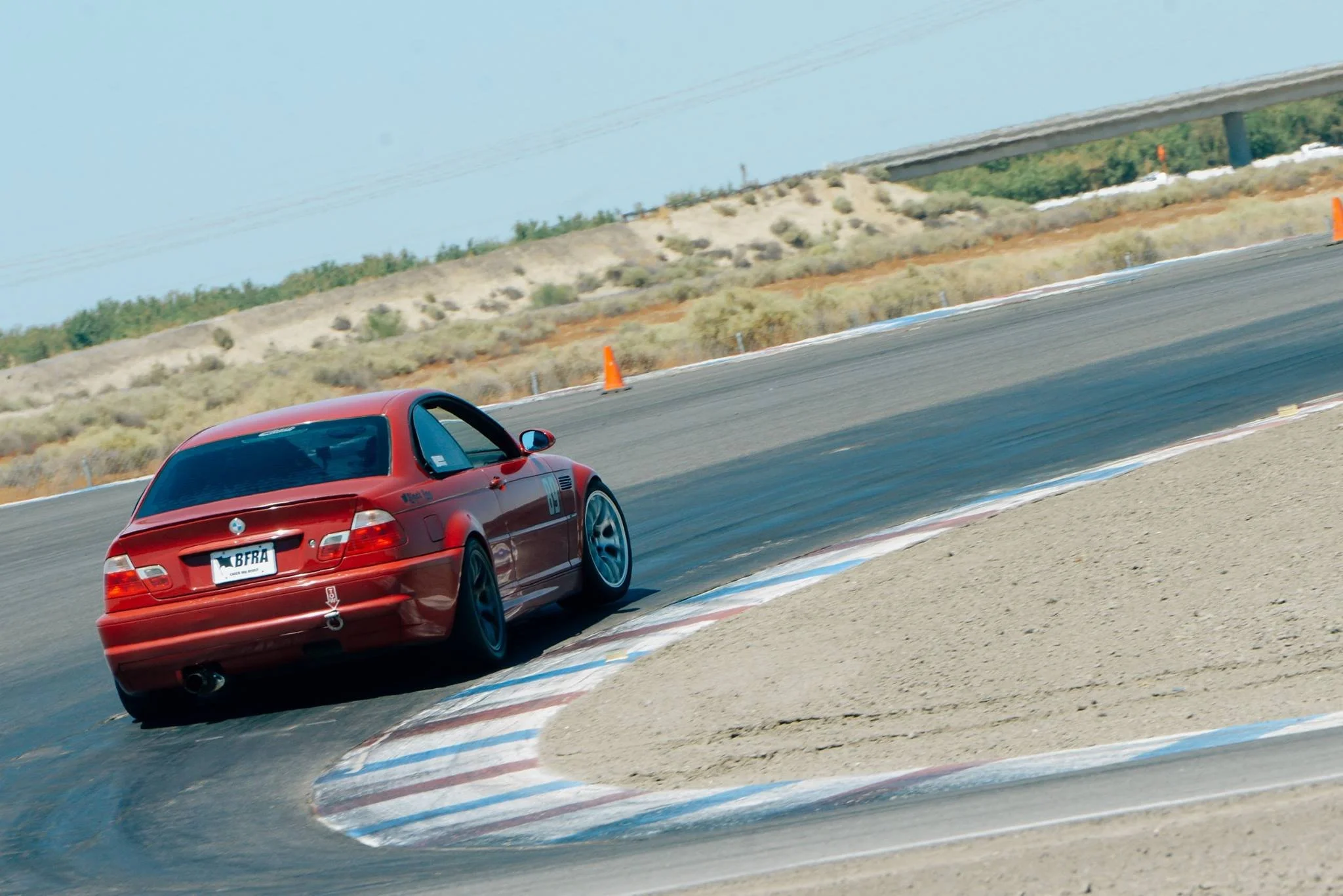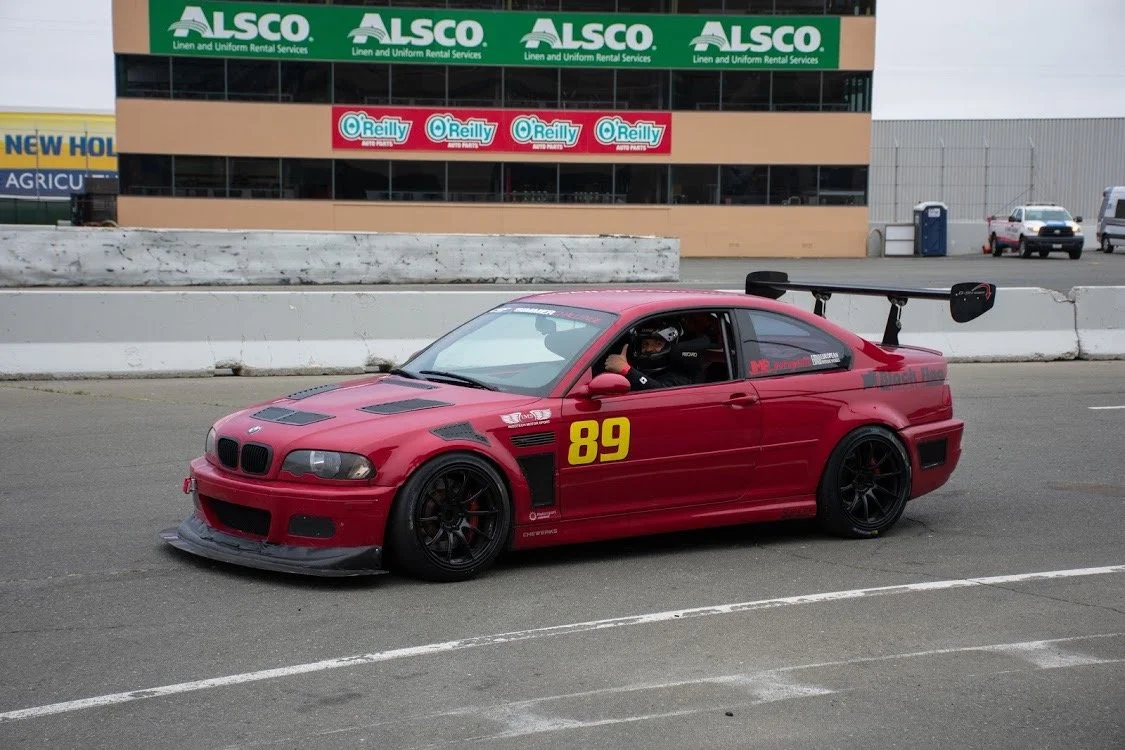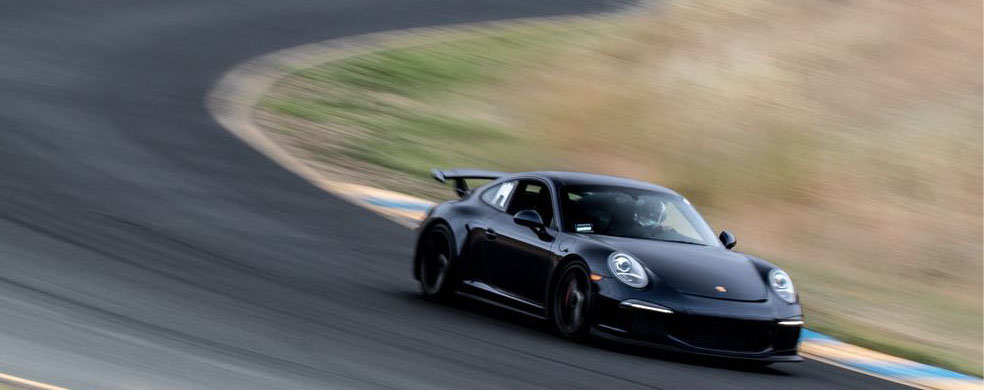
Buttonwillow: Where to Eat, Where to Stay, What to Avoid
Driving Buttonwillow is an experience that shouldn’t be missed, but it requires you prepare for the heat, pick a decent hotel, and endure the long drive.
“Just don’t think too much on the drive down,” says Elite Performance’s Gary Yeung.
It’s a long, dull drive to Buttonwillow, and the timing of the drive determines whether the drive is endurable or if it’s agonizing. Plan for construction on I5 if traveling after 8 PM in either direction.
Still, even though it’s the furthest track from San Francisco we visit, Buttonwillow still draws big crowds. Many are willing to make the trip south because Buttonwillow’s flow is unique and always challenging. Fast in places, technical in others, with all sorts of minor nuances that take some time to learn, driving there is never dull. Plus, it’s where most of Southern California’s track drivers benchmark their cars—on the 13CW configuration, anyways. A good time at Buttonwillow carries some weight in the track day community.
Before you can think about setting a quick lap, you have to prepare for difficult weather. The ambient temperature varies wildly, and from March to October, it’s not uncommon to deal with temperatures in excess of 100°F. Do what you can to stay in the shade; the elements will start to slow you down before you notice any decline in performance.
And as the giant tumbleweeds in the vicinity will tell you, it’s not only the stagnant heat you have to worry about. There is usually one good daily gust that can send everything flying, so always tie down your easy-ups.
Most of those who’ve contributed to this article insist that you drive a little further to nearby Bakersfield if you’re insistent on staying the night. Some would rather wake up early and make the long drive south than deal with Buttonwillow’s fleabag hotels. However, you can enjoy a more casual morning if you’re willing to drive to nearby Bakersfield, which boasts better food and a Costco, among other things, to make finding those odds and ends easier.
If you can spend a little more, the garage spots are usually worth the price.
Forty-five to thirty minutes outside of the track, you’ll find some respite from the weather and the iffy lodging outside the track.
Lodging
Motel 6 North
5241 Olive Tree Ct, Bakersfield, CA 93308
Motel 6 Central
350 Oak St, Bakersfield, CA 93304
Bakersfield Marriott
801 Truxtun Ave, Bakersfield, CA 93301
Harris Ranch Resort
24505 W Dorris Ave, Coalinga, CA 93210
Food
Aside from the decent cafe at the track, there are several decent options for a bite.
Taste of India
20687 Tracy Ave, Buttonwillow, CA 93206
Frugatti's (661) 836-2000
600 Coffee Rd, Bakersfield, CA 93309
Hungry Hunter Steakhouse
3580 Rosedale Hwy, Bakersfield, CA 93308
Willow Ranch
27770 Lagoon Dr, Buttonwillow, CA 93206
*Note that this is a good place to fill-up because it’s the last stop before the Lerdo Highway exit for Buttonwillow.
Tita's Pupusería Lonchera (taco truck located near Motel 6 Central)
20645 Tracy Ave, Buttonwillow, CA 93206
The worries of the weather are justifiable, but not something that should keep you from visiting the track. Buttonwillow is not the most accommodating place for a weekend away—hence the reason some choose to drive down the morning of the event, but it is worth the slog. Its flow, complexity, and challenge aren’t rivaled by any other Northern Californian track. If you prepare carefully and stay hydrated, the day spent in the blazing desert sun is well worth it.
Edson's E46: Quarter-Million and Counting
It may have 250+ on the clock, but this rough M3 has been Edson’s trusty track toy for the last year and a half, and he doesn’t plan on changing anything soon—it’s too fun and dependable to need anything.
He found his feet in the world of autocross, but a little bit of mockery from his track addict buddies made Edson Burgos ditch cone course carving and dive headfirst into road racing.
Edson remembers the moment fondly. “I got a ride around Sonoma in a friend’s Civic Si. Yeah — that’s when my life started to go downhill.”
The S2000 that had brought him so much pleasure in autocross was a sensational first track toy, but Edson, being a bigger fella, found the Honda to be less than ideal for daily duty. Only one parking space at the time mandated he have dual-purpose machine, so he sold the S2000 and picked up a mint E46 M3 ZCP. The performance out of the box wasn’t bad, but Edson knew he wanted to go all in modifying his street-track car., and this one, as he put it, “was just too pretty to chop up.”
Wisely, he made a bit of money selling that gem and decided that he’d look for an example a little rough ‘round the edges so that when it came time to strip and slice, he could do it with a clean conscience.
One well-worn example popped up on his radar. The odometer had just ticked past the quarter-million mark, but the annoyingly low price of five racks was fair and Edson swooped it up in thirty-six hours.
The previous owner had taken some pretty innovative approaches to quieting the creaks and rattles present in a 250,000-mile M3, including expanding foam. The paint was patinaed harshly, so even at twenty-feet it showed its age. However, the motor sounded healthy, and that was enough motivation to begin replacing every OEM bolt, nut, and bushing on the ol’ girl.
Along with the underbody overhaul, Edson dropped nearly twice the price of the car on every E46 M3 owner’s big gripe: rod bearings, VANOS, and subframe reinforcement. These are a must-fix on most of M3s of this generation, though the later cars aren’t cursed with the same rod bearings as the earlier cars. However, after dealing with these three, the E46 is a workhorse willing and able to take the abuse.
He wanted the weight of the car to take a dive, so he tossed the rear carpet and seats, put an Autopower bolt-in half-cage in their place, and a Sparco Evo XL in the place of the plush factory driver’s seat. There’s no sense in holding onto heft when the sunroof-equipped car is already meant to be a track toy, and since he and his wife had a reliable daily at this point, he could make this car as extreme as necessary. Accepting that approach made it easier to drop another couple thousand on a CSL carbon trunk.
Not that he wanted to go for a full-aero build with big power and composite panels. This build was meant to remain simple and reliable, so only the necessary performance modifications were made—and made in one fell swoop. There aren’t many, but the few he did make are quality. JRZ RS Pros, DO88 radiator and oil cooler, and a Ground Control front swaybar.
Being that the motor is as well-used as it is, Edson thought it wise keep all power modifications to a minimum. To get a reliable 300 wheel from the S54, all it took was Build Journal B-Spec tune and Myers Competition’s header and single-exit exhaust. Say what you will about the last atmospheric M-grade straight-six, but with a few mods for power and reliability, it is a glutton for punishment, even at a quarter-million miles.
With these goodies, the M3 was sorted, dependable, dailiable, and fun. That is, until he tried braking past the three-marker at the Andretti Hairpin. Laguna’s known to be hard on brakes, and Edson learned this the hard way when his stock brakes failed. He managed to keep it out of the wall, but this 120-mph scare drove him to buy some big brakes the second he got home that night.
Up front, he did not skimp. AP 5000Rs stuffed with Winmax W5s are perhaps some the best big-brake combinations for the car. At the rear, he opted for a set of the old school Porsche 996 Brembo “Big Reds” and fitted some of Hawk’s DTC-30 pads for a stable rear under deceleration.
Since Edson had his hands full adapting to the torquier motor, he appreciated the M3’s composed, predictable behavior under braking. “i had to be a lot more careful with the power; it was too easy to overdrive. Everything else was easier. Six years in the S2000 taught me a lot. I wouldn’t be as comfortable in the E46 if it weren’t for my previous car.”
He’s put in some impressive times in the meantime. He can lap Sonoma in the 1:49s and Laguna Seca in the 1:40s. For a 3,300-pound car (with driver and fuel) with stock bushings and no aero, that’s pretty dang quick.
“It took me a year to adjust to the platform, but I’m super comfy now. Without all that time in the S2000, I wouldn’t have adapted as quickly, but I’m here. That car was nervous—not that this one isn’t, but I don’t think I’d be able to catch the faster slides if I didn’t spend so much time spinning out in an S2000.”
Lief Storer's GT-R: Big Dreams, Bigger Numbers
While Lief started out this ambitious build with a slightly different destination in mind, he ended up doing what so many GT-R tuners do: chase big numbers. In his case, however, he wasn’t after four-digit power figures; weight and lap times were the numbers he was preoccupied with.
Lief’s love for casual canyon carving, like so many track rats, set the stage for a serious foray into track days. Running the sinuous mountain roads near Oakland and sliding Tahoe powder in his 2009 WRX was enough to whet his whistle for a few years, but when the prices on his dream car entered the realm of attainability, he decided to take the leap and turn his cost-effective pastime into a full-time hobby. An Adobe-sponsored corporate track day at Sonoma made Lief absolutely certain he wanted to push a more powerful car in an environment where he could safely push the car’s limits.
His dream car was not a hardcore thoroughbred, nor was it super light, but Lief was convinced it was the ideal platform for an aspirational build. His 2009 GT-R had all the potential for quad-digit horsepower and a place at the top of any timesheet. He had grand dreams about turning this tech-heavy heavyweight into a standout.
Plus, much to Lief’s liking, the car was practical. “I could throw a set of race slicks in the back, drive it to the track, swap ‘em out, and then when I was done, drive home. It wasn’t just about the power or the grip—it was an everyday supercar I could live with.”
His aim of regularly competing in Speed SF Challenge and other time trials encouraged him to find that elusive happy medium: sharpening it while still retaining some streetability. For some time, Lief drove the car to and from the track without any problems other than a frightening tire bill. However, as the car kept getting faster, Lief eventually turned a corner and decided to change the car’s designation permanently.
Out of the box, the wet weight of the GT-R is over 3,900 pounds, so serious stripping was in order.
About three years into regularly tracking the car, he called on Tony Colicchio at TC Designs to weld in a full cage. “The night before sending it to TC, I got a little carried away. I stripped everything out of the car I could, and before I dropped it off the next morning, I realized that I was going to build this car solely for time attack.”
After a few more weight savers like polycarbonate windows and a titanium exhaust, he moved onto the fixes that a heavy, complicated sports car needs if it’s going to last longer runs. A Litchfield transmission cooler, a CSF radiator, and all the Trackspec venting to keep the VR38 and the braking system reasonably cool.
The next order of business was bringing the Nissan’s nose in-line. “Understeer out of the box is awful…it’s akin to a bulldozer plowing than a precision race vehicle,” Lief admits. “I wanted the car to follow my steering inputs, and so we went to town on the front end. Now, there’s a Nismo LSD up front, a set of widebody fenders, and custom Brypar knuckles that allow me to run a set of Advan GT 18x12” wheels and Yokohama A005 slicks set into perfect alignment with SPL arms. Paired with a large front splitter fabricated by Trackspec, the car can rotate in slow corners and still tuck the nose in for fast corners, too.
An Overtake rear LSD was added to reduce drivetrain temperatures, and it also improves rotation. Even after considerable weight savings measures, the heavy GT-R stopping distances aren’t the shortest, so Lief fitted 4-piston Brembo race calipers with endurance pads. The difference in pedal feel from the OEM Brembo 6-piston to the race-oriented 4-pistons is night and day. They also offer a much lower profile for improved cooling, and the 32mm pads that will run five track days without any noticeable fade
The car was pointy and precise, but the bump in front grip came at a cost. “I got a little carried away at Laguna one day and spun it through Turn 6 at about 90 miles an hour. The wall was about five feet away when I came to a stop.”
The need for a complementary rear end pushed Lief to buy the biggest chassis-mounted wing he could fit: a 78” APR GT-1000. The resulting balance put the car into a new performance window that helped him set a few of his best times. He’d found a consistent, capable car that wouldn’t bite his head off if he made a mistake. Even better: the motor wouldn’t overheat in the course of a fifteen-minute session. Its oil circulation was not as strong, however.
“In my opinion, Speed SF Challenge offers enthusiasts a unique balance of risk and fun, while ensuring competition among a range of participants of varying budgets. The feeling of the grid is racey and competitive, but you’re not overly concerned with swapping paint.”
After an auspicious Sonoma session in which Lief set a 1:42.4, the motor let go. “I hadn’t been checking the oil frequently enough, and I believe I starved it in Turn 11 and threw a rod. The motor had seen around 30,000 miles, 20,000 of which were track miles. Every dog has its day.”
The cost of consumables with this heavyweight had been hard enough to swallow, but an engine rebuild gave him a reason to panic. With the price of a VR38 long block pushing $25,000, he had to get creative with his financing and find a shop that could pencil him in without emptying his bank account.
The cost was so extravagant that cross-country shipping the entire car was a worthwhile endeavor. Check6ix offered him the most appealing deal of the notable GT-R shops he’d contacted, and that meant sticking it on a hauler en route to Georgia.
Eighteen months later, he flew out to Atlanta to pick up his rebuilt baby. Cicio Performance had fitted the head with upgraded valve springs and cams, then filled the block with forged Manley rods and pistons. The cam change had bumped torque to a respectable 630 lb-ft, and that’s with the factory turbochargers still in place. Retaining the stock snails is not something that someone who’s just fitted a MoTec C127 ECU to their motor usually does, but Lief felt they’d do the trick. “I just wanted it to run reliably and respond to my footwork. I also wanted to keep the car right at the limit for running in NASA’s TT1 class.”
Coincidentally, the completion of his new motor lined up with Global Time Attack at Road Atlanta, so he flew out East with his helmet and suit packed, and met with the Check6ix team in the pits.
The car, sitting on a set of old Yokohama A005s, was frighteningly fast out of the box. Lief clicked off a 1:29 in practice, and after a few setup changes and some familiarization with the course, he managed a 1:26.6. This was good enough for a 4th place in the Unlimited class, which was filled with builds boasting another 300 horsepower. Though he was outgunned from the get-go, Lief was forced to compete in Unlimited as the rules for the lesser classes require a dashboard of some sort, which was absent in this car.
Back on the West Coast, Lief’s been racking up the sort of lap times that make everyone purse their lips and nod. Best of all, he’s been doing it without chasing quad-digit power. Currently, with just 600 horsepower and a wet weight of 3,400 pounds, he’s been able to put a 1:27.8 in at Laguna Seca. He’s spent a pretty penny to get this far, and he’s debating whether it’s worthwhile spending more.
“I’m at a fork in the road where all I see are diminishing returns, and at some point I want to start another project. I keep saying that it’s done, but part of me thinks I’ll need to work a little harder to perfect it,” he says. “I still want to get some weight out of the car—I can try tubed subframes and some more carbon panels; weight reduction has made the car so lively. It’s been an amazing journey—both building the car and investing countless hours on the simulator. We’ve both come a long way.”
After going sub-30 at Laguna, Lief has his crosshairs on getting under the 1:40 mark at Sonoma and under 1:50 at Thunderhill East, “There’s something about those ten-second incremental milestones that makes every one of us track junkies completely elated. I hope there’ll be a few more on the horizon.”
He might not’ve gone for bigger turbos, but it’s clear Lief is a guy who likes big numbers—and he went about getting them in the smartest way possible.
Thunderhill Logistics: Where to Stay, Where to Eat, How to Beat the Heat
With plenty of options for food and lodging, reasonable track fees, and plenty of ways to beat the summer heat, a successful trip to Thunderhill only requires a quick review of the information listed here.
If you’re not suited to warmer weather, the propect of spending a day in the sun at Thunderhill Raceway Park can be a little intimidating. True, there are the fair share of summer days in the mid-seventies, but they’re hard to pinpoint, and unless you’re willing to wait until the winter when the weather is wonderful, you might find Thunderhill a bit too hot for your liking. However, if you can brave the heat, the reward is worthwhile.
Covered spots are plentiful at both East and West tracks, but make sure to get one early.
With an interesting variety of corners, two separate tracks that are conjoined occasionally (not often enough), great sightlines, and plenty of runoff, there’s a lot to like about Thunderhill.
While it might not have the amenities of nearby Sonoma Raceway, Thunderhill is accommodating. The nearby town of Willows features several decent restaurants, a Walmart, reasonable gas prices, and a selection of mid-tier hotels that make it possible to spend a weekend there in comfort.
Walmart
470 Airport Rd, Willows, CA 95988
While gloom and doom isn’t the right tone to set the stage for one of Northern California’s most popular tracks, there are a few temperature-related concerns that should be considered—even if you’re as cool as a Bedouin. Always prepare for the heat. Bring a cooler and lots of water. You can buy ice at the track. You want to stay hydrated,.
Stay and enjoy a solid lunch at the Thunderhill Grill.
Though a quick trip back into Willows isn’t ideal after you’ve arrived at the track, it’s only a ten-minute drive—not that there are too many reasons why you’d need to.
Food at the Thunderhill Grill is good, there are many covered parking spaces (as long as you arrive early), and the track seems intent on expanding the covered area. Thankfully, there’s an air-conditioned clubhouse to beat the heat on the worst days. Outside of the hottest months, camping at the track is an appealing alternative to the sometimes pricey hotels.
Lodging
In town, the lodging is concentrated within a couple blocks. Most consider the Holiday Inn Express to be best, though there are a half dozen alternatives when it fills, which is typical on the busier track weekends. If you’re on a tighter budget, the Super 8 offers a pleasant place to lay your head. Expect prices to nearly double on the busiest weekends.
Holiday Inn Express & Suites
545 N Humboldt Ave, Willows, CA 95988
Super 8
457 N Humboldt Ave, Willows, CA 95988
The rolling hills around Willows are a wonderful sight, especially in the spring.
Dining
For variety and ease, dining in Willows is your best bet. The Black Bear Diner has hearty fare, plenty of fast food, a Round Table Pizza, and, for a slightly nicer dinner, Casa Ramos is the preferred restaurant. It’s not a proper Thunderhill trip without a few margaritas at Casa.
While sound isn’t as stringent as it is at Laguna Seca., there is a 105dB limit in place most days. We would suggest bringing a backup muffler if you’re worried your exhaust isn’t compliant.
For those who want something more upscale, there are a few upscale options outside of Willows. Nearby Orland has two interesting spots: Farwood and The Hive. The former’s bar is definitely worth a visit. Thirty minutes away in Williams is a renowned restaurant called Granzella’s, as well as La Fortuna Bakery, which has exceptional burritos.
Casa Ramos
247 N Humboldt Ave, Willows, CA 95988
Black Bear Diner
246 N Humboldt Ave, Willows, CA 95988
Farwood Bar and Grill
705 5th Street @, CA-32, Orland, CA 95963
General Amenities
Being out in the country has its perks. Willows is relatively quiet and very safe. However, it does get quite dark early at night, and the lights turn off earlier than some expect them to, so if you’re planning on changing your wheels for the drive home, don’t wait too long.
For basic auto parts, there are two places to try in town: O’Reilly’s and NAPA. However, their in-stock selection is limited. Gas is slightly cheaper in town—a Chevron and an ARCO are popular spots—but a portion of the price paid at Thunderhill’s pump goes towards maintaining and expanding the circuit. In fact, the management has done an exceptional job in making sure the track is healthy and thriving, which is why it’s no surprise that its become one of the most popular circuits in the area with far more track days booked by any outfit than any other track.
Chevron
1250 W Wood St. Willows, CA 95988
Whether you’re going for a spartan day trip or a luxurious weekend, there are several approaches to take to suit your needs. As one of the more accommodating tracks in Northern California, Thunderhill Raceway Park is one that is easily enjoyed, and despite the warning about weather, visiting is rarely exhausting. Just make sure to bring a few gallons of water, and, on particularly hot days, some higher octane fuel (available at the track pump) might keep your car from pulling timing as hard.
Speed SF Challenge Laguna Seca: New Surface, New Records
New pavement and stellar weather meant our fastest drivers pushed harder than ever before at our latest Speed SF Challenge event.
Ideal weather and a massive turnout of thirty competitors at the last round of the Speed SF Challenge guaranteed some action. Sure enough, we saw new records in several categories. Though some of the newfound speed was due to the recent repave, our Challenge drivers were in stellar form that weekend, and their onboards prove that.
In S1, Steve Melson and his Audi R8 broke the S1 record that had been standing for five years, set back in 2018 by Andrie Hartanto in a C6 Z06. Steve took advantage of the stellar weather and logged a 1:34.081 — a new record that any driver should be proud of—in a car that looks nearly stock. Such is the performance of the second-generation R8.
In S2, Kai Anderson reset Peter Hsu’s Chevy Corvette record by seven tenths. Anderson ran a 1:34.8 to Hsu’s 1:35.7, but not before suffering through a few frustrating sessions. By the end of the day, he cooled his jets long enough to find a gap and avoid slower cars. “My main challenge was recovering from a poor qualifying. There was a good turnout for this event which was great, but it meant the morning sessions were a little crowded, so I ended up only qualifying 7th fastest overall. I recovered to 4th fastest overall in the Challenge session, so mission accomplished, but my fastest lap didn't come until lap 5 because I kept having to abort laps due to catching traffic.
I didn't really have any specific goals for the weekend; mostly just evaluating what is still a relatively new car to me on a newly resurfaced racetrack. Overall, I was impressed with both. I think the changes to Laguna really inspire confidence to push for that optimal lap without creating a different line that requires total abuse of track limits.
The Camaro is perfect for Laguna, with prodigious power, cooling, and brakes to match. There is definitely still some laptime to come from this pair. Crossing my fingers December is dry!”
In S3, Spencer Kimball put in a serious effort to try and beat Kevin Schweigert’s S3 record of 1:36.0.
“I went into this event with some reservations knowing that my M3, with limited torque, was not at its best on Laguna’s straights. Laguna is also the one local track that I drive the least, but I made sure to try and get some practice in before the Challenge weekend. I lucked out and a friend lent me his pass for an event the weekend before, where I ran a low 1:37 after a year-long Laguna hiatus. I looked over my data and saw that a mid-35.xx would be possible, but I went into the Challenge event with the goal of breaking into the 36s.
I knew that I had my work cut out for me as my main competition, Legend Brandenburg in his A90 Supra, benefits from ~200 more ft/lbs more than my E92 has. Luckily I was able to run a mid 1:36 during sessions 1 and 2, which put giving me a good spot for the challenge session. I studied my data to figure out where I needed to commit, and it was clear that the faster corners were where I could push harder to find somet time. I ended up running a 1:36.5 in the Challenge by carrying more speed through T5, T6, and T8, which was enough to make me the fastest in S3.”
In the end, Kimball was just 1/2s off of Schweigert’s lap, which Schweigert set in a car weighing 500 pounds less with comparable power levels. Not too shabby.
Gary Wong still has a little bit of work to do in the Supra to find the second between him and Dave Colbert’s 1:31.5 Group X record. The infamous purple Supra had its engine tweaked slightly to reduce power cuts, but heat is still an issue which Wong has to deal with. Thankfully, the team has a solution—though they won’t be able to use it until the next weekend.
“It was a fun weekend. I mainly wanted to sample the new track surface and see where I could push more than before. Because of how bad the stupid bump at T1 is, I wasn’t able to hit our sub-30 target times, although that had something to do with to traffic and some electrical gremlins. Because of some overheating issues, we had to lower the power level to complete the full lap. Thankfully, we know the issues and the solutions and we’ll come back stronger.”
Gunning for the S4 record, Nate Hackman’s put in an incredible 1:39.7, less than one-tenth off of Sean Yepez’s record, in what appears to be a very mildly modified car without any aerodynamic goodies. The primo parts are under the skin, though: his Ohlins TTX coilovers help his S2000 handle better than most. A last-minute setup change reduced some of the oversteer in the car, so Hackman could commit to the faster corners easily.
“Up until that weekend, I had only mustered high 41s at Laguna. With the repave running faster and a few changes to the car I figured I'd run a second or two faster, but tried not to overthink it with goals and just go have fun. Luckily, I was able to cook off a number of 39s with some definite room for improvement. I was still a tenth off Sean's pre-repave lap record which was a little disappointing, but I knew he'd come back and crush any record I set, and was still very happy to crack into the 39s with no aero and take home a win with an underbuilt car.”
In S5, Tony Rodriguez’s 1:45.2 record seems untouchable. Maybe we need another all-out MR2 to chase Rodriguez’s old S2000 down. In the meantime, we’ll have to tip our hats to our talented drivers taking advantage of the new pavement and pushing themselves hard enough to keep all the Speed SF Challenge competitors on their toes. When times continue to tumble like they have been, none of the Challenge competitors can coast, boast, or rest on their laurels.
Spencer's E92 M3: In Defense of Feel
After Spencer discovered that power is only part of the package, he set his turbocharged 135i to the side and picked up an M car with a much more tractable motor. After a short list of important modifications, his E92 M3 has become one of the fastest cars in S3, and with a supercharger on the horizon, it might soon become the fastest.
From an early age, it was clear tinkering was in Spencer’s nature. High school autoshop was where he put together his first build, a B5 A4, and that natural inclination followed him to college, where he was able to pay some of his tuition with a little on-the-side engine tuning. His mechanical engineering studies led him into a career in data analysis, and the fastidious approach he developed in that time served him well when he began his all-absorbing hobby a few years later.
A few years out of school, Spencer decided to take the plunge and enter the world of time attack. Already a steep learning curve for a tuner with limited experience on track, Spencer’s task wasn’t simplified when he picked a BMW 135i as his project car. Regular overheating made it hard to stay in the seat, and the torque onset of the turbo motor, combined with the short wheelbase, made it feel like it was trying to murder Spencer at most corners.
Thrilled with competition of time attack, Spencer decided to plow forward with his build, despite the regular headaches the 135i posed. An F80 M3 followed, and while that car had plenty of potential, its consumable cost gave his pause. He needed something a little better suited to the track.
The E92 M3 caught his eye. Being a bit lighter than the F80 and, importantly, naturally-aspirated, it seemed like a more involving car with the potential to put down some respectable times with minimal work.
Despite having two kids and a regular job, Spencer performed most of the work on the E92 in his garage.
With the maintenance basics and a few bolt-ons, his DCT-equipped slicktop was capable of a 1:55 at CW13, which confirmed to him that this generation of M3 was the right choice. He could lean on its longer wheelbase, and the motor, though it lacked the torque of the turbo motors, had a powerband and a way of building to a crescendo that always left him grinning.
First and foremost, Spencer wanted it to be dependable. The necessary transmission cooler and oil cooler, the beefy rod bearings, and the throttle actuators were really all that this more robust generation needed to be totally ready at all times. The downside to this sturdier construction was weight, and even with some mild interior stripping, it was still too heavy.
An 8,600 rpm-redline courtesy of an Epic Motorsports tune gave Spencer tingly sensations that the blunt turbo cars never could.
No matter—its performance with a couple more additions could help him forget about its porkiness. Version 1 was completed with TC Designs-supplied MCS 1-ways, Stoptech ST40 brakes, a Pinnacle half-cage, and the standard GT4 wing-splitter combination.
The first iteration was satisfying, but with plenty of time to plan and tinker while on his maternity leave last year, he decided it was wise to put phase two in motion. He returned to his car’s weight loss plan; this time stripping the door cars, speakers, the radio, and basically anything besides the front carpet, the dash, and the air-conditioning. If you live east of the Oakland Hills as he does, you need to have cool air in the summertime.
Along with that, he added an Akrapovic titanium exhaust and fiberglass door cards, which helped shed a considerable amount of weight. Currently, the car weighs ~3,450 with Spencer and half a tank onboard.
CAPTION: Swapping the Stoptechs for a set of lighter AP Racing Pro5000R — a better feel his main reason for changing — helped trim a little unsprung weight, get rid of knockback, and, essentially, let him avoid thinking of braking problems.
An air filter, a catless x-pipe, a set of smaller 285/30-18 tires, and a 3.45 final drive helped spice up the acceleration some. It’s still a revvy motor without much under 4,000 revs, but with 380 horsepower and 275 lb-ft at the rear wheels, it makes more than enough jam spin the wheels in slower corners.
CAPTION: Since the engine lacks much torque, Spencer has to trim the rear wing out as much as he can.
However, the addition of an APR GT-250 wing and Bridgestone RE-71S tires make it very hard to unstick the rear in fourth, fifth, and sixth-gear corners. Some of that has to do with the longer wheelbase and the stability it brings, some is due to outright grip, and some of that is due to suppleness from the properly valved set of custom-valved MCS 2-way dampers courtesy of TC Designs.
The car still chews up front tires, and the motor’s thirst is remarkable, but those are two relatively small shortcomings for a reliable, hair-raising track machine which laps Buttonwillow 13CW in 1:51.8 and a 1:44.8 at Sonoma.
It’s been rock-solid, though some of that has to be attributed to his anal tendencies; he bolt-tests the car after every single track day. He street drives it, he sits in some semblance of comfort cruising around Walnut Creek on a July afternoon, and he still stares at it after a long work week. It gives him a sense of satisfaction that none of his other possessions do.
Being a bit of a perfectionist, Spencer still has some issues with the car as it sits. The weight, namely, is something that he wants to address, but he’s reached the point of diminishing returns. To put it on a carbon diet, as is necessary now, would cost big bucks. However, he might be able to nip at the heels of the Supras and the other current hot tickets if could pull another 200 pounds from the Bimmer.
He could bypass the diet plan and strap on a supercharger, but he fears that forced induction would move him further from the original M.O. that’s helped him put in dozens of faultless track days—some with double and triple sessions.
If there are two things that have enabled him to lap so quickly in a short timeframe, they’re his pragmatism and a fondness for analysis. His data analysis day job gives him the tools to make hours pouring over data fruitful, but his intimate understanding of the compromises at play also make him somewhat indecisive; knowing more makes it all the harder to make a choice. For example: while a blower might compromise the reliability of the near-bulletproof S65, it might be the most cost-effective way to put in a GTA-worthy lap time.
So, blower or carbon panels? Either way, the E92 is destined for some serious modifications in the near future, but before he signs another big check, he’s got to sit and mull over the information first.
Speed SF at the Nurburgring: Podium Performance at NLS Six-Hour Enduro
Patrick Chio wasted no time getting ready after Andrie Hartanto invited him to partner him in a six-hour RCN enduro at the Nurburging. However, the mountain of paperwork, broken cars, and technical problems didn’t fully prepare them for the dramatic end to their impressive debut.
It didn’t take much to persuade Patrick, but the workload required to get all the way to the Nurburgring and race a six-hour enduro had him wondering if it was all worth it.
The challenge prior to getting on the plane to Germany had been monumental, and it wasn’t going to get any easier once they touched down.
Five years earlier, Andrie had competed in a handful of VLN races at the Nurburgring, and, being a bucket-list item for Patrick, the two decided to partner for a six-hour race in the NLS Endurance Series. With a friend who knew the European racing landscape and a renowned team to join, Patrick could feel optimistic about this next step in his racing career, but before he could start to think about driving the course, he had to make his way through the long checklist that every eager American must complete before racing at the Ring.
“I’d only driven it on Gran Turismo before. Never on a real simulator,” Patrick said.
Applying for an FIA license as an American requires a calm, patient temperament. As is requested, “ten races completed in the last two years” sounds simple enough initially, but it can get more complicated. For whatever reason, the FIA doesn’t consider NASA a legitimate sanctioning body, so Patrick’s two full seasons of WERC and his two 25 Hours of Thunderhill did not count towards his total—initially, anyways. Luckily, due to the pandemic allowing older races to count, his SCCA Spec Miata races in 2020 could count towards his total. He was granted his FIA license, but he still had to prove himself for the Nurburgring for a separate test, another permit, and a few headaches.
Once at the Nurburgring, Patrick and Andrie linked with their team, Adrenalin Motorsport, and Patrick jumped into the car to drive his first real laps of the Nurburgring.
Patrick partook in the DPN test, which judges drivers on theory first, then has them run eight laps with an instructor, as well as eight laps alone. No passing under yellows, no offs, no holding up faster traffic, and none of the tentative driving that any driver, even a seasoned driver, would exhibit during their first few laps of the track. For the test, Adrenaline lent Patrick a race-prepped F82, which kept him alert. On a push lap, the car jumps and skips over the track, which is much bumpier than any Playstation rendering conveys. “There are a few places where the car is flying through the air,” Patrick laughed. “Narrow, fast, and many blind corners—it’s pretty intimidating in a fast car.”
The car had its issues. Mainly, the windows had to be kept up for the majority of the lap so as not to blow out the rear plexiglass when the car reaches over 250 kph down the Dottinger Hohe front straight. Thankfully, the rolling sauna session didn’t last long, on the third lap, the car lost power and stalled. The vehicle had to be towed back to the paddock.
There, they had an M4 GT4 ready for him, which lifted his spirits a bit. “A factory race car is just a different animal. Going through the compression, it gets sucked to the road by the massive aero. The motorsport ABS is incredible. The F82 was moving around everywhere over the bumps, but the M4 was so stable. It had really good air conditioning, too!” he exclaimed.
After another thirteen restrained laps, he rolled in and reported to DMSB, the licensing unit, and awaited their decision. He’d passed. Now, his DPN B-level permit entitled him to race at the ‘Ring, albeit in a certain range of cars.
With all the different nuances present, Patrick wasn’t certain they would do so well against the local drivers. Between the Nordschliefe and the GP track, there are over 154 corners, and twenty laps is not enough to learn them all. At least he had six hours ahead to learn them all.
CAPTION: To complicate matters, the team engineers expected him to learn the corner names so he could relay data back and forth more easily.
The following morning, they returned to the track, now swarming with a throng of spectators. There were 130 cars on the grid, and a few thousand spectators ambling in between them. During morning practice, the team would stick the interested fan in the passenger seat as Andrie or Patrick got to terms with their new racing car.
Patrick and Andrie would be driving an M240iR in the M240iR Cup class. Friendly, progressive, and a little oversteery, the M240iR, as Patrick said, “drives a lot like an E46 M3, but at factory level performance.” The extra weight and power wasn’t really a hindrance, as the team swapped tires after every 1.5-hour stint.
They threw a set of stickers on before qualifying, which all drivers must participate in. The format is fair and straightforward: they don’t take the averages, they just take the fastest of the two laps every driver is mandated to run. They weren’t too worried about being at the front of the grid, because the Nurburgring always has yellows, but they still pushed the little two-series as quickly as they could.
“One of the most difficult aspects of this race is that we have to share the track with the faster GT3 and GT4 cars. These factory race cars are so fast in every aspect, when most corners of Nurburging are blind, it’s really hard to see them coming up behind or next to you” Andrie said.
Andrie qualified fifth, and at the start he made it up to third, but it wouldn’t last. Due to an ambient temperature of 90°F and a lack of cooling from following closely behind in the dirty air, the M240i’s turbocharged motor went flat after half a lap.
“I lost power! I lost power!” Andrie screamed over the radio. The team issued orders to short-shift at 5,000 revs, and Andrie obeyed, but fell back to tenth in the process. By the time the car had cooled, he started to charge again and brought the car back to sixth, then handed it off to Patrick, who climbed into fifth and stayed on the same lap with the leader.
After his steady session, Patrick brought it back to the pits, where they lost only one position. Things were starting to look up. The race wasn’t halfway over and the two were starting to feel at home at the neverending circuit.
Andrie got back in for the third stint and started flying; lapping faster than the third and fourth-place cars and dragging it up to fifth. He was eyeing fourth place by the end of his stint.
As the stint progressed, Andrie was making his way towards Fuchsröhre, a steep downhill chicane section with a frightening compression at the very bottom, where they were going over 240kmh. He noticed a dot in his mirrors growing larger. “He’s gonna catch me sometime after the compression,” Andrie assured himself after seeing the GT3 flashing its lights. Andrie focused on the technical section ahead; getting his line right, straightening the car before the bump, and braking hard as he shot uphill, thinking he had more time to handle the GT3.
“I figured he was going to pass me after the corner, but he didn’t. I was startled to see him next to me at the turn-in point. We were both doing about 240 km/h.
When Andrie started to turn, he could see the lights from his peripheral vision – the AMG GT3 driver was already beside him. Andrie wanted to slow the car, but because of the crest, he released the brake and tried to scrub some speed through the middle of the corner. Unfortunately, he was going way too fast at the wrong trajectory, so his front right grazed over the grass. At over 200 km/h, dropping a wheel mid-corner can be costly, and Andrie slid into the barrier. He hit it front-first at about 45 degrees, then the rear contacted, and then he ping-ponged across the track, somehow without flipping.
Shaken but steady enough to walk, Andrie got out of the car himself and walked over to the marshal’s stand, where they called a doctor. The doctor determined that, because Andrie had crashed at over 180 km/h, they would airlift him to the hospital.
At Koblenz, the CT scan showed an uninjured brain, but the doctors were reluctant to let Andrie attend the barbeque he had been invited to. Both parties bickered for a bit, then the doctors capitulated. “You’re free to go as long as you have some friends accompanying you,” they said. He signed the waiver and left to bury his frustrations in pork.
Patrick and Andrie weren’t the only duo which didn’t finish. “I was a real shame — we had a chance of a podium here. At first, we didn’t think we’d do so well against the people with more experience here, but we had a very good team behind us who gave us lots of confidence,” Andrie lamented.
Still, that was a minor ache for all the good that came from this trip. For Patrick, it was a seminal accomplishment. To fly across the Atlantic, earn another license, and leave with podium promise is not something that happens to often.
More than that, it gave him some insight into the world of professional European motorsport. “Getting to meet professional racers, talk, and see how we compared, plus being close to all these big manufacturers—it seemed like a dream. Also, Nurburg is small and filled with people enthusiastic for the sport. You can make friends with other racers in the parking lots, in the restaurants, everywhere!”
For track day hobbyists back in California, sometimes getting to the Nurburgring can seem like a dream, but, as Patrick learned, it’s not too difficult for someone looking to turn a few laps. “There are so many rental agencies around. You can just rent a car and go. It turns out it’s really convenient—you don’t even need to book a trackday on the touristenfahrten days. You just pay for the car, pay for a certain number of laps, and you swipe your card at the gate, and drive as hard as you can.”
When he puts it that way, it makes the journey seem less daunting. It always helps to have someone pave the way for you.
Shan's S2000: Hitting the Books
After Shan spent his college years as a test driver for his Formula FSAE team, he started tracking an E92. The heavyweight M3 didn’t give him much joy, so, eager to get back into a pointy car, he picked up an AP2. With his engineering expertise, he’s been able to get the most from a modest assortment of modifications and turn this into a capable, dependable track scalpel.
When you’ve had so many formative driving experiences in something as light as a kart, or as purposeful as a Formula SAE, many production cars feel a little cumbersome. This was Shan’s perspective and the impetus to sell his E92 M3 for something responsive, svelte, and raw.
While a college student, Shan was both powertrain lead and test driver on his Formula SAE team. As part of getting the most from their bike-powered spaceframe car, the test drivers – he was one of several – were expected to refine their driving techniques through go-karting. As his own development as a driver dovetailed nicely with his expanding understanding of chassis setup, he developed an unshakable confidence that, years later, would enable a rapid ascent in the world of time attack.
Before he could put himself in a car which would benefit from his years of racing experience, he took a left turn – one that was unpredictable, yet understandable.
He had his foray into time trials with a heavyset production car unlike the other machinery he’d grown accustomed to: an E92 M3. “There were some cars I was considering, but this one was the most versatile.”
Its heft and plush GT-designation left him feeling a little lukewarm, and after five track days, he recognized his need for something with a bit of that single-seater urgency he missed.
First kiss
Rather than go full-180° and buy another spaceframed car, a trailer, and a tow rig, he decided to compromise in the name of practicality. For him, the S2000 was the only fendered car in his price range that had the pointiness he was after. Plus, he didn’t mind hacking one up.
He found an AP2 that, while a little rough around the edges, was a suitable candidate for a track build. A little patina and some missing interior panels didn’t upset him, but the blown Konis certainly made the trek from Los Angeles back to San Francisco less than comfortable. Thankfully, he knows a good chiropractor.
However, those minor annoyances faded when he took the car to Laguna. There, he was reacquainted with all those familiar feelings from his college days — plus a new form of fear.
“I don’t think I’d ever driven something with so much lift-off oversteer before, though that was due to the setup in some part.”
The Honda had teeth; its mystery alignment kept Shan guessing when it would slide. However, even on ancient RS4s and a comically snappy setup, the car was eagerly responding to his subtler inputs. It kept him alert and, with a little time to learn its habits, it raised his confidence.
After adding the first round of track-day bolt-ons – brakes, wider wheels, and a set of forgiving NT01s – he could start exercising his old approach to finding speed. Shan had a few areas of focus:
Ergonomics
Ensuring everything is easily reached was paramount. As he learned from FSAE, the more comfortable one is, the harder they can push. For this reason, he added a very bright shift light directly in his line of sight.
Chassis first
Aside from a Hondata piggyback and a testpipe, the motor would remain stock; the gains would be made in cornering speeds.
No more than necessary
Only parts that had proven to cause a bottleneck or had failed would be replaced. This was done to save, but also to ensure his engineering abilities would be put to good use making the most of what he had.
After accepting the limitations of his Konis, he splurged on a set of JRZ RS Pros. They’d been vetted by his car-crazy colleagues. Raised to an appropriate ride height and aligned correctly, he started putting in the seat time.
The car stayed as it was for some time as Shan delved into the data and refined his technique. “I analyze my laps through RaceStudio and take very detailed setup notes after a session to make sure I'm aware of what's going on, what changes i'm making, how the car responded to those changes, etc.,” he stated.
Complex, but simplifying
When it came time to add some aerodynamic pieces, he used his analytical mind and his engineering ability to make the most of the new alterations.
“My first laps with aero weren’t much faster than my previous best,” he started. “I was still driving the car like I had been before the wings; tentative at corner entry, braking somewhat gently. The aero changed that. I used to worry about oversteering too much at turn-in, but I can throw the car into the corner now. If it needs to scrub some speed, it’ll just understeer.”
He could start changing some parts to make use of the additional aero loading. “Previously I was running a less aggressive compound in the rear because the car was prone to entry oversteer, which would only get worse if the pad compound in the rear could cause momentary locking. With the aero grip, that’s no longer an issue, so I have a high-torque pad at the rear.
Clearly, the right sort of aero helps not only with outright cornering speeds, but stability as well.
Drag bad, grip good
However, this all comes at a price; drag cannot be overlooked in a low-powered car like the S2000. Trimming the wings was vital to find a net improvement in speed, and after using the suggested window for optimal wing angles from 9LivesRacing, he timed every subsequent alteration until he found the fastest settings.
“One thing I did after the first aero day was try to visualize the corner speed increase and drag increase around Laguna. I made plots to understand the behavior better. I could reach out to people with more racing/motorsports experience too, to see if this aligned with what they would consider a car with properly functioning aero, so it was decent validation.”
Shan had to increase his spring rates by 100lb/in to handle the aerodynamic load.
Shan’s taken a studious, resourceful approach to building this gleaming AP2. It might not sport top-shelf parts in every area, but those used have been tweaked and fettled to get the most from them.
An ideal setup is only possible if one has the ability to run the necessary calculations. Shan’s background in racing a clean-sheet kind of car has helped him see what’s vital to speed, and that alone gives him an edge that primo parts alone cannot trump.
He’s clearly passionate about the engineering side of things, too. In fact, he’s used his engineering expertise to build new bits to improve the overall package. They might not be obvious, shiny, or expensive, but, in aggregate, they make a major difference.
“When I have the time, I’ve been using some of the 3D printers at work to build some basic parts to help. For example, I put together some supports to prevent the trunk from flexing at higher speeds.”
Though the car is fast and forgiving, Shan’s still seeking a sharper edge. “The front is much less effective than the rear, and, for now, I just deal with the understeer. I’ll try increasing the rear spring rates to encourage some rotation. It’s not a normal way of dealing with an aero problem, but it might work.”
He’ll find a solution — even if it keeps him in the garage all weekend. For Shan, staring at plots all Sunday to find a few tenths is time well spent.
Parts List
Sakebomb rear sway bar, Eibach front sway bar
Bump steer + roll center correction kits
Recaro Profi SPG driver's seat
JRZ RS Pro (900lb/in front, 800lb/in rear spring rate)
Racebred Components front splitter kit
9LivesRacing rear wing
Wilwood Superlite front BBK w/ Carbotech XP12 brake pads all around
Hasport polyurethane engine and differential mounts
Maxxis RC1 255/40-17
Tailai's Supra: Keep it Simple, Keep it Sane
After blowing up an M3’s engine, Tailai Lihe realized power wasn’t everything. With this car, he kept the B58 stock, and instead prioritized seat time and cornering speeds.
Started tracking in 2018 after moving to the States to study at UC Davis. Being an undergrad student, Tailai time was booked solid. Even so, he had an image of Sonoma Raceway, an image he’d had in his mind since playing Gran Turismo in his early teens, and he knew he’d have to find a way to experience it.
With no real knowledge of the trackday landscape, he booked a three-day advanced driving course at the Simraceway Performance Driving Center, where he was able sample the circuit and the strengths of his daily, an E92 M3. “I didn’t know anything then, so I kept the stock pads and went to drive. The only thing I added was a big wing, because it was cool.
The car was stable and forgiving, and the classes went off without a hitch. The subsequent visits to the track weren’t always failure-free, though. “Whenever I tried to push, something broke.” He endured the bills and, without much of a racing education, he started modding the car to make more power — something entirely predictable. He slapped on a VF supercharger and, after it was installed incorrectly, he blew the motor.
Disappointed, he sought out something reliable with more tuning potential. He didn’t like how American cars drove, so no Camaro. The atmospheric BMW engines weren’t all that interesting to him, but the potential of some of the turbo cars caught his eye.
“I first bought the Verus full aero, which I now see was foolish. I should’ve started with suspension, but the aero kit was too cool to ignore,” he laughed.
He didn’t exactly settle on another car from the same marque, but he wasn’t far off. After finding an impressive deal on a 2021 Supra, he pulled the trigger.
The first outing in it, he left it completely stock. Very capable already—capable of lapping Sonoma in the 1:53s. By this time, he’d started studying what would keep his ass in the seat and what would drop times the fastest.” I wanted the car to be reliable, so I didn’t touch the powerplant. There were more important things to change.”
Maybe the pleasure of seeing the car kitted out was the right move, because it wouldn’t let him down like his first set of coilovers would. The first set of KW Clubsports broke after a few days. Fortunately, his growing social media presence helped him secure a more track-oriented setup; KW reached out and offered him a set of Competition coilovers.
Then, seeing how easily he was squeezing noticeable performance from the package, he got a little smarter with his tuning approach. He hit the books hard and called on his years of building soccer robots for RoboCup Junior. With his analytical mind whirring away, Tailai could not ignore the way Supra’s weight was working against him. “Weight savings starts out cheap, but it gets pricey pretty quickly,” he admitted. Just by pulling the carpets, seats, adding a cheap Chinese fiberglass hood, and changing the battery, he trimmed an impressive 200 pounds from the car, and only spent an afternoon a few hundred dollars.
Less mass saves some strain on the binders, which don’t need too much help. Pads from CSG, stock rotors and calipers, a basic ducting kit, and even with Goodyear Supercar 3Rs and the aero loading, the brakes last an entire session without fade.
Mods were kept minimal. A set of SPL control arms for more camber and toe adjustment, a Sparco bucket seat, and a chopped exhaust rounded out the short list. Fortunately, the A90 just doesn’t need much help from the factory — just a sportier alignment:
With Jackie Ding’s advice, he increased front camber to -3 degrees, increased the rear to -2.8, set the front toe at 0, and, to minimize some of the bump steering, a smidge of rear toe-in. About 0.3 degrees, actually.
Tuning took some time to understand, but like his choice in modifications, he fumbled his way through it until he could learn enough to make the right decisions. “At first, I had the rear wing angle turned up to the max before adding the splitter, so at 8 at Thunderhill East, the car just went straight. That scared me. After that, I started to read up on aero balance.”
After adding a splitter and trimming out the rear wing, he found a sweet spot that gives him some reassuring push in faster corners. Combine that with a car that is easily rotated on throttle in the slower corners, and it’s not hard to see why he’s gone so much faster in the span of a year.
“As soon as I touch the throttle, I like it to rotate a little,” he explained.
And with that, he had a platform he could take to the track and run lap after lap. It’s super reliable. After forty-minute sessions at Thunderhill in 100F weather, the brakes and the engine remain cool. The Supra is happy to take the abuse.
His dedication to the craft, complemented by his studious approach and background in robotics helped him go from a total novice to someone fighting at the front of Speed SF Challenge’s S2 class in just two years. You don’t make that progress without cracking the books and being a little ingenious. Now pursuing his PHD in electrical engineering, he is confident he took the right path. “If you don’t have a budget to hire an engineer, you have to learn to do it yourself.”
Tailai has done most of the work in his garage. “From chassis tuning, I gained probably two seconds.”
And although he sees the importance in building a dependable, approachable, reliable car, he knows that racing is not just an engineering exercise. It takes practice, physical fitness, and coordination. So, after he adds the new Spage aero, the rest will come down to him. “There’s still a lot more potential there that I’m not getting. Honestly, I’m still a pretty bad driver,” he said.
For someone who’s currently lapping Sonoma in the 1:45s, but had no idea what an apex was a few years ago, that is a masterpiece of self-effacement. Not everyone advances this quickly in the sport, but Tailai’s taken the sensible approach and put track time first. If that isn’t a compelling case for reliability, I don’t know what is.
Sonoma Logistics: Where to Stay, What to Eat, What to Wear
With a unique rhythm, great amenities, and amazing food and lodging nearby, Sonoma Raceway is one of the most popular destination tracks on our calendar.
Being my home track, Sonoma Raceway elicits many fond memories. Back when it was called Infineon, I got to see real racing cars in action for the first time, and with the sun setting at the end of the day, I realized just how special this place and this sport are.
For both the driver and the observer, it’s an amazing place to be. The variety of fast and slow corners, all tinged with a little fear from little runoff area, promotes a rhythm that is hard to experience at any other American tracks. It’s not an easy track to master, however. The morning fob can render the curbs slippery, and there are track undulations that can upset the weight balance of the car. Combine those with minimal runoff, and you realize how important it is to be careful exploring the limits there. “Take your time learning the track,” George Koustoumbardis warns.
Plus, the ambiance is special. The views from the top of the hill are remarkable; it’s not often you get to see most of the track from a single vantage point. The weather, too, is fantastic—outside the hottest summer months, anyways.
Navigating Turn 1 at ~100+ with the walls on either side takes some courage.
The onsite amenities deserve some praise. The onsite Wine Country Motorsports provides all the gear necessary, and the wide range of fuel available — 91, 96, 100, 112, 114, & 116 — make easy refills with exotic racing engines easy. Plenty of garage spaces help keep people out of the sometimes-oppressive sun, and with a moderately small footprint, the track is not too tough to navigate. However, with a small lot comes competition for parking spaces, so make sure to get there early if you’re trailering a car.
An airy paddock and small parking lot makes Sonoma nice to wander around.
It’s also located in a fantastic area. Whether you’re taking a quick day trip to the track or looking to spend an entire weekend basking in the Napa Valley glow, there are plenty of things to keep in mind.
First and foremost: try to avoid San Francisco if at all possible. Yes, early morning traffic on the weekends isn’t too heavy, but even so, it’s difficult to get to Sonoma in under forty-five minutes on the best of days. Instead, try staying in nearby Marin or Sonoma, where the food is fantastic and the atmosphere is far more relaxing.
Recommended Hotels
MARIN COUNTY
Best Western PLUS, Novato Oaks Inn 215 Alameda del Prado Novato, CA, 94949 (800) 625-7466
Best Western PLUS, Corte Madera Inn 56 Madera Blvd Corte Madera, CA 94928 (800) 777-9670
Courtyard Novato Marin Sonoma 1400 Hamilton Pkwy Novato, CA 94949 (415) 883-8950
Four Points by Sheraton San Rafael 1010 Northgate Drive San Rafael, CA, 94903 (415) 479-8800
SONOMA COUNTY
Fairmont Sonoma Mission Inn and Spa 100 Boyes Blvd Sonoma, CA 95476 (707) 938-9000
The Lodge at Sonoma Renaissance Resort & Spa 1325 Broadway Sonoma, CA 95476 (800) 777-9670
Quality Inn Petaluma 5100 Montero Way Petaluma, CA 95476 (707) 664-1155
Cambria Hotel Sonoma Wine Country 5870 Labath Avenue Rohnert Park, CA 94928 (707) 206-7514
MacArthur Place 29 East MacArthur Street Sonoma, CA 95476 (707) 938-2929
Inn at Sonoma. 630 Broadway, Sonoma, CA 95476 (707) 934-1340
Nearby Eats
Though the onsite cafeteria is quite good as far as racetrack grub goes, the surrounding areas provide a staggering number of options for incredible food. Unlike so many Californian tracks, Sonoma offers drivers and their families the chance to eat extremely well if they’re willing to drive a short distance.
-Pig and a Pickle. 341 Corte Madera Town Center, Corte Madera, CA 94925.
Fantastic barbeque, although probably better for dinner; it’s heavy.
-Angelo’s Wine Country Deli. 23400 Arnold Dr, Sonoma, CA 95476.
For lunch, this established nearby deli is hard to beat.
Left Bank Brasserie. 507 Magnolia Ave, Larkspur, CA 94939.
Fine french food for reasonable money.
Lagunitas Brewing Company. 1280 N McDowell Blvd, Petaluma, CA 94954.
Fantastic brewery upstairs.
WEATHER
Weather in the summer months can reach 100°F, so wear light clothing and do not underestimate the need for hydration. Though it’s a dry heat in Sonoma, it’s not hard to get dehydrated spending too much time in the sun. If the budget allows for it, a garage space in the summer is well worth it.
The morning fog is a real thing there, and it still lingers around in the summer months. For that reason, pant bottoms are recommended. So are a hoodie or a windbreaker for cooler weather. Bring sunglasses for the afternoon.
The exit of the Carousel is both fast and technical, and triple-digit oversteer at the exit is always exciting. Photo credit: APEX Staff Photographer @victorgiang
Though daunting at first, Sonoma is one of those tracks that is always satisfying and somewhat relaxing to visit. Spend some time appreciating the scenery, stay safe on the track, and give yourself enough time to avoid the bottleneck where HWY 37 and 121 meet during the morning and evening commute, and you’ll be sure to have a memorable day.
Watch Christian Fernandez’s onboard to get a sense of Sonoma’s interesting flow:
Thanks to Nik, Justin, Roger, Matt, George, Ken, and Reto.
Andy's NC Miata: How To Make 300 Horsepower In 3 Not-So-Easy Steps
Intent on keeping costs low, Andy Boskovic started tinkering on a third-gen Mazda Miata. The need for more power was clear from the start, so he first tried to swap in a 2.5-liter engine from a Ford Fusion.
Then he turbocharged it.
“After five years of ownership, I’ve learned these cars only last when they’re basically stock,” Andy began.
Some of Andy Boskovic’s friend suggested he keep tracking his E92 M3, but it just wasn’t exciting him any longer. “I’d tried a few light cars, and I liked how playful they were,” he recalled. “No matter how much power a car has, if it’s lightweight, it will always be fun,” he said. Plus, the cost of consumables and its heft kept him from relaxing. Careful not to break the bank, he started looking for something svelte, simple, and reliable.
Because of his size and his cost constraints, he bought a mildly prepped third-generation (NC) Mazda Miata. For a third-gen Miata with Megan Racing coilovers, Hotchkis swaybars, and a factory hardtop, a mere five thousand was money well spent.
If there was one unforeseen problem at this point, it was that Andy did not know quite how limited the NC aftermarket was back in 2018, but, thankfully, this car was quick and reliable enough to not need to. The car ran well in stockish trim, and no real changes were necessary for the first two years of tracking.
The factory NC brakes are stellar: Castrol fluid, RB 2-piece rotors, and Hawk DTC-70 pads provided stable, reassuring confidence.
After getting to terms with the car, he could diagnose its few weak points. More confidence on the brakes meant harder laps and more aggressive corner entries, and those highlighted the one glaring handling issue.
Though fun, the car was a little too loose to be truly quick, and this was clearest in the faster corners. “The short wheelbase makes this car oversteer in Riverside,” he started. He first softened the rear bar, then removed it entirely. “I picked up a little understeer when I removed the rear bar, but I gained 1.3 seconds the next session on the same tires,” Andy added.
Another Half-Liter Can’t Hurt
After two years of trouble-free track days, the engine began to knock. Intent on keeping his costs low, he decided to try the 2.5-liter MZR alternative. This particular motor came from a Ford Fusion — a $200 find at his local junkyard that swapped into his car with minimal modification.
Swapping the 2.5 into the NC’s engine bay requires transferring oil pan and valve cover from the 2.0-liter to the 2.5-liter, grinding the front cover engine mount plate to allow the belt to spin without rubbing, and changing one pigtail for camshaft position sensor. Everything else stays the same; the whole harness, ECU, engine mounts work. What’s more, the transmission is direct fit.
It’s a good thing the swap was simple, because the excitement didn’t last long. After just three track days, the engine blew. Andy believes it was a lousy online tune which caused the engine to run too rich. Because he hadn’t installed any A/F meters, he’d been totally unaware of his pistons were getting washed over the first few months.
This setback didn’t deter him. In just a few weeks, Andy grabbed a new motor — one with which he would try a different approach.
Being designed for an SUV, the 2.5 MZR was never really designed to rev. The motor feels genuinely torquey—almost VQ-like—in the midrange, and calling the top-end lackluster would be generous. Extra cubes do help the car feel livelier in slower corners, but the disappointing final few thousand revs warranted a major change — even if the motor was never intended to buzz too high. With a set of Esslinger camshafts and a little headwork to enable 7,500 revs, he extended that top end to a point where things felt S2000-ish.
Another half-liter makes makes life significantly easier.
The 190 horsepower the new lump came along with a few complimentary additions to turn a mild street car into something focused and trailered. Version 2.0 sported a stiff set of Feals, a full cage, and a lot of unsightly bare metal. The stripping process brought the Miata’s weight down to 2,330 pounds, which is not much heavier than a Spec Miata, but with an additional 70 horsepower and 100 lb-ft of torque, those power improvements made the Miata much more versatile.
Compliance is Key in Southern California
The 13K/10K spring rates didn’t suit the bumpier tracks he frequented, so he consulted Karcepts, who tuned the NC cars which ran in the Playboy Cup from 2008-2013, suggested he try a softer setup. They supplied him with some MCS 1-ways, which came along with 10K and 7K springs. The improved compliance netted him a whole second on the same set of tires. Clearly, he was on the right track, though the setup was far from perfect.
In an attempt to try and minimize some of the car’s tendency to oversteer in high-speed corners, Andy cranked the front dampers and left the rears on the softer side. “It rotated when you wanted it to and the rear stayed stable. Still, when the rear finally let go, it was not very progressive.”
“I was never that interested in running aero because I didn’t like that Fast and Furious-look, but I couldn’t accept the snappiness at the rear, so I tried a wing.”
Following the first on-track session with Racebred Component’s 4” front splitter kit and their GT rear wing, Andy forgot entirely about looking like an attention-seeker. The aero bump immediately chopped 2.4 seconds off his previous best at Buttonwillow. Other than adding the wings, nothing else had been done to the car.
The unfortunate byproduct of greater stability in the fast stuff was a smidgen of push. Not so much to keep him from attacking, but just enough to feel the Miata was no longer the playful, adjustable thing it used to be. Cleverly, Andy chopped two holes in his front fenders and topped them with a set of Cockroach Concept louvers. These relieved pressure from the fender wells, improved front downforce, and helped the car regain its natural pointiness — now tempered by the rear wing. It’s extremely neutral in both fast and slow corners, and it’s still soft enough to soak up big bumps.
The performance of the front relative to the rear encouraged Andy to see if he could further strengthen the car at turn-in. With a five-inch splitter and front spats from Racebred, the front end was electric, but more importantly, he could still keep the car balanced aerodynamically, though that required doing something many Miata owners might be hesitant to do.
Trim Fast
Without much torque, Miatas have to avoid as much drag as possible, hence the preference among many owners to run only as much wing angle as necessary. He was conscious of overslowing the car on the straights, but he needed a more neutral balance to push hard. By increasing the angle of attack at the rear wing, he found a confidence-inspiring aero balance that, as he learned, improved the car’s cornering performance enough to incur a little drag.
For someone accustomed to trimming his Miata out as much as necessary, this was a shock finding. “I was losing about three miles an hour on the straights, but the car was so much faster in the corners that I saw a net benefit to this high-downforce configuration.”
Content with the aerodynamic and suspension settings, Andy started on the one area he was reluctant to try. Between a bad tune and his habit of revving the tits off his motors, he went through three engines —one 2.0 and two 2.5s — in the four years he’d had the car. Still, seeing a Mustang or Porsche walk away towards Sunset was a source of real irritation, so he decided to turbocharge his MZR.
Unfortunately, the aftermarket hasn’t provided NC owners with many different turbocharging methods to try. Yes, the MZR has been turbocharged for competition use, but the AER-built motor found in IMSA prototypes and Indy Lights cars is a far cry from the factory 2.5-liter.
Long story short, the turbocharging process has been, as Andy put it, “a world of shit.” The problems with overheating and oil starvation killed one motor quickly, and the current engine, built to maximize torque and keep the revs reasonably low, is still getting the bugs worked out.
However, parking lot tests have demonstrated real grunt, tractability, and promise. With a standalone ECU, a reinforced gear hub in the fragile gearbox, and a smaller wastegate spring, he plans to have a dependable 260 horsepower from 3,500 - 6,500 revs.
“I believe revving the 2.5-liter engine to 7,500 shortens the lifespan to forty track days or so. The turbocharged engine doesn’t need the same revs to make power. If you cap the revs at 6,500 and power around 260, I think it could last. I’m not betting anything on it, though,” he laughed.
Nate's AP2 S2000: Carefully Peeling The Layers
Just a few choice mods make this AP2 S2000 very capable, but the driver still remains integral in extracting a good time. Without a doubt, this complex, layered car requires a delicate touch, but once that narrow operating window is located, it eradicates any and all boredom.
It takes balls and a certain level of comfort with high-speed oversteer, but Nate Hackman can wrestle his understated S2000 around Buttonwillow 13CW in 1:56.7 if all his stars align. No big wings, no major weight reduction, not even a hardtop — the car just works wonderfully in semi-stock trim.
Simple and largely untouched, but it has the right parts: Ohlins TTX, 17x10” Apex VS-5RS, AP Racing 5000Rs up front, and Stoptech C42s in the rear. Because Nate picked a minty low-mile car, he’s been able to avoid replacing a lot of timed-out parts.
Nate aimed to keep it as basic as possible; building upon the car’s natural strengths, like its willingness to rotate, and minimizing its factory flaws, like its narrow powerband.
“The S2000 is the first car i've owned that legitimately makes me feel clumsy sometimes,” Nate admits.
Unless you’re singing at the top all the time, the shift into the next gear can drop you out of the F22’s powerband. Nate addressed this by taking advantage of the late model F22C’s drive-by-wire system. With a dyno tune by Blacktrax and lowering the VTEC engagement point to 3,600 revs, it’s torquier and more usable at lower revs. Though by no means a stump puller, having a slightly wider powerband makes it possible to keep the car on the pipe, even after a misshift or an overslowed corner.
A tune and a test pipe help lift the curve a little in the higher revs, but it’s still no more powerful than 220-odd horsepower at the wheels and won’t feel lightning quick unless the car is kept singing. But to keep it on the pipe through the faster stuff takes a little commitment. If you can pick the line to stay flat through Club Corner, which means avoid pinching the car off, and then navigate Bus Stop without upsetting the car upon landing, the speedometer will read 100 before Riverside, with a minimum speed in the mid-90s on a healthy set of RE-71RS.
After Tony Rodgriguez’s MR-S, this S2000 is the closest thing to a two-stroke kart in roadcar form I’ve driven. Not only does the engine need to be pinned in the high revs to gather much speed, but it just continues to turn in an exhilarating way that doesn’t always breed confidence. It always keeps you on your toes, though.
It never rolls over and plows, even if the front’s been working hard through long corners, and that means that you’ve gotta be quick with your hands when it decides to finally oversteers. That transition into oversteer happens without a huge amount of warning, unfortunately. It takes a good set of eyes and an internal gyrometer to keep the car from spinning, since the steering does not load in a way that warns of an impending slide.
Pole Positions help keep Nate and his passenger stay snug; a must when so little feel comes through the wheel.
“It's very demanding of the driver, which I love, but you need fast hands to stay on top of it. While the steering is razor sharp and responsive, the steering feel is dogshit, so you have to rely more on the rest of your senses to tell when the car's going to let go, and you have to react very quickly,” Nate describes.
More than urgency and exhilaration, the car offers the driver options. Being front-mid-engine, it does dance around quite noticeably, and the aim is to get it to rotate through the middle of the corner, but doing so correctly requires some delicate balancing.
It still moves around at the rear through the quick transitions, but his setup has helped the car from biting your head off should you make most mistakes. Some it will seriously punish, but it keeps the car driveable in the right hands.
“I have the big Karcepts front bar and a tiny NC Miata rear bar, which means you can chuck it into the faster stuff with a little more confidence. The downside with this setup is that it's less playful in lower speed corners, so it requires more finesse in hairpins to drive around the push. It will rotate if you're on the brakes or on the throttle, although you have to play with braking and gas to maintain that rotation.”
Demonstration of this fine line can be seen in his navigation of Cotton Corner in the footage below:
Though adding some aero bits might help lean on the rear in the faster sections, Nate’s decided it’s better to refrain from adding a wing; that would be de-clawing it and, ironically, removing a little of that feral quality that makes this car so thrilling.
Amidst nervous laughter, I gained a little confidence in the car with every session; it reveals itself to you in stages, like peeling an onion reveals a new layer. The exacting nature of the car can be written about in greater detail, but suffice to say that the slightest change in brake release or steering application can have a drastic impact on the car’s balance. This forces a very careful analysis of your technique. That can be frustrating, but it makes it all the more satisfying when you get it just right.
It’s a complex, demanding car with sharp edges and a way of scaring off the idiots, but it doesn’t feel all that unfriendly once you get to know it. Like a stray cat, it’s best if you approach this car with some caution initially, but it should become your friend with a little time and patience.
Laguna Seca Logistics: Where to Stay, Where to Eat, What to Wear
Make sure to bring a jacket, because Laguna Seca can be chilly first thing in the morning. Thankfully, there are plenty of accommodations available for those who aren’t interested in camping.
Photo credit: CNCPics/The Genteman Racer
California’s internationally famous track is Laguna Seca, and it’s known so well for good reason. Nestled in the rolling Monterey hills, this 2.2-mile track incorporates a memorable combination of fast, flowing sections and tricky, technical parts combined with spectacular scenery and temperate weather. The camber changes, blind entries, and heavy braking zones make Laguna Seca hard to master, but that doesn’t matter—any visit to the track, even if the corners are confusing you, is enjoyable.
It can be slippery in the morning.
Its serious elevation changes make for a challenging drive, but also offer some scenic vistas that the observer should take advantage of; few tracks in California can be seen in near-entirety from one vantage point. However, if you want to reach the Corkscrew and peer down on this spectacular circuit, you’ll want to drive—unless you’re in the mood to burn some calories.
Being stuck in the middle of some rolling hills and so near to the ocean, the basin which the track is built in can collect fog in the morning that takes some time to burn off. Even if the weather report says it'll be warm, the fog lingers early, so bring a jacket. If you’re in one of the first run groups to run on a foggier morning, it’s best to treat it as a warm up/wet session and give the tires plenty of time to heat up before pushing.
Also, the proximity to the ocean and warm inland temperatures also attract some wind, so if you’re looking to keep your belongings from blowing away, renting a garage space is worthwhile.
Being a track with some cachet, it features plenty of amenities for those looking to get away for a special weekend. It’s also accessible enough to warrant a day trip. Nearby downtown Monterey has no shortage of restaurants and hotels, though they’re not too cheap.
Photo credit: The Gentleman Racer
That status comes at a price. With the high cost of high-DB days at Laguna Seca, some are looking to cut costs in the ways the can. The track does provide gas (91, 100, and 110-octane), but it’s significantly cheaper to get gas in town. One conveniently located station is the 7-11 on Canyon Del Rey Road. In addition to cheap gas, it has a digital tire inflating machine and a Starbucks on-site.
425 Canyon Del Rey Blvd, Del Rey Oaks, CA 93940
However, if you’re driving one of the bigger rigs, you will need to plan your fuel stop early. A two-car trailer will only fit in the truck stops in nearby Salinas.
Credit: www.co.monterey.ca.us
One way people try to keep their weekend from breaking the bank is camping. There are 380 spots to park a trailer, and the costs are very reasonable. Showers are available by the T5 sound booth, and the numerous vantage points make the event casual and comfortable for friends and family. Staff can also accommodate leaving a car overnight for a small fee; the on-site security staff are great.
However, the sites can’t accommodate trailers of all sizes. Anything larger than a single car trailer is pushing it, and even a thirty-footer is going to be snug it. Also, make sure to prep for wet weather as the fog and mist collects between the hills and takes time to disperse.
For camping information, call (831) 242-8200.
Being a well-traveled area, there are plenty of nicely appointed hotels and restaurants—especially in the safer Seaside area. We tend to avoid some of the cheaper hotels in nearby Salinas.
The hotels we’d recommend are:
Holiday Inn Express Monterey Bay
1400 Del Monte Blvd, Seaside, CA 93955
Discovery Inn
1106 Fremont Blvd, Seaside, CA 93955
The track’s on-site cafe makes good barbeque, teriyaki, burgers, and so on. If someone wants a little more than track food, there’s plenty of restaurants, ranging from Two nearby restaurants within twenty minutes of the track are:
Tarpy’s. Located near the track and able to accommodate larger parties.
2999 Monterey Salinas Hwy, Monterey, CA 93940
Turn 12. Situated a little nearer to the center of town, this motorsports-themed restaurant is casual, but classier than most racing-inspired restaurants.
400 Tyler St, Monterey, CA 93940
Monterey Cookhouse. Not often discussed, but tasty and affordable.
2149 N Fremont St, Monterey, CA 93940
Since a weekend at Laguna can be costly, some opt to buy their food at the grocery store. Thankfully, there are plenty nearby.
Safeway
815 Canyon Del Rey Blvd, Del Rey Oaks, CA 93940
Nob Hill Foods
1320 S Main St, Salinas, CA 93901
Unlike so many of the tracks in California, the surrounding environment makes it easy to relax and make a real weekend out of a trackday; friends and family not doing any driving can still find numerous ways to entertain themselves outside of the circuit.
Final Few
Bring a helmet—there are no rentals available.
Make sure your car isn’t too loud—there is a 95 db sound limit on most track days.
Because traffic at the end of the weekend is almost inevitable, make sure to stock up on snacks before heading home on Sunday. It’s unfortunate, but a couple hours in traffic is a small price to pay for a fun weekend at this fantastic track.
Thanks to Peter Jones, Jess Harmon, Sean Win-Yepez, Gary Wong, Adam Swan, Justin Ross, Eric Preciado, and Justin Ross for their contributions.
Alessandro's Ten-Speed Mustang: Meteoric Rise
From no experience to time trials champion in four short years, Alessandro Sensoli has ridden a wave of elation in trying to restructure his life after a rugby accident sidelined him momentarily. During this period, he’s taken a basic Mustang and shaped it into what is considered to be the fastest production S550 on the West Coast.
It’s funny how often a track car, if it’s a true passion project, complements the personality of its owner. Alessandro Sensoli, a former pro rugby player, was forced to hang up his cleats and find a safer source of excitement after suffering a back injury five years ago. The natural alternative to bashing skulls on the rugby field was destroying brakes and tires on the track.
And to ensure he destroyed the most in terms of consumables, he decided to buy a heavy muscle car. In just four years, this stock S550 went from being heavy, prone to overheating, and nervous at higher speeds to a lightened, stripped, stiffened, and wing-clad car that “inspires total confidence in sixth-gear corners.” Few pony cars on the West Coast can compete.
After a half-hearted attempt at building a Dodge Challenger ended when it was stolen, Alessandro took the opportunity to buy something better suited to the track—but did not stray far from the muscle car formula. His friends suggested he avoid forced induction, so he skipped past the Shelby GT500 and picked up a Mustang GT, but not an ordinary one.
For Alessandro, this 2018 GT’s biggest draw was its ten-speed automatic gearbox. Though it’s proven to be fragile and heavy, the drivetrain helps it out-accelerate much lighter, more focused cars.
Being a heavy car, he couldn’t skimp on rubber. After trying a series of wheels which were never quite perfect, he worked closely with APEX to put together the perfect set for his application. Now, Alessandro wraps his 18×11” APEX EC7-RS wheels on 315-section Hoosier A7s.
Quid pro quo: APEX tested clearances of this new model on this car.
This footprint, plus the Cortex-tuned JRi DA coilovers helped give the car the sense of nimbleness he’d been after, as did a set of DCT70 pads and DOT4 fluid. Ale was astounded by the way this big car belied its weight and stopped so reassuringly for the full session. For a car that once weighed nearly two tons, that’s not bad.
More consecutive hot laps pushed the gearbox to overheat more and more. Alessandro added a Setrab 934 transmission cooler, which helped somewhat, and while he was at it, he added radiator ducting, an aluminum pan, and a water spray system to help the motor run cooler. They didn’t quite make the car Toyota-reliable, but they helped him avoid running into limp mode.
Pushing longer helped him recognize the shortcomings in the suspension setup. The Mustang’s sponginess kept him from getting the sort of responses needed to improve his lap times, so he added a BMR sway bar in front and a stock GT350R sway bar in the rear. The car was reassuring in the slow and medium-speed stuff, but it still needed some help in the fast stuff.
After adding his own splitter, painted like the Tricolore, and an APR 250 rear wing, Alessandro changed realized where the Mustang’s strengths were. The gearbox kept the car accelerating at higher speeds, and the newfound aero grip helped him navigate the quick stuff much more confidently. If he was going to find more speed, it would be in the high-speed sections.
Eager to improve upon the car’s forte, he ordered AJ Hartman front tunnels to flank his splitter. The resulting increase in front downforce altered the aero balance enough to make the car pretty nervous in the sixth-gear corners, so he reached out to AJ Hartman to find a rear wing that would help settle the rear. Their Fulcrum 14 rear biased the car towards a mild understeer, but that’s fine with Alessandro. “I feel comfortable pushing the car in places where you cannot afford to make a big mistake.” Check his commitment through Thunderhill’s Turn 8 in the footage below for evidence:
After increasing the downforce, he had to increase the spring rate, which helped keep the car off the ground, but reduced compliance in the slower sections. To find some needed give, he switched to a Mustang convertible rear swaybar—the tiniest bar he could find. At the front, he has an adjustable Eibach bar, which mitigates the push he felt immediately after adding the rear wing.
The added aerodynamic grip began to test the brakes, so he fortified the factory setup with a set of Girodisc two-piece rotors at all four corners, Counterspace Garage C2 pads, and a little homemade ducting. Brakes no longer limit his performance over a session.
The strength of the powerplant out of the box allowed him to prioritize the aforementioned modifications, but he had to make a few tweaks to the engine eventually. With LTH headers, an OZ tune, and a tank full of E85, he has 474 horsepower to spread across all ten ratios.
While it’s more than enough power for most West Coast tracks, adding power might be the last area where the car could be improved without incurring huge costs. He might add a flat floor or a set of cams for more mid-range, but since the motor’s working so beautifully at the moment, he’s hesitant to open it.
The weight of the car—now 3,700 pounds with 180 pounds of driver inside—could be reduced if he wanted to thin the harness and strip the last bits of sound deadening out, but he’s recognized that from hereon, every improvement would cost more and offer less. A man with a mortgage and a family like Alessandro has to recognize diminishing returns.
It’s near complete, but the perennial problem of gearbox reliability still bothers him. Temps are now under control after adding a homebuilt thermal bypass system, but the clutches begin to slip towards the end of a session. He may try to upgrade the clutches to help dissipate the forces, or he might even replace the finicky ten-speed with a BMW DCT. Time will tell.
Because leaping to the next step would require a massive check, he’s decided to focus on seat time for the time being. In no way should that be considered throwing in the towel. Alessandro currently holds many of the S550 records on the West Coast—only Benjamin Sloss’ Mustang GT4 is consistently quicker.
He’s taken a basic car to a focused track toy in just five years and restructured his life after an injury that would’ve left milder men depressed. In addition to finding that sporting family he’d missed after quitting rugby, he’s found the respect and admiration of many drivers on both coasts. He might take the occasional knock, but Alessandro is a resilient character who always finds a way to get back on his feet—and a way to get his kicks. Somehow, the car shares the same spirit.
2018 Mustang GT
Weight: 3,700 pounds with driver
Power: 474 wheel horsepower
Transmission: 10R80
Suspension : CORTEX JRi DA, tuned by Cortex
Louvers : Race Louvers
Wheels : 18x11” APEX EC7 -RS
Aero : AJ Hartman Fulcrum 14 rear wing, custom “Italia” splitter
Engine : OZ Tuning E85 tune, JLT headers
Brake pads: CSG C2
Brake discs: Girodisc
Dustin's Supercharged M3: A Lesson in Applied Economics
With a full plate and a desperate need to go fast, Dustin managed to keep his head, get the right car, get the right coaching, make the right upgrades, and put prove just how quickly he could develop the established E46 into a 500-horsepower time attack machine.
He wasn’t intimidated at the prospect of buying and tracking an E46 M3, but Dustin Furseth felt some pressure to build one in a way that would allow him to balance his checkbook. That’s a normal concern, but with a baby on the way, he couldn’t afford to get in over his head.
But with the car’s reputation and its strong aftermarket support, as well as his knack for finding a little sponsorship here and there, he turned this basic road car into a approachable, reassuring, and still-somehow-comfortable track toy in only a few years. It also makes 500 and change.
For the first few seasons of track work, Dustin was known to leave a child’s car seat by his parking spot at the track; sometimes he’d drop his boy off at daycare before putting in four or five sessions. He wanted to make the best use of his time, clearly. For that reason, after adding MCS one-ways and Ground Control arms, he hired a coach for several weekends and refined his driving style.
His approach was an intelligent one. After one impressed coach suggested he try a more competitive form of motorsport. Dustin finally had the confidence to step up, and after a friend recommended Global Time Attack, Dustin entered his modest M3 in Street Class.
In time attack, he found a sparring partner in Karl Taht, whose S2000 was, on average, a hair faster at technical tracks. Dustin’s M3 usually had the upper hand at faster tracks, but the two were trading tenths regularly and pushed to get the most from themselves and their cars.
Not interested in mega power or hiring someone to fabricate piping, Dustin picked this easily-installed kit.
When Karl decided to turbocharge his F20C, he inadvertently dropped the gauntlet. Dustin responded by modifying his S54 with a trick head and some big Shrick cams, but it was no longer a reliable motor. After a year and a half, it popped.
When it came time to rebuild, he considered another attempt at a highly-strung engine, or, as his friend had, he could try forced induction. A little research convinced him he could bring power up by 200 and still save some money over another strung-out S54 if he could bring himself to boost a stock engine.
With an ESS G540 supercharger kit, he had to upgrade the clutch to a Clutchmasters FX725, beef up the cooling system with a Mishimoto rad and oil cooler, and add a little ducting to ensure air flows through the right channels and isn’t recirculated at the backside of the radiator.
Now, the boosted S54 is a real powerhouse—legitimately GT3 RS-strong, distinctive, and resilient. Even though the blower makes a peak of 515 at the wheels, it doesn’t change the delivery or the driving experience that much from when the engine made 300 at the wheels.
The blower doesn’t really change the shape of the curve, it just elevates the curve a few hash marks higher on the dyno chart. It feels intuitive. What is most different about the new powerplant is that there is appreciable torque where there once was none. It’s not peakier than the engine was originally, it feels like there are a few more cubes available.
An RS Future splitter helps encourage a neutral balance at speed.
The power was easily transferred into propulsion before the blower, but the new grunt alters the way Dustin has to depress the pedal. With eight pounds of boost at his disposal, he can spin the wheels for a hundred feet after a second-gear chicane if he’s out to impress a passenger.
However, the car’s grip and poise means it still takes a lot of provocation to do so. In other words, car can still be leaned on mid-corner and generate strong drive off the corner, provided he’s not using the wrong gear.
There is the matter of gear selection. The hairpins which rewarded a second-gear exit now have to be taken in third; the power delays throttle application in sections where the car is traction-limited. Not everyone considers it, but if a bump in power means it takes longer to deploy it, is it worth the addition?
Going from a 275-square setup to widening the rears with 295s has made the car border on high-speed understeer.
The answer is yes. Even when it does light up the driven wheels, the rear remains planted. Maybe that’s the APR GT250 wing imparting some stability, but even in slow hairpins, the factory LSD does a stellar job.
This staggered setup promotes a little understeer, but it’s a minimal amount of push and it’s really only noticeable in faster corners if he’s hasty putting the power down. Yes, there is an iron lump up front, but the big motor doesn’t make itself noticeable unless the throttle’s stabbed mid-corner. Line things up after a committed flick into the corner, then power out with encouraging neutrality.
For all this fun, he’s had to pay another fee on top of the supercharger’s purchase price. The oil breather, after enduring high revs, would mist onto the belts, which would underdrive the water pump and overheat the engine. After a quick fix involving a rag and some hair ties, the engine hasn’t given him any other headaches.
“The brakes have been a great addition. When I put something on my car that I believe in, I try to explain it to people as best as I can.”
The added strain on the brakes from a middleweight with serious power made it necessary to go for a big brake kit. However, he wasn’t keen on spending the money needed to buy the AP Racing kit he had his eyes on, so he found an affordable alternative.
Underneath his Apex VS-5RS, he opted for PB brakes front and rear. The fronts use eight-piston calipers and 380mm rotors, and the rears use six-piston calipers with 356mm rotors. Complete with the motorsport-grade bobbins, knockback springs, and floating rotors, the kit has proven itself track-worthy. The calipers are finished in a subtle shade of silver that blends in beautifully, too.
By milling down used pads bought from endurance teams, he’s saved himself money and time. The rotors rarely need replacing, the pads last thirty-odd sessions, and even with the old Mk20 ABS, the car inspired a lot of confidence in the braking zones. Higher speeds and ~3,000 pounds put some real strain on the binders, but the PBs have handled that well.
And despite all that focus and performance, it’s still very much the sleek machine Dustin bought seven years ago. Yes, the wing and RSFuture splitter, and N15 vents leave nobody doubting its role as a track toy, but Dustin’s insistence on leather-wrapped Recaro Pole Position NGs and the retention of most of the interior prove he’s after a little more than speed alone.
It doesn’t come as a surprise that Dustin is an architect—he has to weigh aesthetics and functionality as part of his job. The soft shape of the car, the silver and carbon-black scheme, and the simple execution make it a stunner that you can sit and drink in for minutes, even if it doesn’t call your name from across the paddock.
In other words, it’s a complete car—and not many cars built on a careful budget are truly complete. Dustin did his homework, though, and even with a full plate, he got where he wanted to be quickly. Stay in school, kids.
Modifications
EE G540 Supercharger Kit
Rogue Engineering section 1 and 2
Agency Power section 3
Epic Motorsports tune
Naturally Agitated Stage3 VANOS (ported for higher oil pressure)
SAP delete
Electric fan conversion
Turner power pulleys
Sachs clutch
Mason pedal box
APR GT250 wing
CSL carbon roof
CSL trunk
CSL diffuser
Hard Motorsports splitter, upper canards , and carbon door cards
MCS 1-way coilovers
Apex VS-5RS 18x10”
PB BBK with 8-piston 380mm fronts and 6-piston 356mm rears
Hawk DTC30 pads
Sparco Seat
Schroth harnesses
Custom 4-point cage
Why Trackday Coaching Matters
When Eric Preciado got serious about his racing, he hired a driving coach to help him shed some of the bad habits he’d picked up in autocrossing. At the end of his first day with Joe McGuigan issuing instructions, Eric was lapping nearly five seconds faster than he had previously.
Although Eric Preciado had experience in a variety of cars in e-sports and some track time in the real world, he sensed he needed some guidance or, at the very least, some structured lessons to help him advance as a driver.
Being a fastidious and goal-oriented person who likes to monitor his progress in everything he does, Eric Preciado figured a coach would help him analyze and understand his driving technique a little better. He hired colleague and local ace Joe McGuigan to guide him along, and as Eric realized, a good coach can offer much more than basic lessons in theory and technique.
Laying a Foundation
Joe’s opinion as a professional instructor was that, as opposed to Eric’s Cayman or another unforgiving car, a Spec E46 would help Eric advance the fastest. Plus, it was a company car, so it was easy for Eric to borrow it for a day.
Spacious, forgiving, torquey, quick, and easy on consumables, it’s fast enough for most drivers and a great way for drivers to learn their craft comfortably. Because of its progressive breakaway, it gives a coach plenty of time to identify a mistake made by their student long before it happens.
With the proper car selected, they started their day at Thunderhill West going through some rudimentary theory. Joe’s basic approach is to help a novice build a foundation of good habits that will keep them safe, that they can continue to build upon, and that help explain the physics at play. With Eric, it began with a detailed explanation of the racing line, including braking and turn-in points.
Though Eric had a basic understanding of these concepts, he had developed some habits in autocrossing that do not transfer well into the world of road racing. “I didn’t recognize it, but I was shocking the car with really rapid steering inputs. This usually works in autocross, but not at higher speeds,” Eric recalled.
Then there were the braking points. Most initiates struggle to realize just how hard and late into the braking zone a well-sorted car can stop. It’s a forceful touch—easy enough to understand given some instruction—but the timing and the release of the pedal take far more sensitivity, and that’s something an experienced, sensitive driver can assist their pupil with.
Eric listened intently and put those pieces of information to good use. With his newfound confidence on the brakes and slightly cleaner lines, Eric set a baseline of 1:31—a respectable time at Thunderhill West and a full two seconds faster than he was able to go on his own previously.
As impressive as that drop in time was for only one session of work, Joe knew that he’d have to encourage Eric to push a little harder in order to find more time. To convince Eric that the car could take much more abuse, Joe took the wheel for two laps and demonstrated how late he could brake, how much entry speed he could carry, and how sane and composed it would be, despite all the additional loading. Even with two heavy occupants, Joe proved this well-sorted Spec E46 could lap Thunderhill West in 1:25.
This demonstration was not given without one firm reminder: this is what the car is capable of when it’s driven properly; going faster isn’t as much about courage as a novice might think. Muscle memory can be acquired from the passenger seat, and when Eric left it to get back behind the wheel, he had a few new things he wanted to try.
Following the First Leap
Now confident the car could brake later and carry much more entry speed than he thought was possible, the coach became vital. Now asking more from the car and making inputs which weren’t all that different from those he made earlier in the morning, the Spec E46 didn’t quite stick where it had before.
Resolving this oversteer issue began with the typical countersteer-pause-recovery process so many of us are familiar with, but need a little fine-tuning to make it second-nature. After a session on the skidpad, Eric felt comfortable catching his little slides. “Not only did I get an idea of what the limits were, but I learned how to deal with going over the limit. Rear end steps out? A nice and controlled throttle application with the appropriate amount of countersteer will solve that,” he noted.
It’s a recognition of the subtler mistakes that a student makes which makes a coach sitting onboard so valuable. Joe, seeing that Eric was lifting off the throttle for an extended period—a normal side effect of carrying more entry speed than is comfortable, and so he had to make a critique.
An example of a tailored to-do list for one of Joe’s clients.
“I could see that his long lift off the throttle was destabilizing the car, so I told Eric to start using a little maintenance throttle in Turn 6 to help settle the rear end,” Joe said. Not only was this to help his student progress safely, but to help Eric understand that a little oversteer is nothing to worry about—it can even be his ally in cornering. Talk about a shift in perspective.
Along with the softer steering inputs, more assertion with the brake inputs, and a careful weight transfer that helped give him confidence in the faster corners, Eric could start to feel comfortable enough to analyze his driving and use a little bit of rear rotation to help him corner faster. Prior to that, he was driving cautiously and dedicating most of his concentration to avoiding an oversteer moment.
To have both peace and presence of mind is worth the cost alone, but it’s hard to brag about those things at a bar with your buddies. Thankfully, Eric had a new stat he could hang his hat on: he managed to get down to a 1:28.2 by the end of his final session—that’s an improvement of nearly five seconds in just four sessions.
Solutions for the Time/Budget-Limited
Not everyone has the flexibility or the budget to arrange for in-person coaching, but those shouldn’t prevent them from getting a qualified professional’s perspective. Fortunately, there are two ways drivers can get some instruction from the comfort of their homes at a time that is convenient for both student and instructor.
“Video reviews are something I enjoy doing as they allow me to give relatively quick and easy to digest notes for a new client to understand, while giving me a sneak preview of their habits—both good and bad—that I can use for our future in-car coaching sessions.
I also do this with some of my regular clients as well, as timing doesn’t always work out for me to do in-car coaching. Obviously, driving a track I am familiar with helps, but I can still provide notes even for a track I haven’t necessarily driven in real life, but I can still give input on basic lines and inputs the driver is doing with the car. However, there is another form of digital coaching that I utilize, which even allows me to do lead follow, and that is sim coaching.
I prefer working with Assetto Corsa as the track and car availability is very vast thanks to an active modding community. The joys of doing sim racing is that I can be live chatting with a client while watching the live feed via Discord or other streaming service. We can even do lead-follow together, practice passing and defending, and walk through setup changes to improve the car that client's driving,” Joe elaborates.
Undebatable Data
For the advanced driver, it’s data review that makes the difference. The difference between an exceptional lap and a good lap is almost imperceptible, even to the trained eye. Studying data, as is possible with the information collected by an AIM SOLO or similar device allows them to get into the nitty gritty. Ideally, they run a demo lap with Joe driving, then overlay the clients lap and work on the low hanging fruit before focusing on those last couple tenths of a second.
This sort of review will help you recognize that, for instance, braking later into a corner followed by a long straight will not always yield the best overall time. Though theory claims that you should prioritize the exit in a corner leading onto a straightaway, the top speeds and delta shown in the data reveal just how much a banzai-braking attempt is actually paying off. Unlearning bad habits is made easier when the student is presented with irrefutable evidence of their detrimental effects.
Experience Reducing Energy Expended
Though it’s mostly changes in technique that aid the novice driver the most, the intermediate and advanced drivers can benefit from a coach’s understanding of a particular car and what it needs in terms of chassis set up.
The E46 was set up for sticky Hoosiers, but because they’d fitted it with milder RS4s that day, Joe made a few tweaks to the MCS 1-way coilovers after his session; softening the bump and rebound to suit the level of grip offered by the RS4s.
Breaking Past Imaginary Barriers
“While I understand the physics and vehicle dynamics behind driving at the limit, I didn’t know them physically. My perception of what the limit was has always been flawed and defined by other imaginary circumstances such as wrecking a car or not being able to afford replacing a bent tie rod.
Coaching allows you to understand where the limits really are, how they feel like, and how to drive near or past them. With Joe, I was put in a position to experience those things safely, which gave me the confidence to push past my own mental blocks holding me back from becoming a better driver,” said Eric.
While some might think the extra expense is unnecessary, nothing—not better parts, not better weather, not even weight reduction—will make as big a difference to lap time in one day of driving. Frankly, the pride that comes in figuring things out for yourself is not worth the time and expense—and those discoveries are harder to make as the driving level improves and glaring mistakes become subtle imperfections. Bank on a coach with a good reputation and your bank account will thank you for it.
For more on Joe’s coaching services, visit Average Joe’s Coaching.
Justin's IS F: Rekindling An Old Romance
After a seventeen-year sabbatical from racing, Justin Munoz picked up a capable sedan that, over the last few years, has helped him fall back in love with motorsport.
Photo: Nolan Muna
Justin had his first shot at track days back in 2003, but that one afternoon at Thunderhill East in his 7th generation Celica GTS would be the last time he’d set a tire on track for nearly twenty years. Still, he managed to set a 2:15 at that event, so at least he had demonstrated his chops in the process.
Then life intervened. Marriage, children, divorce, and other financial priorities forced him to put his racing aspirations on the back burner for the better part of two decades. During his seventeen-year sabbatical, he dabbled with motorcycles and a third-generation Mazda RX-7, but never took either to the track.
Once the kids grew up, Justin saw an opportunity to return to the track. Then the pandemic hit, and to make matters worse, he lost his job. For a bitter moment, his chance to return to tracking seemed to fall just out of reach. Rather than fall prey to despair, Justin began consulting, then went into business with a close friend. Fortunately, that career move proved lucrative.
So much so that he could suddenly consider several supercars. “I debated between an NSX and an R8,” he said, “until my fiance made a suggestion. She said, ‘Instead of dumping a lot of money into one of those, why not buy a cheaper car you can modify your own way?/”
Cogent question. Justin started considering the criteria he was looking for in a mid-tier car. Reliable, large displacement, naturally aspirated, and as he thought longer and longer, he grew to like the idea of a four-door. He cast his mind back to a stoplight-to-stoplight race during the time he was driving his RX-7. “I remember an IS F totally smoked me,” he recalled. Seemed like the big Lexus sedan fit the bill.
And so he started scouring the more reputable classifieds. There wasn’t much he’d find that seemed like a suitable candidate. Ironically, it was only after four fruitless months that he capitulated and started scrolling through the Craigslist pages, where he only spent a few minutes before finding the perfect car. Better yet, it was parked just a little down the street from Justin’s house.
With only 77,000 on the clock, one owner, and complete service records tucked neatly away in a binder, this immaculate machine held a lot of promise. However, Justin being a prudent guy, he had his friend at Magnussen’s Toyota inspect the car to be certain it was the gem it appeared to be. After performing the PPI, his friend told him, “If you don’t buy this car, I will.”
Justin didn’t give him the chance. With his new acquisition sitting pretty in his garage, Justin began researching what a track-ready IS F had over his bone stock example. At the very least, any set of performance shocks and brake pads would keep it from falling on its face. However, Justin being well connected in the industry, he splurged for the fancier stuff: Carbotech XP10 pads, Michelin PS4S, and HKS Hipermax coilovers.
His return to the track—Buttonwillow this time—after seventeen years away was comically carefree. “It’s just like riding a bike,'' he told himself. He set out brimming with pride and excitement, but he quickly realized just how tire technology had come in the last two decades—and how rusty he truly was. After dropping two wheels at the exit of Bus Stop, he reigned in some of his exuberance and started to drive much more sensibly. “It was eye opening and humbling, to say the least.”
A trip to Thunderhill West a few weeks later was not only humbling, but dispiriting. The IS F’s inability, so he thought, to handle the constant barrage of corners put him in a foul mood. In fact, he was considering abandoning the platform that day at a somber lunch.
Post-meal, he found a little more encouragement from the car and managed not only to stick in a respectable 1:33, but he executed a spectacular pass around the outside of Joe McGuigan, who was then riding shotgun in a student’s car.
Two months later, he had his 22/20k setup that convinced him to give the platform a fighting chance.
Joe, another proponent of the Lexus sport sedans, could see by the IS F’s bucking-bronco body language that the damping was insufficient for the workout Justin was putting it through. Following Joe’s recommendation, Justin reached out to Shaftworks and ordered a custom set of coilovers to suit the heavyweight.
“That’s when it spiraled,” he laughed. Along with those new coils, he picked up Ultra Racing chassis braces, FIGS arms and bushings, Sikky swaybars, and a few other items that stiffened the chassis to the point he could drive the car as aggressively and accurately as he hoped. Of course, the newfound cornering forces required some additional core support for the driver, so he threw in a Recaro Profi XL.
It didn’t take long before he had to fortify the platform again. With all the extra energy he was putting into his wheeling, the tires and brakes were struggling to keep up. “I tried RT660s, but they got greasy too fast. I spoke with a Camaro owner who recommended Goodyear Supercar 3s and figured I’d try ‘em.”
Now that the car’s sorted and sweet, he has to be careful not to overdrive the car. “It will do what you want, provided you keep it within a certain window,” he added.
Wrapped around a new set of Momo Catania wheels measuring 18x10”, he was thrilled with the newfound consistency these new tires provided him. “Once they’re warm, they remain at the same temperature for the rest of the day—it’s a little like cooking with a cast iron skillet.”
Naturally, the added grip strained the binders to the point of developing stress fractures and mirroring some. In their place, Justin added a set of GS F calipers, bigger OEM Brembo rotors, and a set of Carbotech XP12s to bring everything up to a dependable par.
Swept away by the rate of development and the improvements he was enjoying, Justin asked himself, ‘What could it hurt to have a little more power?’
With a custom tune from Tuned by LOI, full bolt-ons, and a tankful of E30, the 5.0-liter made a very healthy 438 horsepower and 401 lb-ft at the rear wheels. To make the most of this bump in grunt, he added a Sikky carbon driveshaft and an OS Giken 1.5-way LSD.
With the level of funding he’s put into this machine, Justin decided to make this former heavyweight into a svelte track-only sedan—and is leaving it to the pros to help realize its potential. Additional cooling, a welded cage, and some lightweight body panels are just a few of the additions Race Factory will be making this summer.
If all goes to plan, he’ll be trailering this beauty to several shakedowns next year before entering in Global Time Attack, where he hopes to make a splash in the Street Class. With the good luck he’s had thus far and the wise McGuigan to guide him on his way, he has a shot at making some waves with this (perhaps former) heavyweight.
“I just want to thank my family, friends, and the car community for being so supportive. Without all three, my return to motorsports wouldn't have been anywhere as fulfilling as it has been.”
Photo: Nolan Muna
Peter's 2JZ-Swapped S13: Tweaking the Famous Drift Recipe
A succession of SR20 failures led to Peter Hong swapping a 2JZ into his Nissan S13. Though the new motor has saved him from some headaches, the bump in power has made the car into more of a drifter than it ever was.
Photos: Luke Munnell
After an itinerant adolescence filled with drifting and hot rodding, Peter Hong relocated to Los Angeles, where his friend turned him onto track days. He picked up an E46 M3 and started running laps, but the cost of the car, as well as his fondness for the cars of his youth, compelled him to make a change.
His aim was rooted in pragmatism and thriftiness. Peter wanted to see if his S13 would handle as well as his M3 because, as he puts it, “then I wouldn’t need two cars.”
His background in drifting meant he’d already learned a lot about the chassis. Having been through five of them, some with swapped engines, he knew that the potential to find a nice balance between power and agility was there if he executed the build properly. Plus, with prices being what they were a decade ago, a well-modified S13 wouldn’t break the bank.
The first iterations of the car were as basic as can be. Aside from swapping in an SR20, the car had little more than basic bolt-ons and set of Hankook RS4s. Yet, contrary to popular opinion, it worked well on the road course.
Entry-level Ohlins, Z32 brakes, a Carbonetics 1.5-way LSD, and a set of Recaros were all the basic bolt-ons needed to make his car work well on the road course. Mild engine mods yielded 250 at the wheels—more than enough for a 2,800-pound car—and the sense of security from his six-point welded cage encouraged him to push the car hard.
“It’s such an intuitive car at that power level. I got down to 1:27s at Streets of Willow pretty fast,” he recalled. Achieving that time in a car requiring little maintenance was bliss; he’d managed to invest minimally and still extract plenty of performance. This was before he decided to wander off into the land of diminishing returns on his investment.
The last of the basic bolt-ons was aero. After throwing some of the APR catalog at the car, Peter was astounded with how well the once-ponderous front end would turn.
Adding power and a set of Brembo F40 brakes helped Peter lap Buttonwillow 13CW in 1:51.
But respectable isn’t really that satisfying in the short term, so Peter, carried away by his curiosity, decided to increase power. A succession of different turbos, an AEM standalone, high-lift cams, and minor porting eventually brought the power output to 390, but not before he went through a few engines.
It wasn’t that the hikes in power—each new motor made about fifty more than the last—stressed them to the failure point. Actually, the most powerful iteration lasted ten events before it spun a rod. Little did he know that slapping on a set of Pirelli scrubs and running the banking at Auto Club Speedway was denying the SR its lubrication. This happened three times, and every time he spun a rod, he just grabbed a new powerplant and got on with it. To be fair, this was easier to do when an engine could be found for a fifth of what they’re worth today.
However, the regular rebuilds challenged Peter’s patience. Seeking a more reliable motor that could produce more power safely, he started weighing the options. The weight and accessibility of the LS tempted him briefly, but a friend who’d just parked their fourth-generation Supra offered him its engine for a friends-only price. Again, it was Peter’s frugality that helped this “deal” along, and soon he had the Supra’s straight-six in his possession.
Unlike the SR, the 2JZ-GTE requires a lot of work when fitting it into an S-chassis’s engine bay, but with various sponsorships, he could make the transition to straight-six power pleasantly. AEM provided the ECU, Beau Brown tuned the engine, Kaizen Motorsports handled the wiring and plumbing, and HeliarcWorks did the fabrication; much of the front was tube-framed to compensate for the 2JZ’s weight. To safeguard himself from the starvation issues he’d dealt with before, he added a baffle and eventually an Accusump.
“It’s not laggy enough!” he laughed.
This time, he wanted to ensure the motor wouldn’t be the weak link. After mounting the radiator in the rear and a massive intercooler up front, he laid them both at 45° angles and devised all the ducting needed to ensure a steady supply of cool air.
The issue was no longer reliability. Instead, it was power—or too much of it. The oversized 90mm throttle body, log manifold, and hefty Comp 6467 turbocharger caused boost to hit like a steam hammer low in the rev range. With 450 lb-ft available at 3,500 rpm and a spiky delivery, the engine made far more than what the car and driver could realistically handle.
The lack of drivability forced Peter to try a few solutions: 295-section rear tires, a larger APR GT1000 wing, and better tires. These helped, but since the wheelspin was worst at lower speeds, he tried toying with the alignment.
Actually, he studied it. After installing a set of Powered by Max drop knuckles, he threw the car up on an alignment rack and started analyzing. These corrected camber and toe gain on compression and improved the control arm angle, resulting in optimized traction and reduced tire wear, but as the footage below shows, it’s still an animal.
Peter has decided to try a new platform and is selling this amazing car. Those interested can check the listing here.
Braking Basics Explained: How to Find Time on the Anchors
Learning to slow the car is one of the hardest things to do.
Let’s break off a small piece and build a little confidence on the binders.
Jackie Stewart said that braking is the last thing a driver learns to do well, but that doesn’t mean we can’t start doing it decently now. There are some basic concepts to cover, and a little bit of technique to study, but the initiate should be able to digest every bit of it with a couple hours of practice.
We must make our inputs smoothly. This is a tenet of racing taught by every single racing school and track day outfit across the world. However, if not fully explained, it might mislead drivers in the braking department somewhat. True, the brake pedal is released smoothly, but the initial application of the brake should be done as forcefully and deliberately as the grip available will allow.
Threshold Braking
As the car is moving quickly, it has more weight to transfer to the front axle than it has at a slower speed. Therefore, the initial phase of the braking zone—we can divide it into three phases—is where the brunt of the braking takes place. Transferring this weight to the front presses the front tires into the pavement, thereby giving the front axle lots of grip. As the speed bleeds off, our overall level of grip diminishes somewhat and we need to release the pedal accordingly.
Credit: the-contact-patch.com
We try to keep the car straight, build up to peak braking pressure almost immediately and maintain this pressure for a period of time. As we get nearer to the turn-in point, we will begin to release the brake pressure slightly until we’re able to fully release the brake pedal and either coast or begin to reapply the throttle. This is threshold braking in a nutshell.
To be clear, this doesn’t mean we necessarily stab the brake as hard as possible, but instead of building up the pressure linearly, we try to reach peak pressure very early in the braking zone. The softer the suspension and the lower the grip level, the more gradually we need to build this pressure up, but even in a stock Volvo, the ramp builds relatively rapidly, then tapers off.
Overcoming Fear
Pushing the brakes to the point of lockup worries some drivers, and rightly so. However, it is something which can be overcome. What we need is a sense of how much grip is available for braking, and what we must do if we apply more braking pressure than the tires can handle.
If we have ABS, we can use it as a tool to show us where the limit is. Find a longer straightaway, ensure nobody’s behind, and then apply the brakes as forcefully as we dare. Eventually, we’ll feel the ABS intervene. The more sensitive drivers will notice how the ABS intervention point will change depending on how warm the tires are. If they’re cold, it is fairly easy to trigger the ABS, or, for those of us without ABS, lock tires.
We tend to recall force application and resistance levels quite well, which means that a few stabs at the middle pedal, assuming we’ve got our analytical minds working, will give a good idea of how hard we can brake—and we can replicate this corner after corner. If we’ve got the mental reserves to observe how well our car slows, we can begin to approximate just how long we need before our car slows to a reasonable speed.
If we overdo it, we must cadence brake. This is true whether we have basic ABS or not. Cadence braking is the process by which we relieve the braking system of some pressure to allow the tires to roll again.
Photo credit: gran-turismo.com
While reducing the braking pressure mid-lockup seems counterintuitive to the beginner who’s terrified their car isn’t slowing as fast as it usually does, it’s not as scary once it’s been practiced a bit. Once we sense the fronts have locked, relieve the pedal of some pressure until the tires begin to roll again, then press it again. Some pump the brake, while others roll their toes inside their driving shoes. Either technique works.
There are two things to remember during a lockup:
We must unlock the tires quickly. Not everybody has the presence of mind to accept that their tires are locked, but the sooner we can react to that telltale shriek or a noticeable slide during braking, the sooner we can address the problem.
Once the tires are rolling freely again, we must reapply enough pedal pressure to slow the car, but not so much to re-lock them.
The first attempts might result in embarrassment and a flat spot or two, but those are small potatoes compared to head-on with the wall.
Of course, it helps to have some wiggle room when getting acquainted with this counterintuitive technique, so finding a safe spot with plenty of runoff is important.
To figure out where to actually brake, we should start by braking on the verge of lockup or at the point of ABS activation. If we brake hard at certain point and we’re still over-slowing the corner, we have a lot of space left.
The next lap, we should move the braking point several feet deeper and brake hard again. Using that same brake pressure, we push the point nearer to the corner until we're almost missing our turn-in point. Then, we smoothen the brake release and balance the car toward the apex. Now we know the real braking point.
Saving a Spin
We must also recognize the time to embrace full lockup. There are occasions when, due to low-grip conditions, an unbalanced platform, and/or poor vision, improper braking will cause a spin. In these instances, we must remember to try and use all the braking power at our disposal to slow the car. “In a spin, two feet in,” the old adage goes.
Though the previous section explained how to avoid excessive lockup to continue going quickly, once we’ve gotten into an irrecoverable spin, our objective changes—we aim to avoid hitting anything stationary. To do this, we need to lock our brakes to bring ourselves to a halt as quickly as possible; the time for cadence braking is long past us.
Unfortunately for ABS-equipped cars, the ability to fully lock the wheels under deceleration is, at best, limited.
The Right Dose
Cadence braking is not always appropriate. Certain corners do not require much deceleration, and will often punish it. A fast kink usually does not need this sort of abrupt application because the emphasis at higher speeds is on maintaining a “flat” platform. Braking too hard will shift the weight forward, thereby unloading the rear and promoting some instability. Instead, we “rub” the brake in preparation for these faster corners if any braking is necessary.
A shorter, softer application of the brake is what’s needed—and a spike of pressure must be avoided. As we turn into the corner, we will typically return to the throttle to help stabilize the rear. Whereas lockup is the issue we typically concern ourselves with in slower corners, destabilizing the rear is what we must avoid when nudging a car gently into faster corners that do not require us to bleed off much speed.
Credit: driver61.com
Generally speaking, the faster the corner/the more obtuse its angle, the less a major deceleration moment is beneficial. In other words, the speed change required is usually minimal in these types of corners. Therefore, the braking moment must be relatively short and gentle so as not to overslow the car and to avoid loading the nose too heavily. Prolonged unloading of the rear at higher speeds is likely to destabilize the car, as it is more pitch sensitive at higher speeds.
Loading the Nose to Facilitate Rotation
There are times when loading the nose for a long period of time and encouraging a little rotation at the rear is beneficial—usually when entering a slow, tightening corner where some mid-corner yaw will help straighten the car sooner. Because the corner is relatively slow, this slide will not incur serious penalties if it gets out of hand; slides are more easily caught at slower speeds.
Unfortunately, delving deeper into this will have to wait. This falls into the realm of trail-braking: an advanced technique which deserves an article of its own. Hold your horses—we’ll get there soon enough. Until then, get out there and find some time by stepping on the anchors a little more assertively.
Elie's E46 M3: Not Too Much, Not Too Little
Though the car has a reputation as being a pricey pain in the ass, Elie Mansour’s proven that the E46 M3 is reliable as anything—and faster than 70% of most track toys—when given the right sort of TLC.
For Elie Mansour, the E46 M3 is one of the most driver-friendly machines he’s ever driven—and he’s driven just about every trackday staple.
In 2003, Elie started tracking in the States with a fourth-generation Camaro, but to him, a man who grew up watching smaller vehicles hillclimbing in his native Lebanon, the Camaro seemed somewhat cumbersome.
“Everybody was driving the Subarus and Evos, S2000s, and a handful of E36s then.” His natural affinity for the capable E36 led him to buying one of his own, but its lack of power and regular maintenance left him wanting a little more. “For about six months, I considered swapping an S54 into my car, then my friend let me drive his E46 M3, and it just felt so much sturdier. When I factored in all the associated costs of swapping the new motor into the old car, I realized that I’d be better off buying an E46.”
Photo credit: Brett Smrz
Wisely, he avoided building one from the ground up. The Imola Red ‘02 he procured already had been partially stripped and fitted with an Autopower cage, big Brembo GT 355 brakes with Cobalt bads, and a set of Ground Control coilovers. As a precaution, he removed some of the failure points. Simple and effective, this platform needed nothing more than a set of solid mounts and bushings before Elie logged fifty events his first year with it.
Building Upon a Brilliant Foundation
Despite the running costs and the growing appetite for better parts, this busy first year didn’t tax him too much. The reliability of the car was astounding; changing the pads every dozen days and the oil about half as often. Then there was the ease of operation. “The E46 is one of the most driver-friendly cars I’ve ever owned; it has great headroom, great visibility, ergonomics, and it’s easier to drive than any other car at this performance level.”
Relatively simple operation, a moderate amount of weight, more that adequate power, a reasonably comfortably size, and—assuming one buys a good example—a manageable price. In so many ways, the E46 M3 is the ultimate Goldilocks car: not too much, but not too little.
Perhaps all this versatility came with one setback: weight. Being reasonably large and somewhat plush, the weight became more and more of an obvious hindrance the harder he pushed. Removing the sound deadening and carpet, then replacing the standard Getrag six-speed with a ZF five-speed allowed him to bring the weight down to 2,825 pounds.
It only followed that he would sharpen the chassis with whatever means readily available. After adding Ground Control swaybars, he sought out a set of revalved shocks to suit the lightened chassis. A knowledgeable friend practically gave him a set of used Motons that’d been collecting dust in a shop, but further inspection revealed the fronts were damaged beyond repair. At that stage, his friend admitted that he used JRZ parts to rebuild the other Motons he’d been given.
They shared a laugh, then took the expedient solution: using a set of JRZ RS Pro two-ways to replace the faulty fronts. With a little tweaking, he found the two brands to complement each other. “The two work well together, and the JRZs are so much easier to service than the Motons. It’s an unusual mix, but it was a no-brainer for us.”
With the footwork seriously improved, the slapped on a set of Pirelli DH crubs and began impressing the bystanders. His aggressive, tail-out driving style honed through years of messing around on gravel roads had to be tamed somewhat to go faster, but at least he was never limited by a lack of car control.
With the car handling well, he turned his attention to the powerplant. The S54 is, with the right sort of maintenance, a fairly robust motor that might get a little too much negative press. That said, it needs some uncorking before its sonorous scream can be fully appreciated. Along with an AFe intake, an eBay header, a Bimmerworld exhaust, and a BSpec tune, the motor made a healthy 323 horsepower at the rear wheels.
While the motor is stout, tracking can elevate temperatures to a worrying level. The iron block’s chances of overheating diminished greatly after he added a Bimmerworld motorsports thermostat and oil diverter, a CSF radiator, and a custom built electric fan, he’s been able to keep the iron block cool, even on sweltering summer days. “Don’t forget: a high viscosity oil is a must. During the summer months, I change the oil—usually 10W60—every three or four track days.”
With the motor fortified and the suspension sorted, the car was as dependable as any thoroughly thrashed track tool, really, and Elie prioritized seat time over all. Nearing his hundredth track day, he’d pushed the M3 to about as far as anyone was capable, and the few shortcomings in the car started to make themselves apparent.
Ready for a new challenge and a little more stability at speed, he decided to call on Trackspec Motorsports, who were then sponsoring him, and ask for a contribution in the form of a modest aero package.
The takeaway here was that he hadn’t simply reached for the biggest wing prematurely. He and Trackspeck went through a series of different combinations before settling on the G-Stream wing and their tegrid-constructed splitter, which was chosen for its durability. The result was, well, just watch the footage below to see the car in action:
Even Monkeys Fall From Trees
And then, perhaps as some sort of divine/cosmic payback for 180,000 miles of faultless operation, the motor coughed its last breath. He tucked the car away to the back corner of his garage and helped a few friends build their E46s with his two decades of knowledge,
It still sits in the corner, but another S54—again built for reliability—is almost finished. When the motor is implanted in its new home, he’ll address the two remaining flaws he’s noticed. “The OEM LSD acts like an open differential now; trying to get any traction out of Buttonwillow’s Turn 2 is futile.”
Besides that, it needs a few more safety modifications to move into the next realm of competition: NASA ST4. Trackspec Motorsports will likely prototype the cage, and along with a fire system, full window nets, and a restrictor to meet class restrictions, he should be ready for wheel-to-wheel. He’s got the car control and the courage, so the transition shouldn’t be too difficult.






